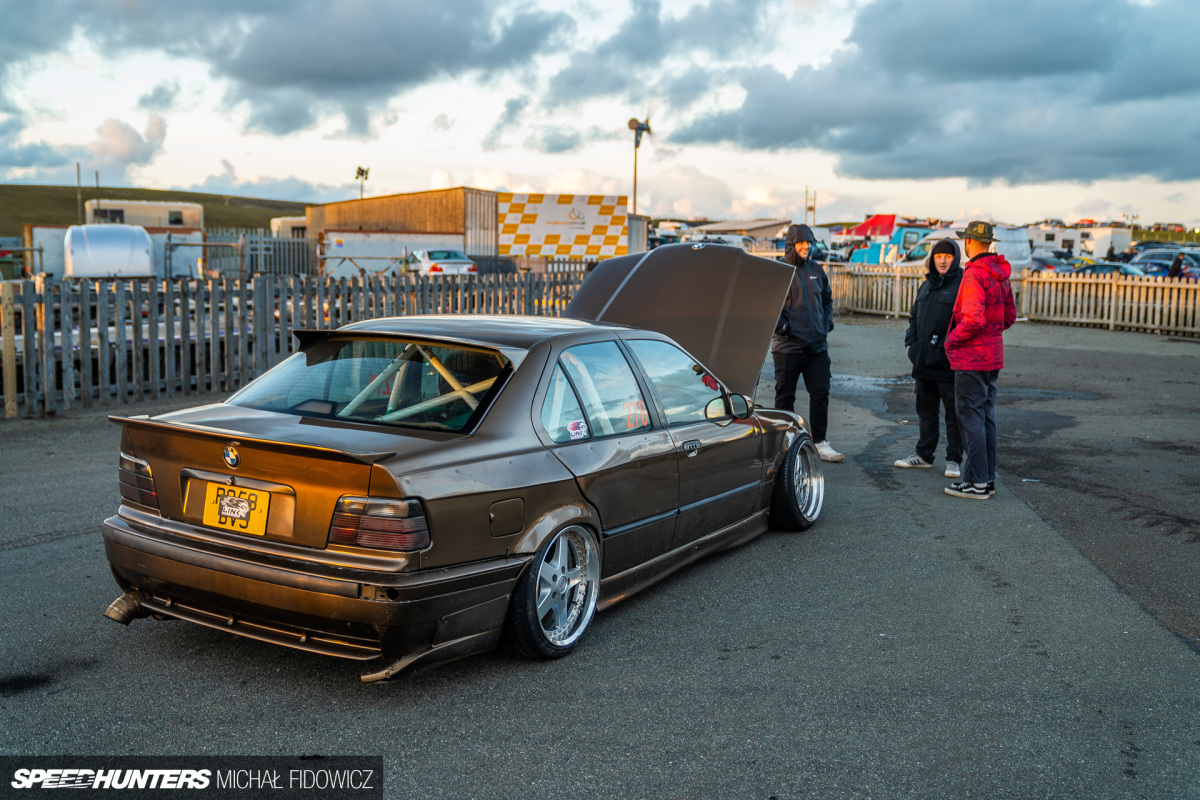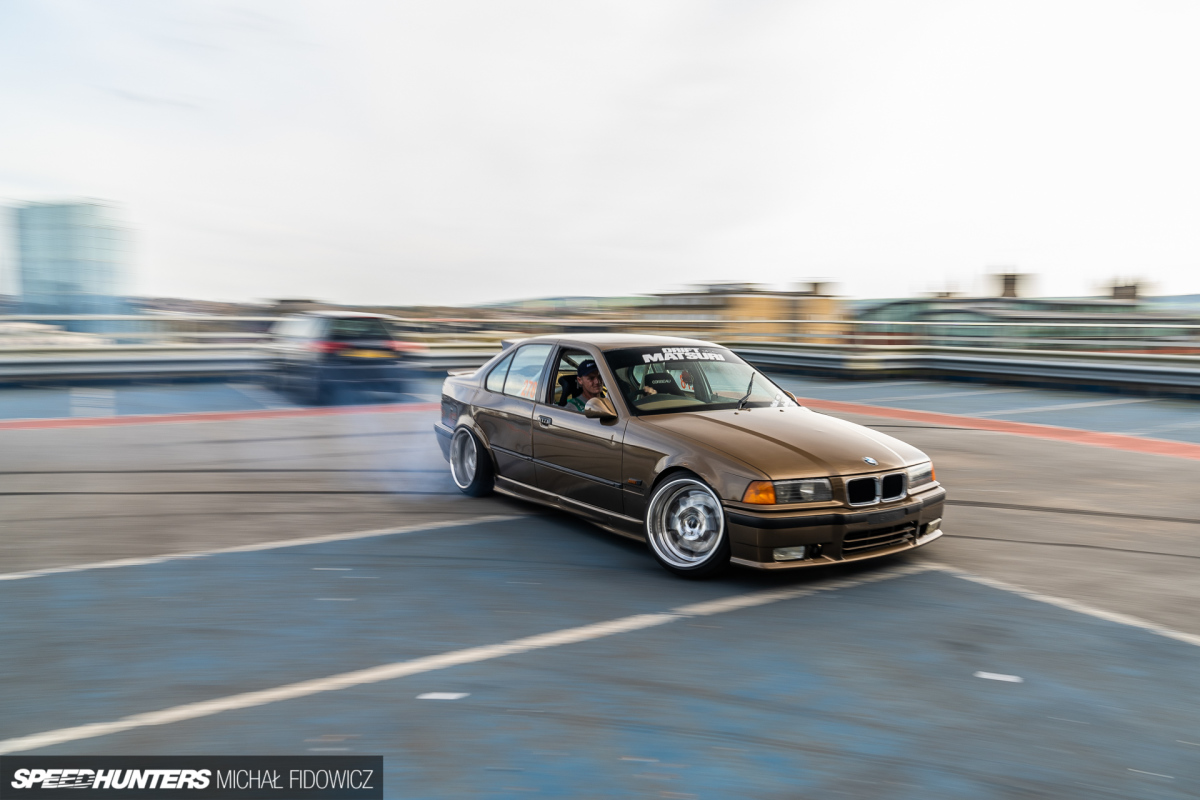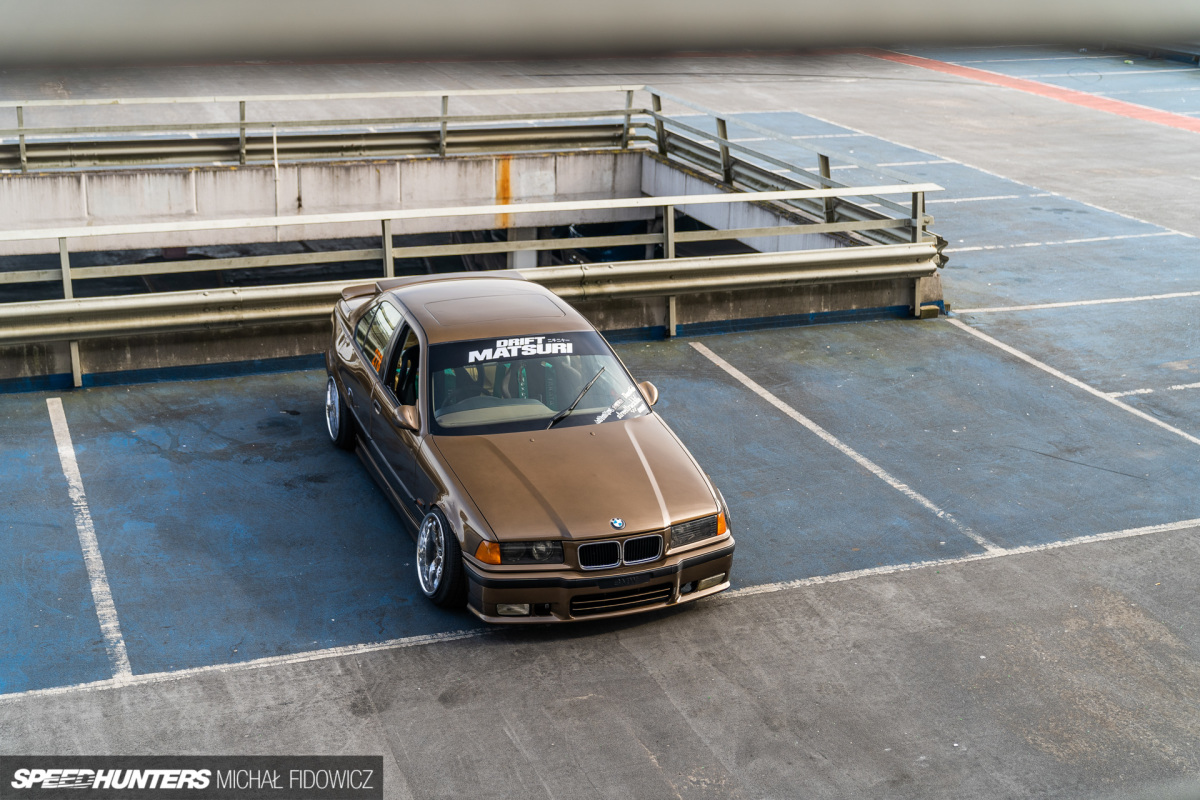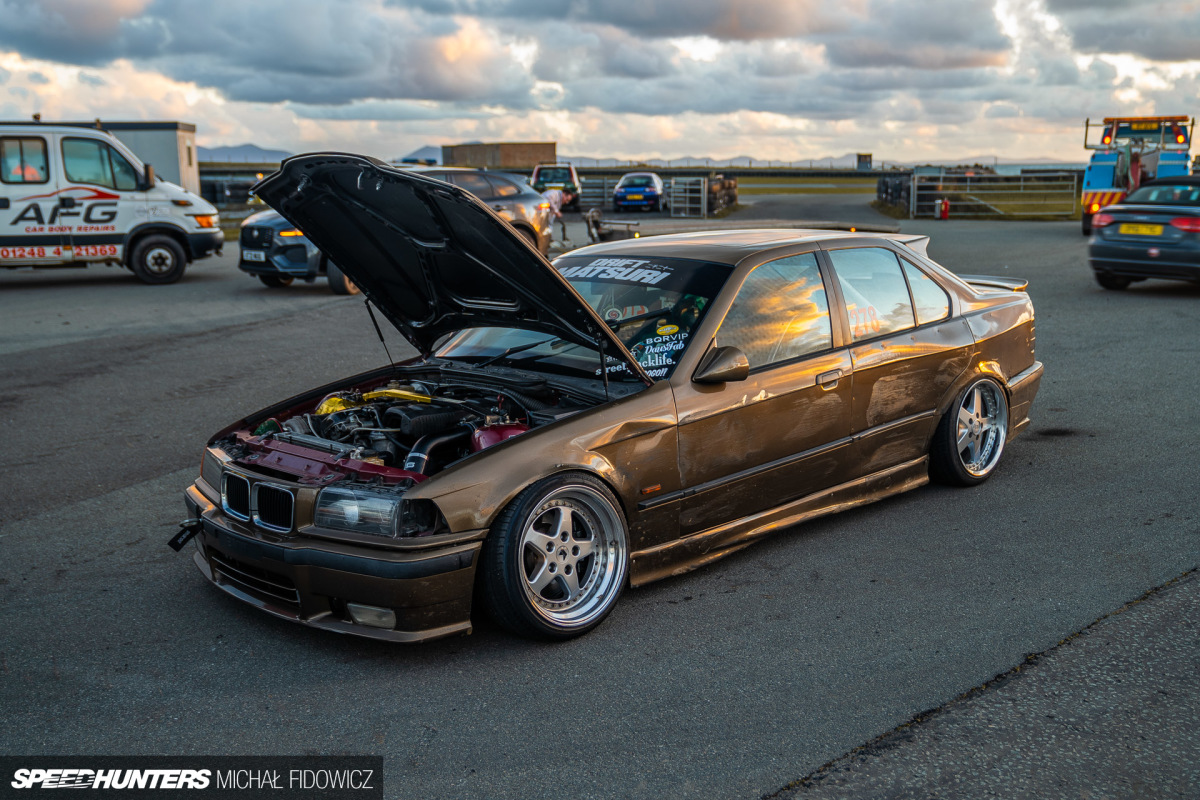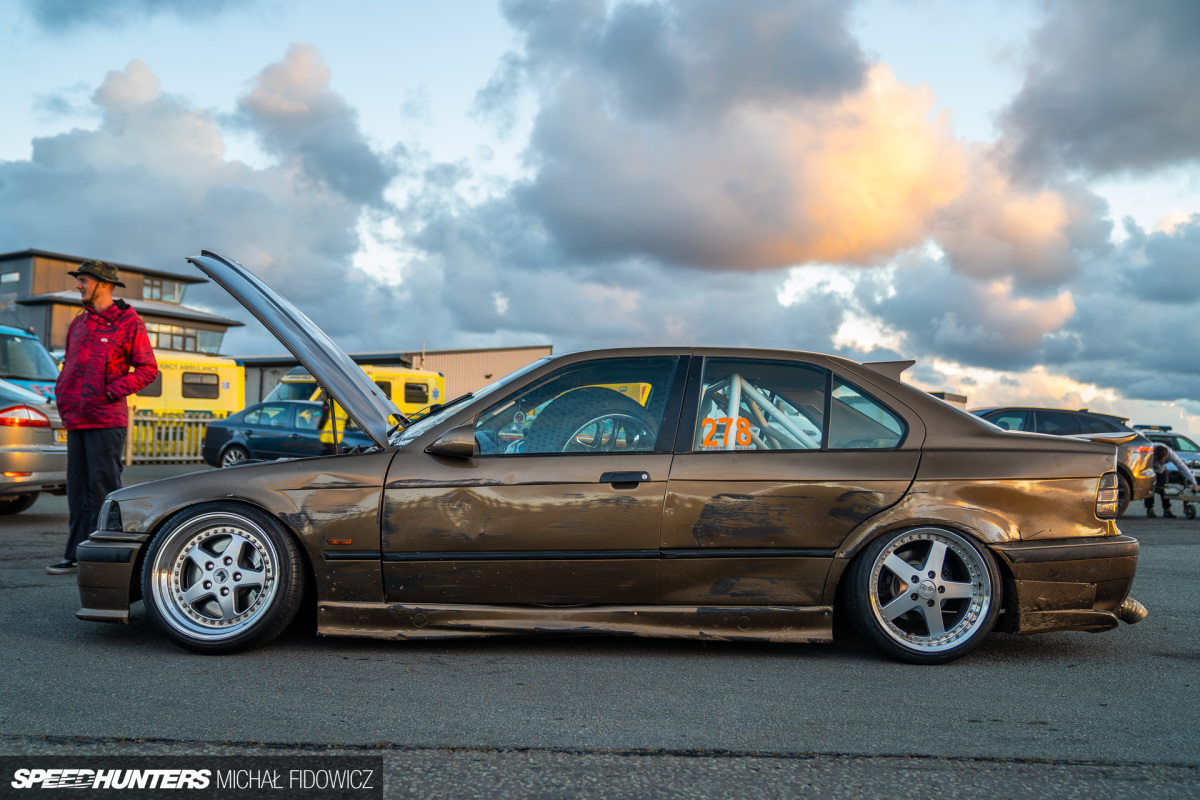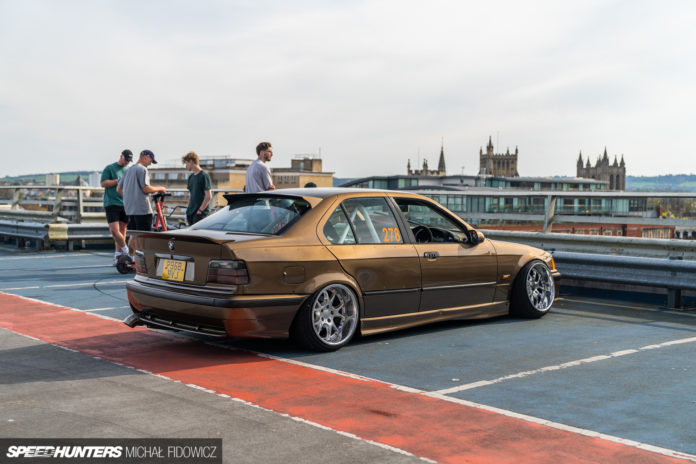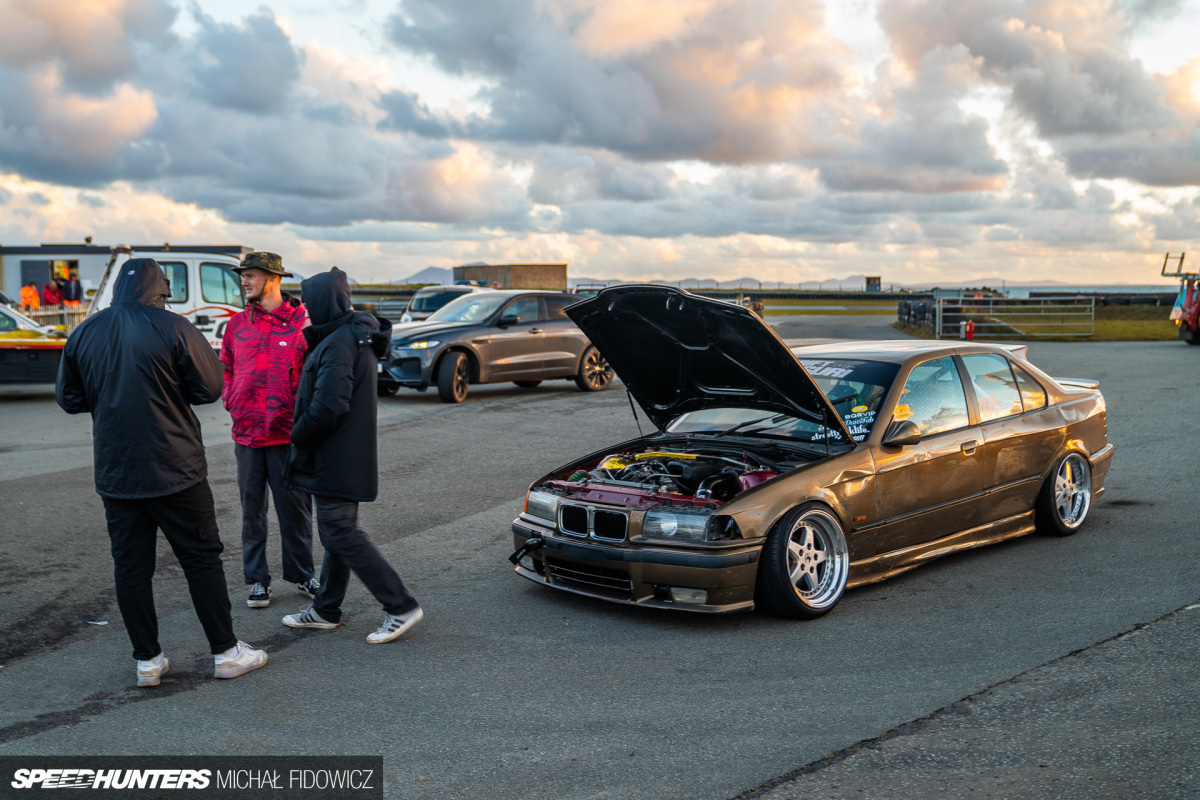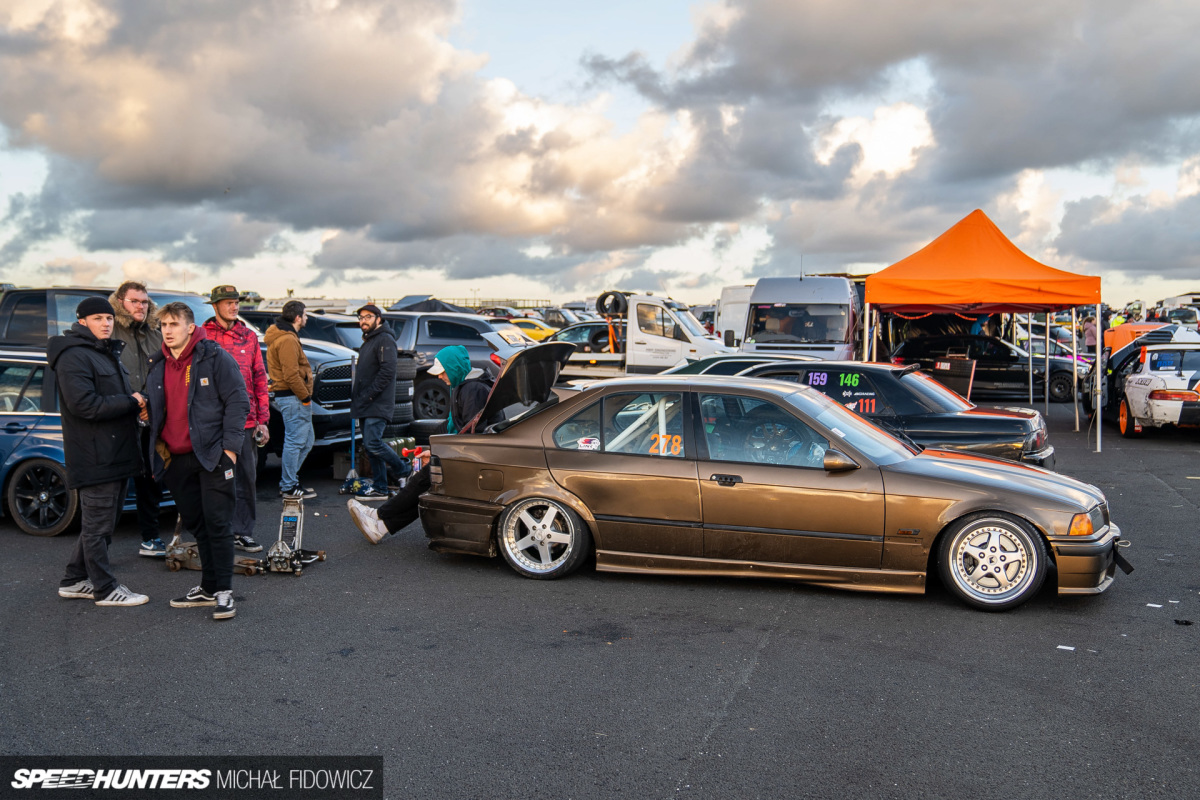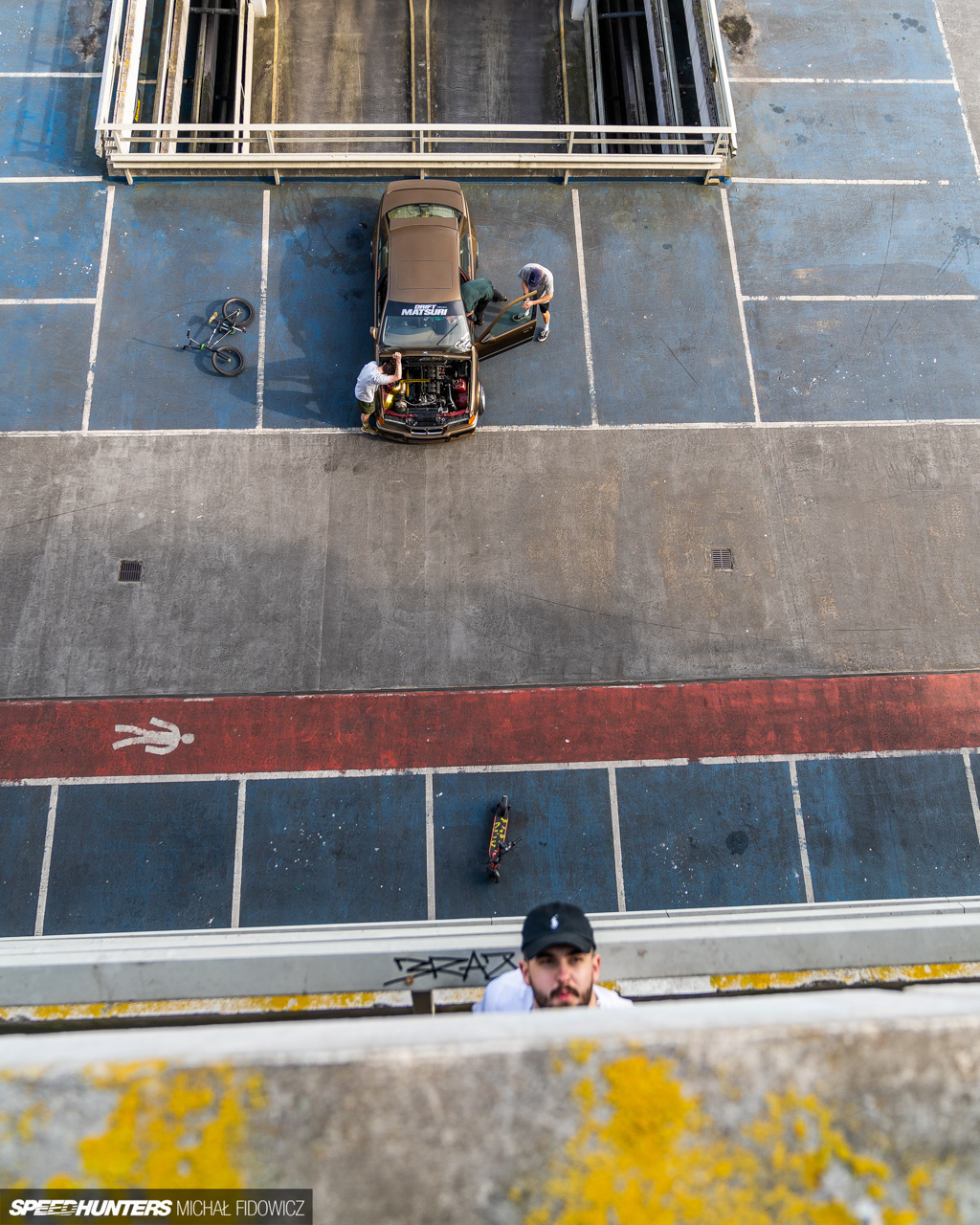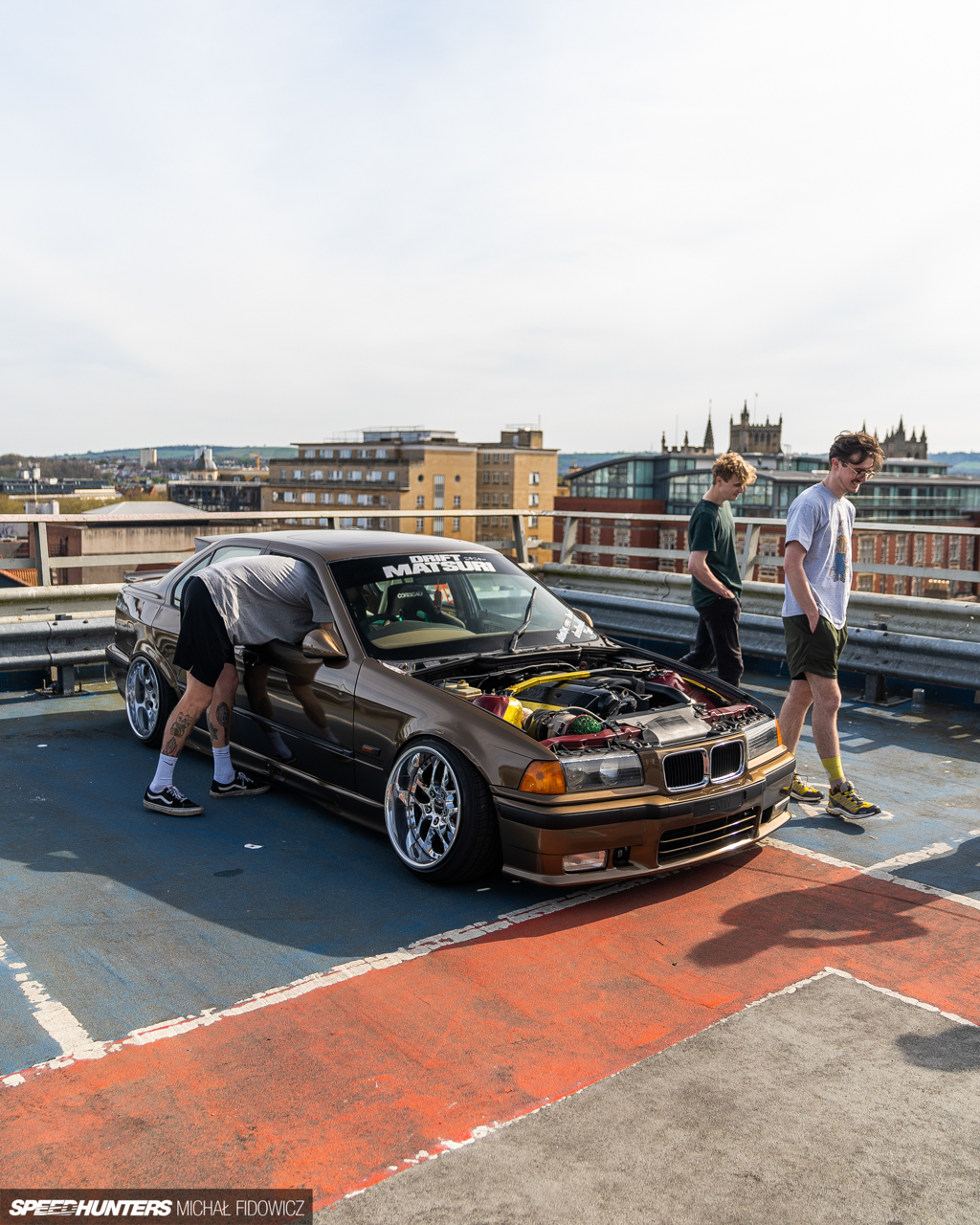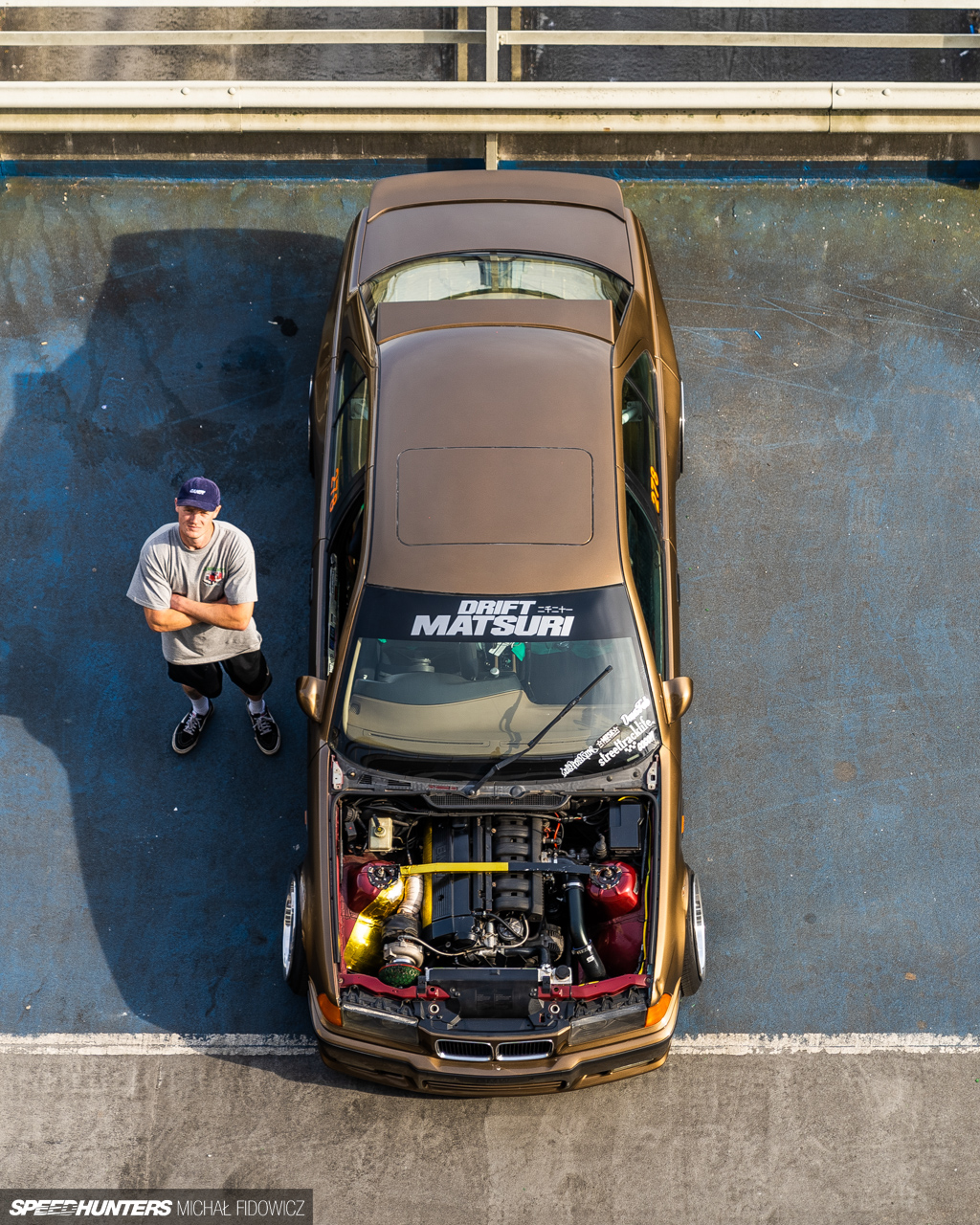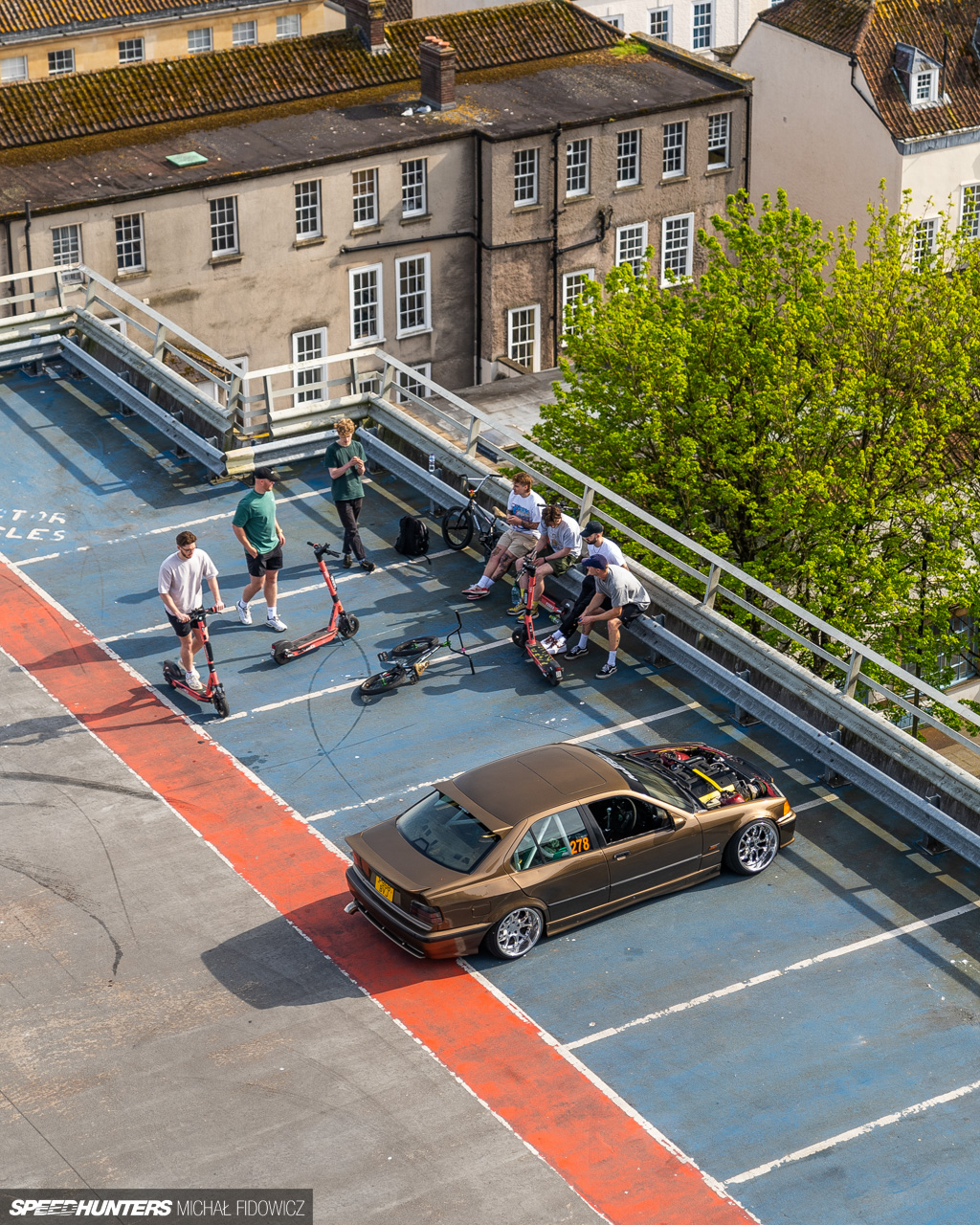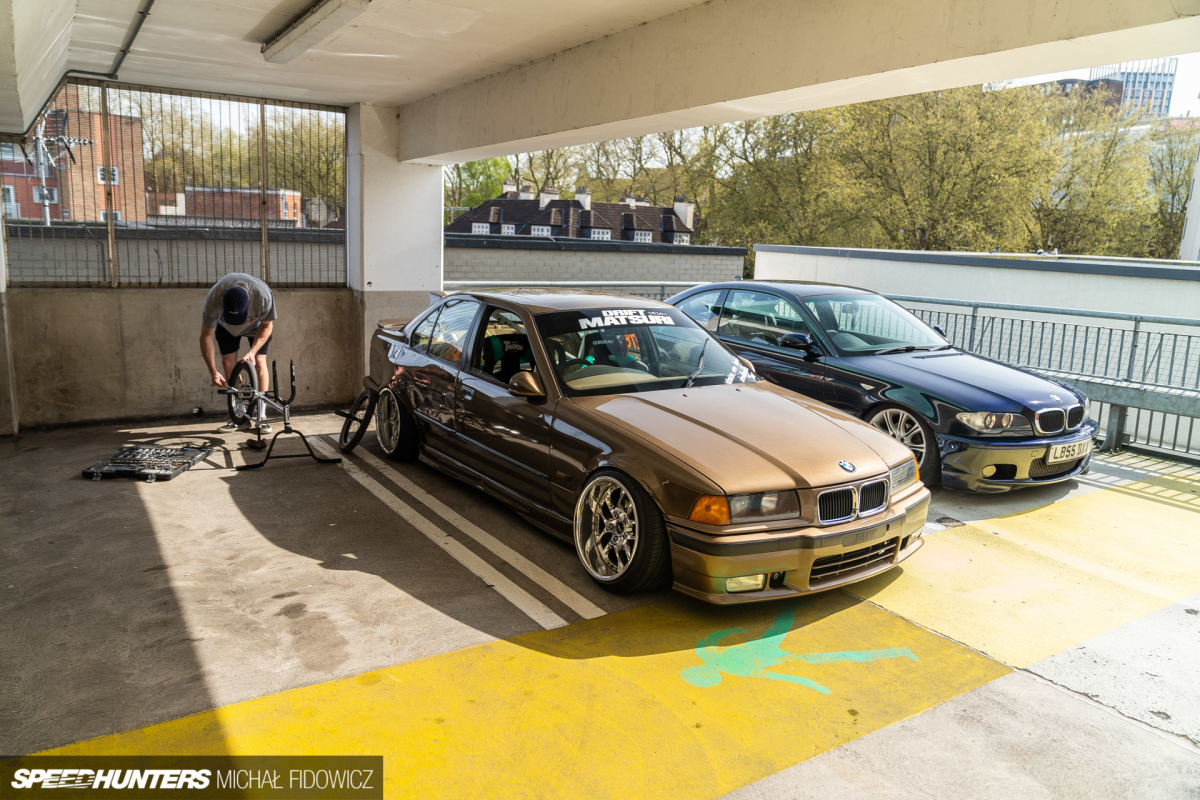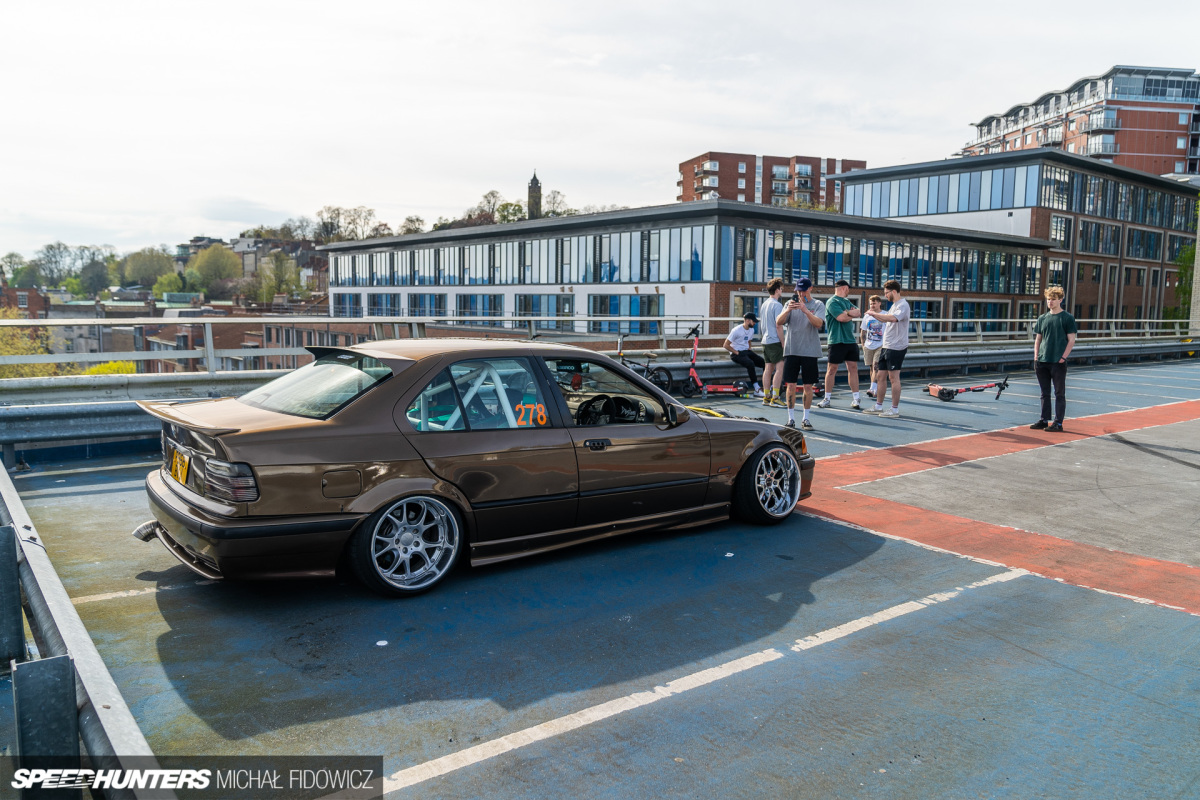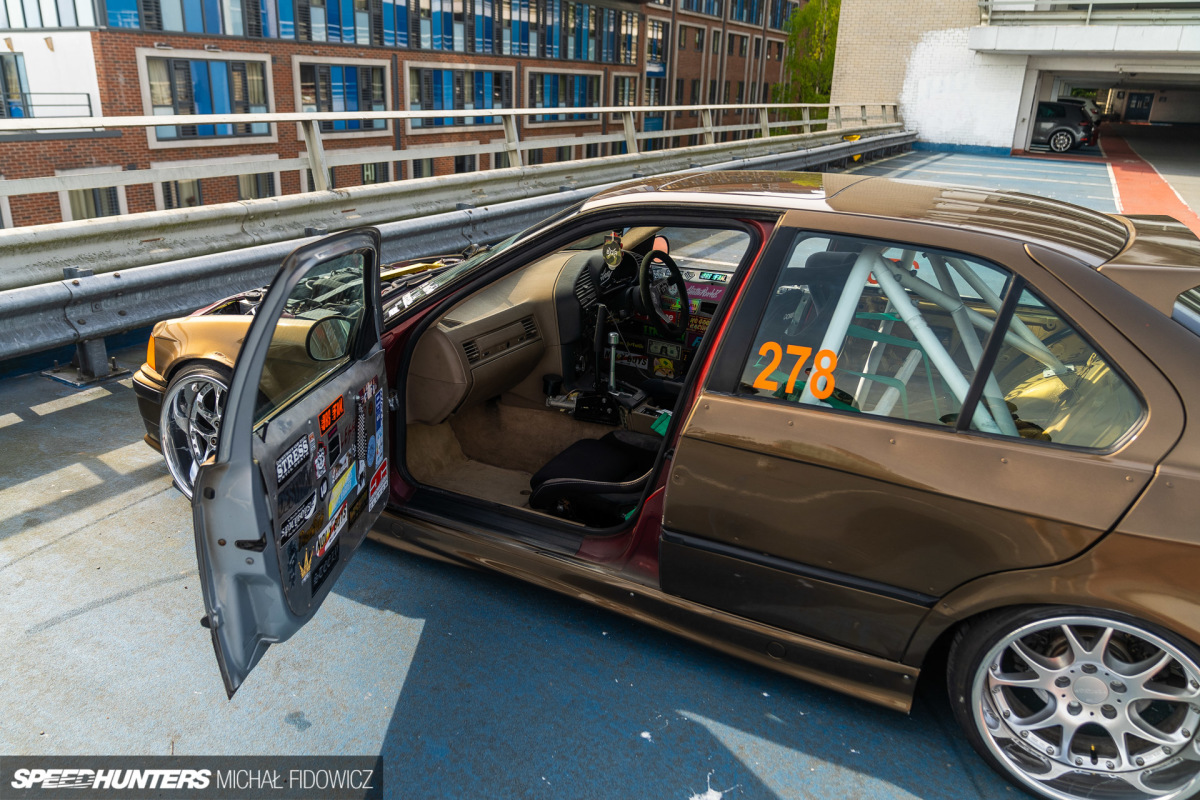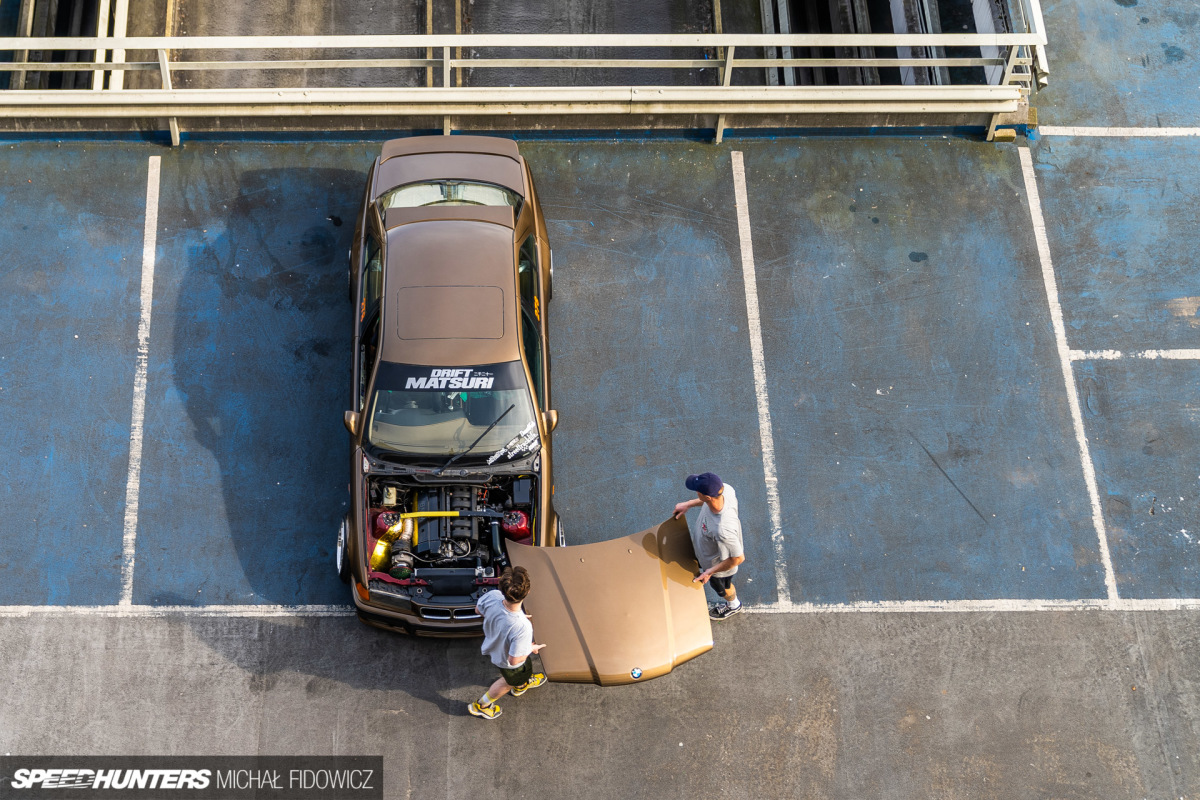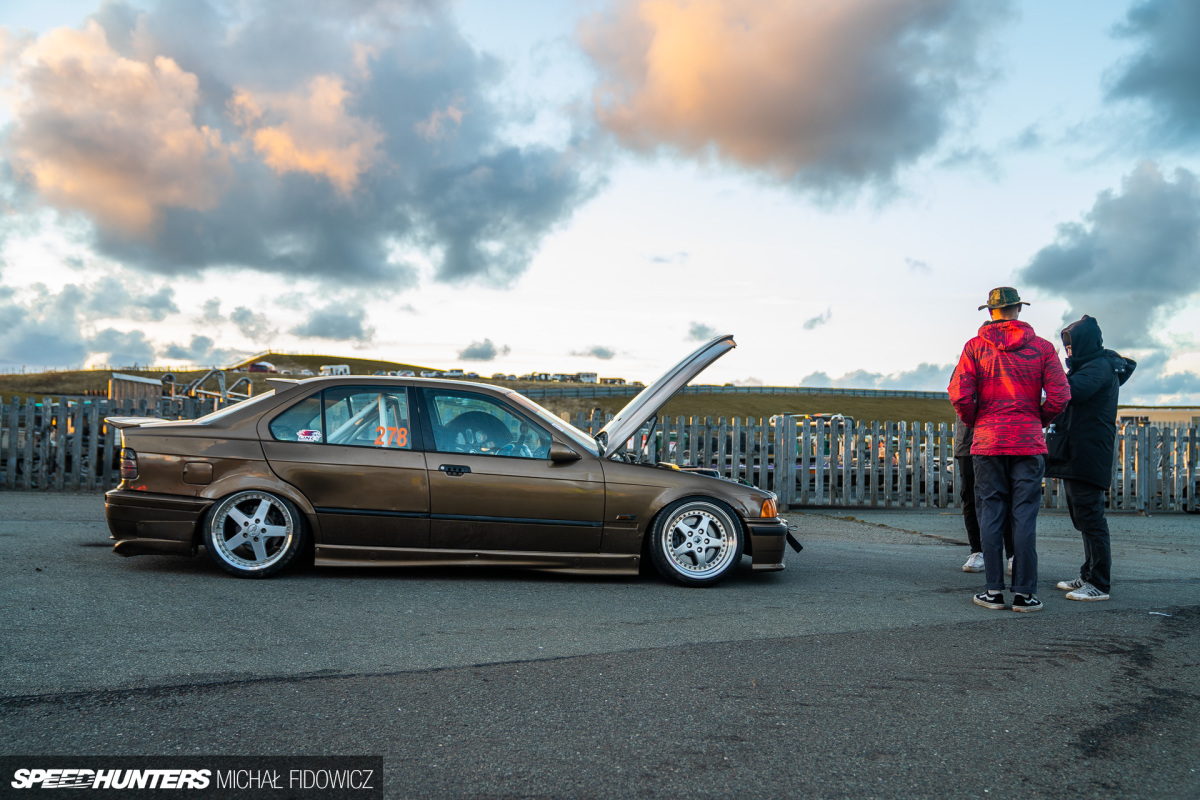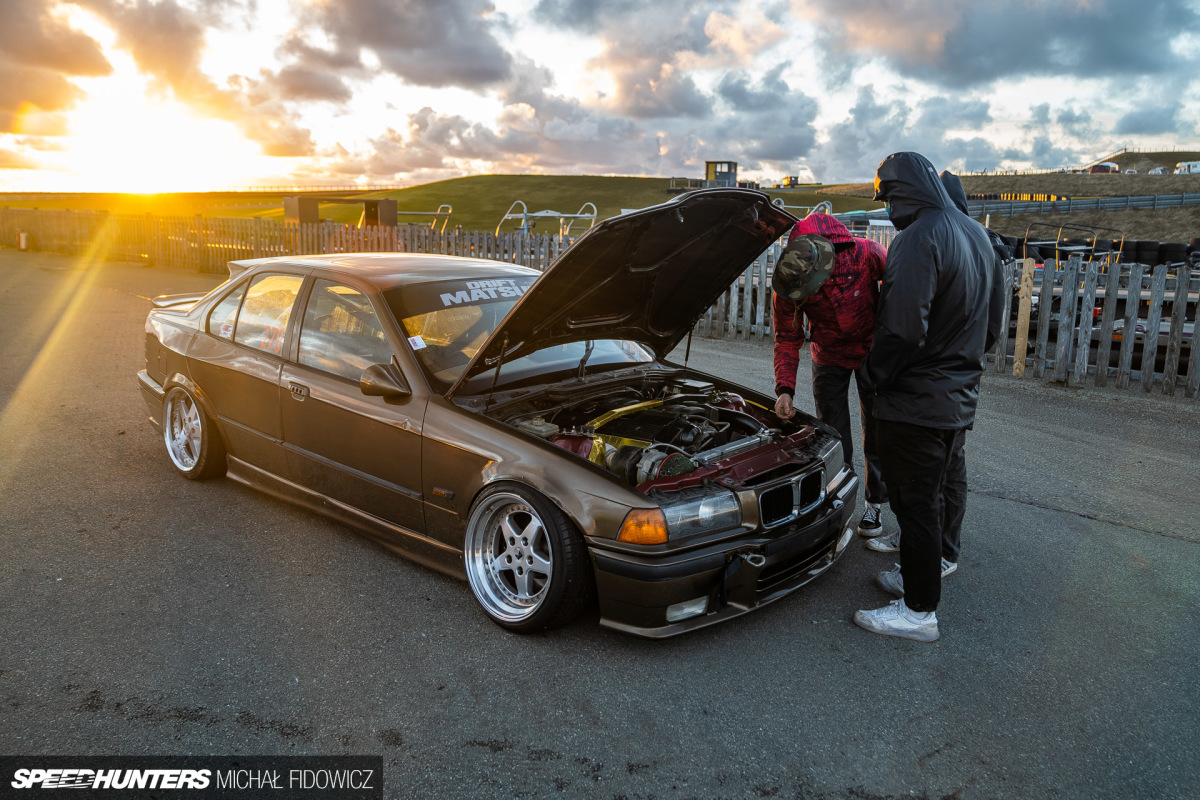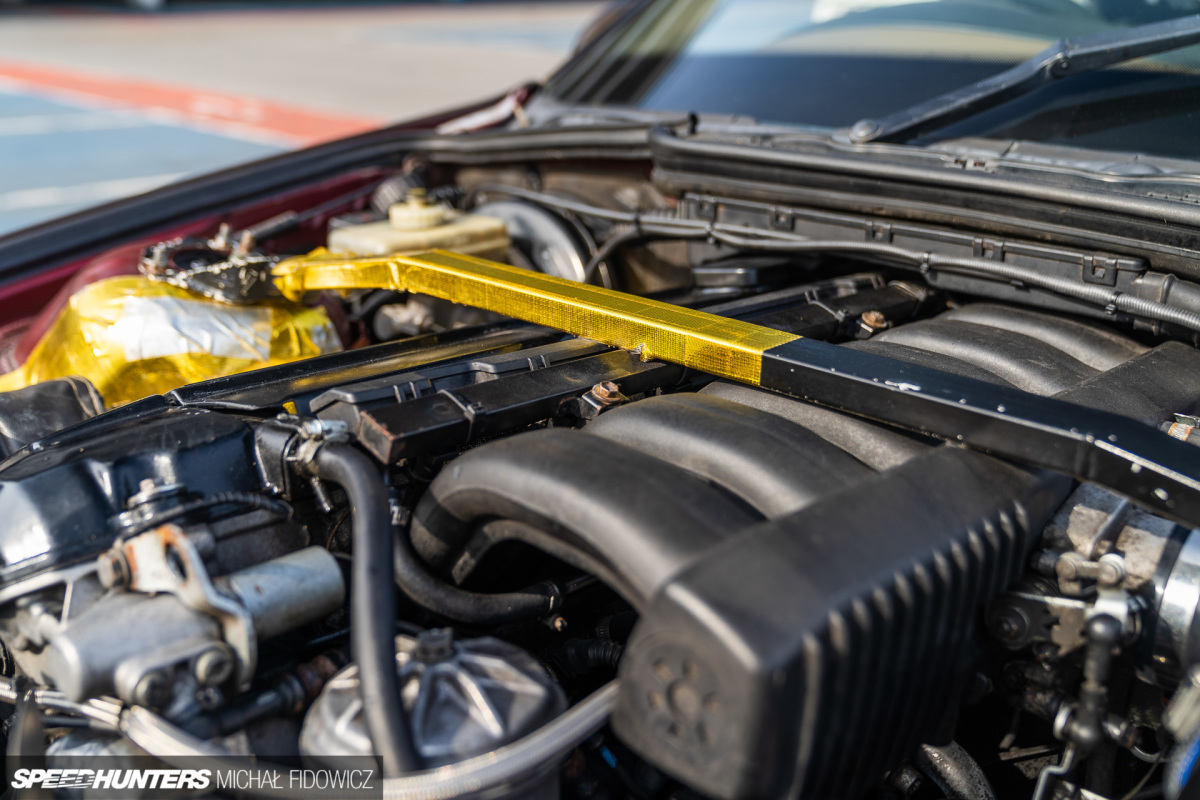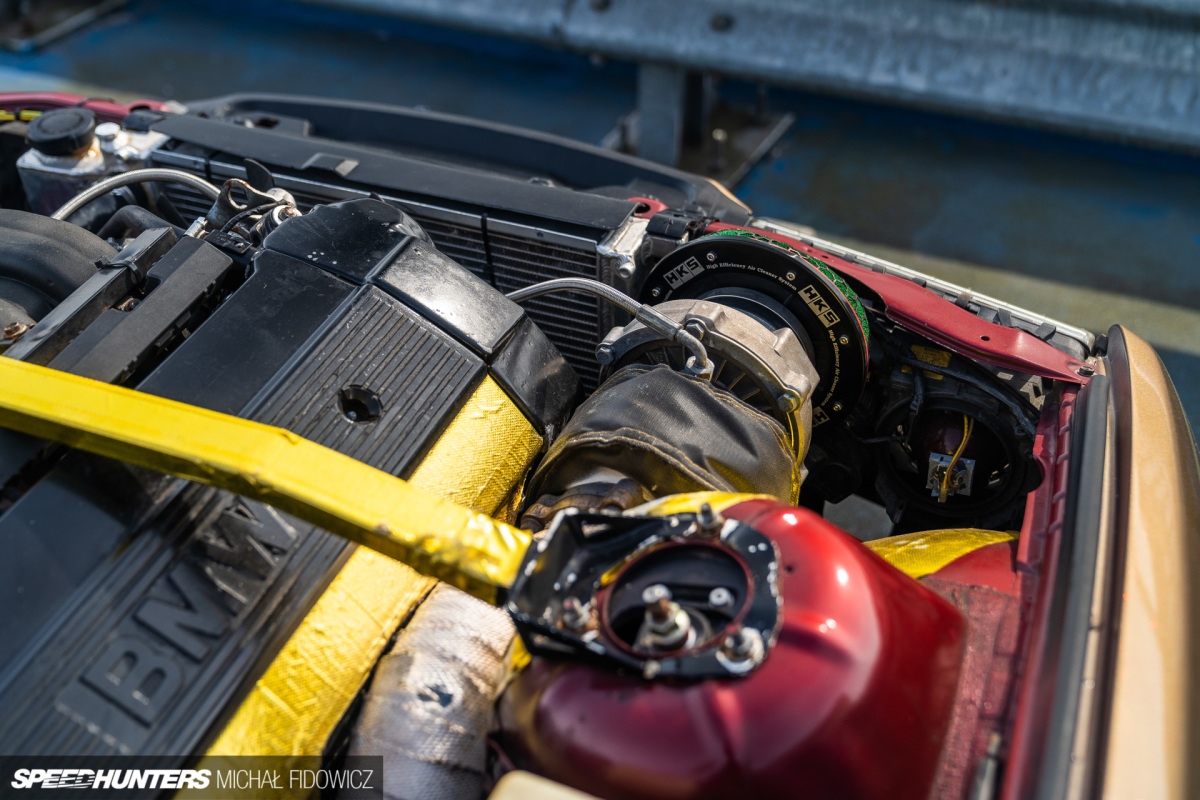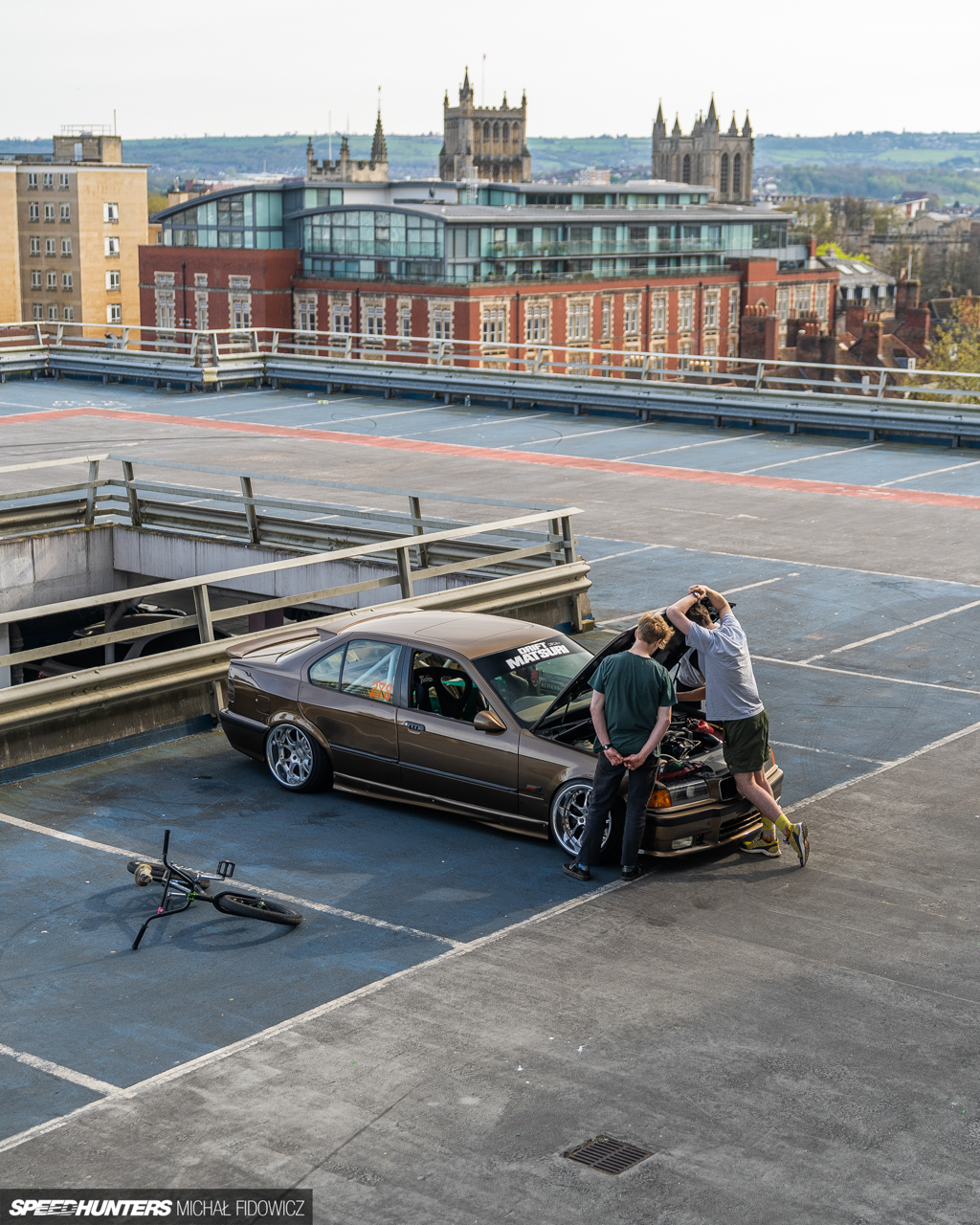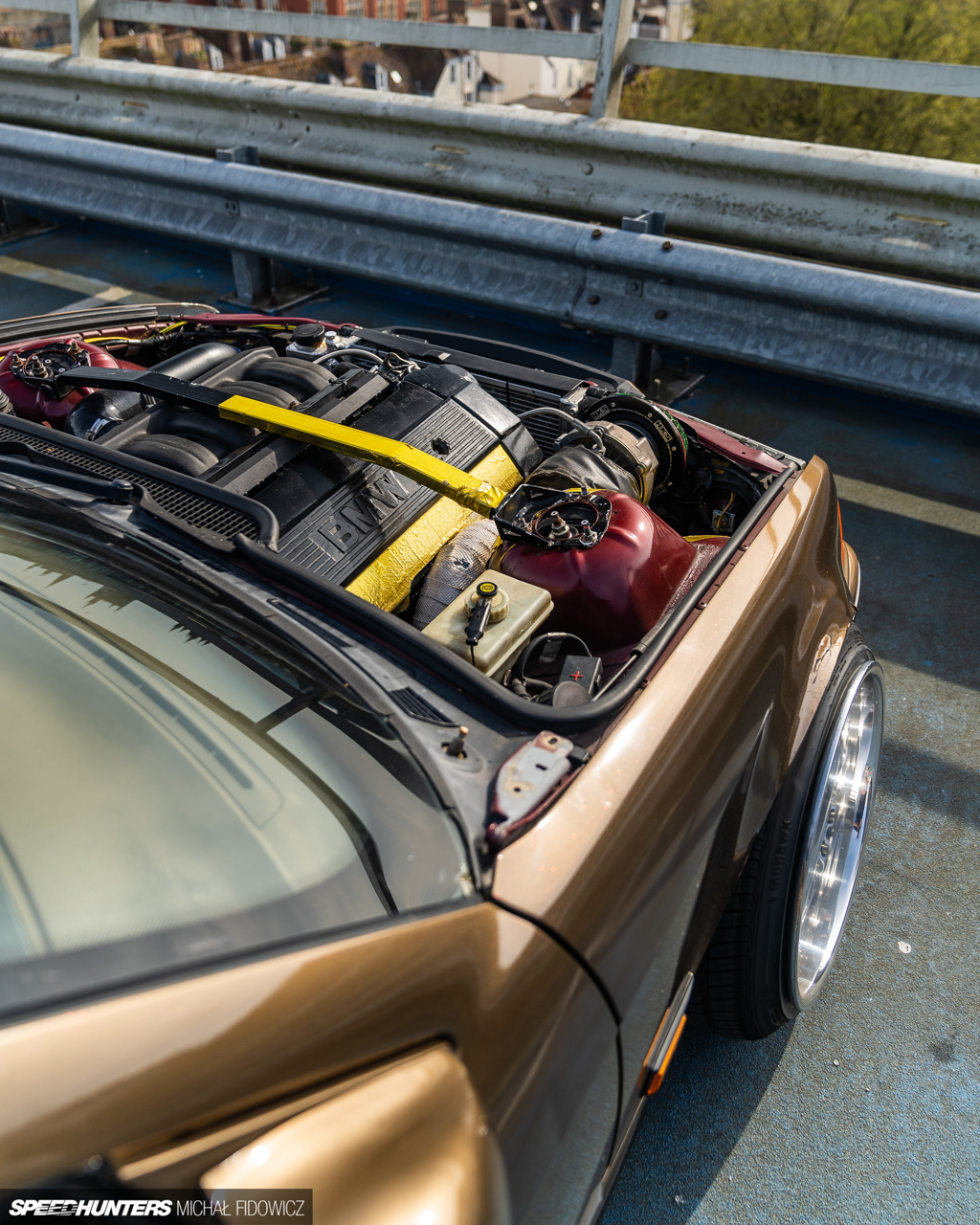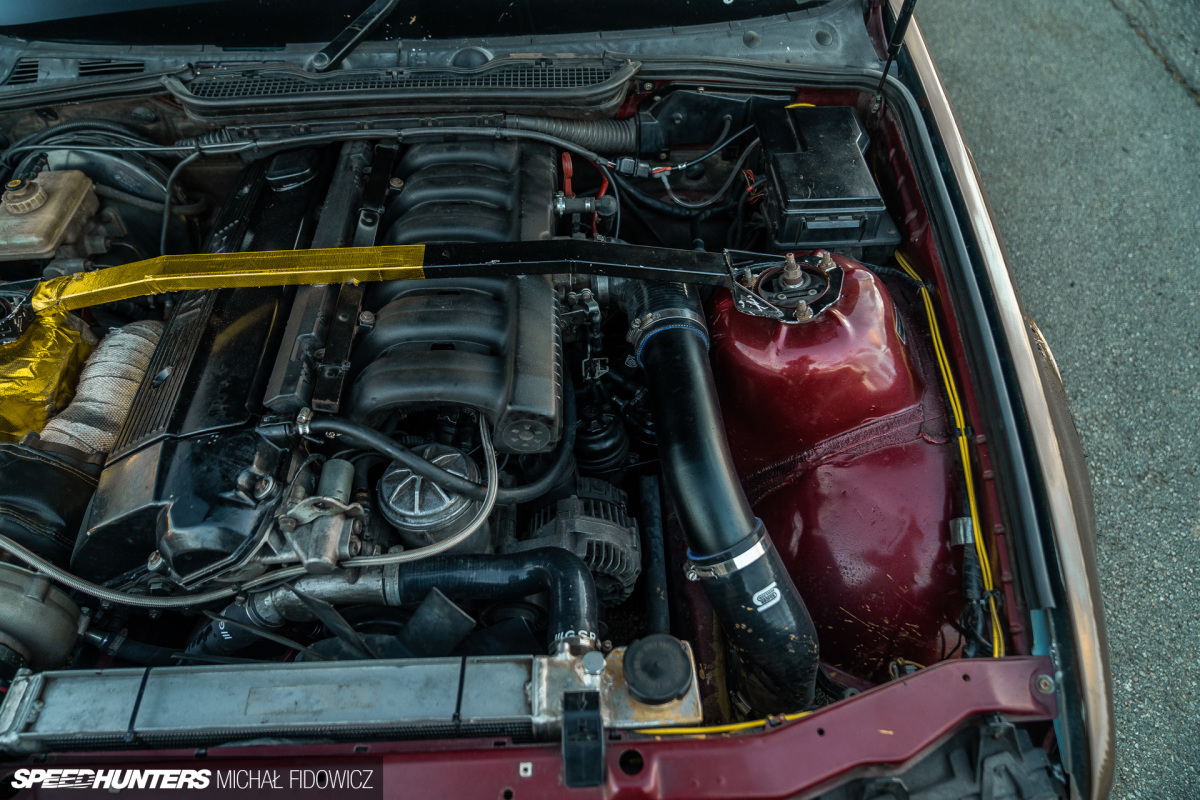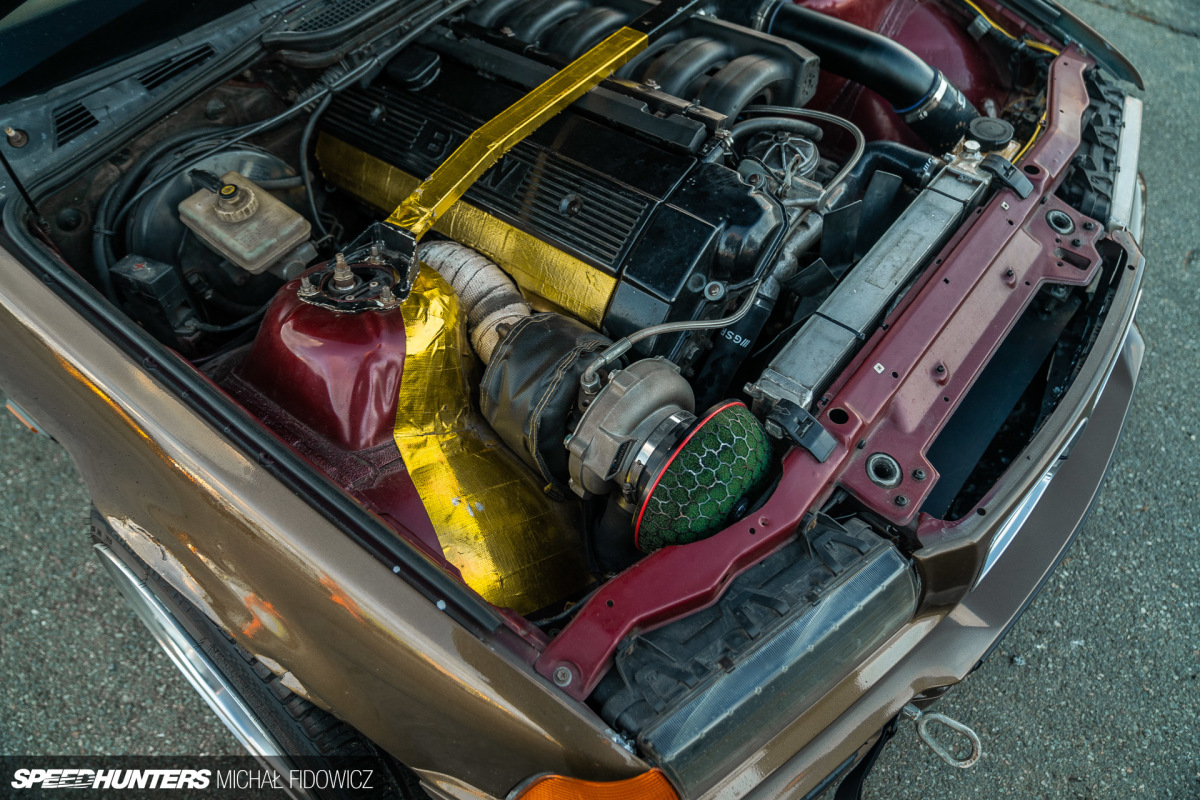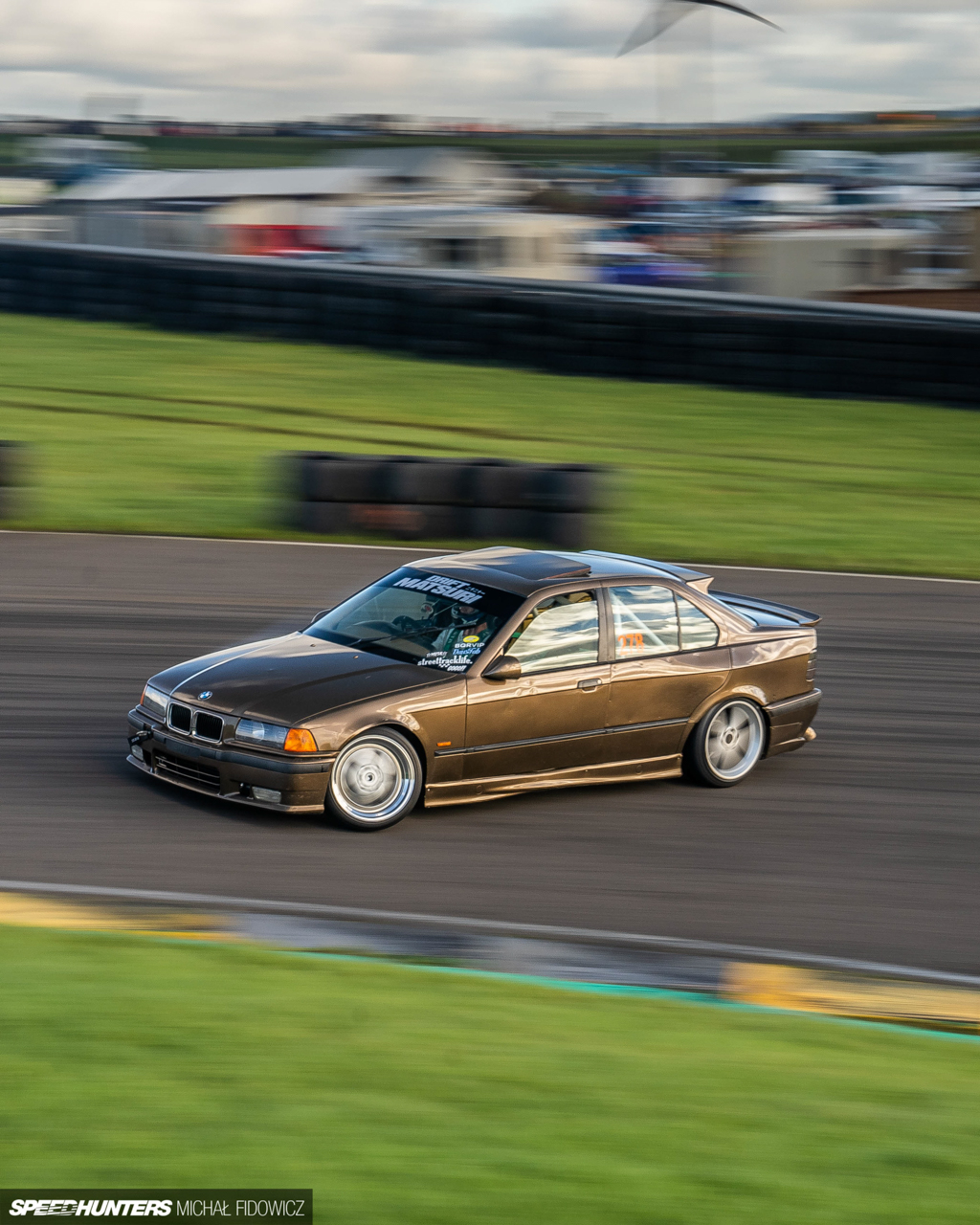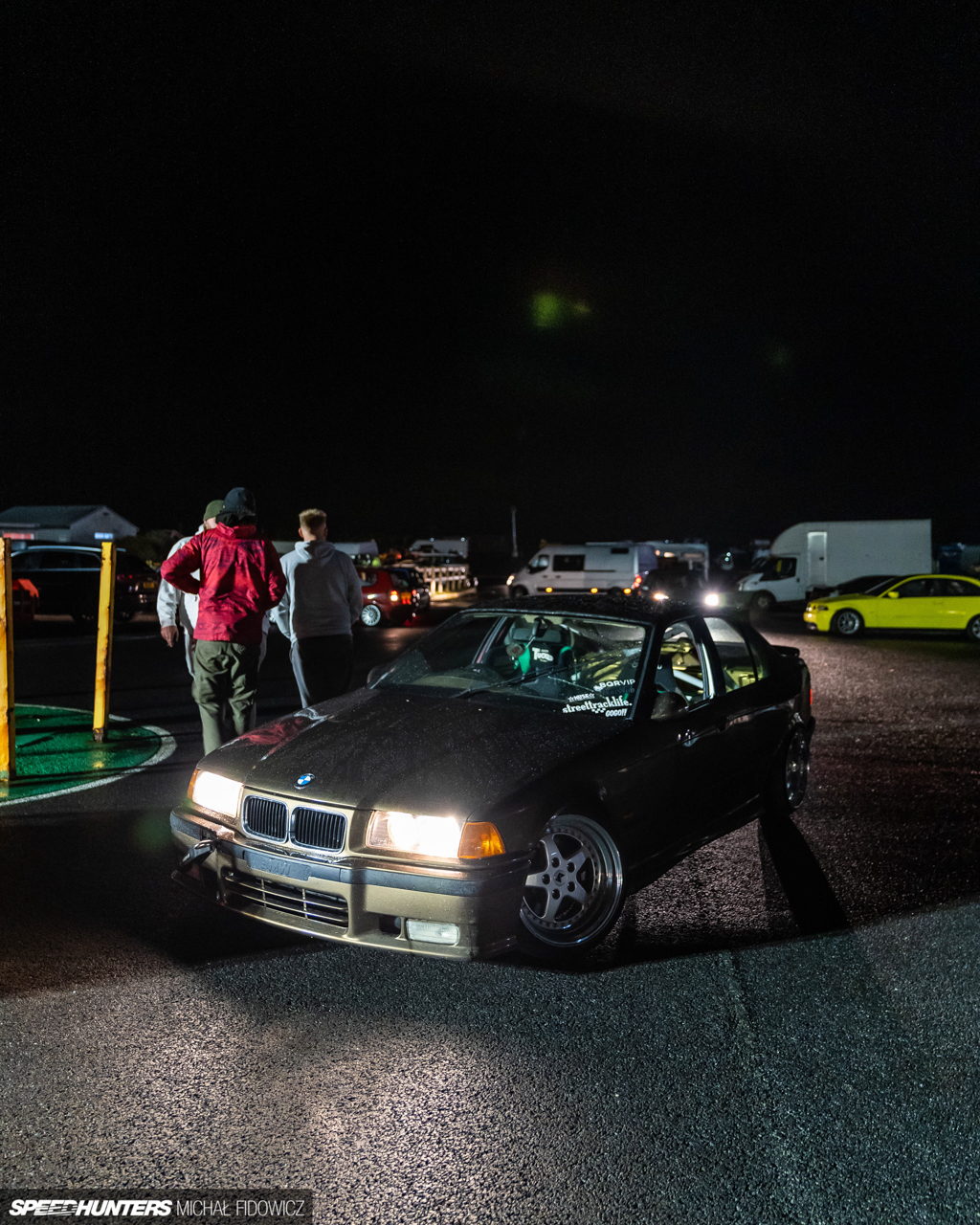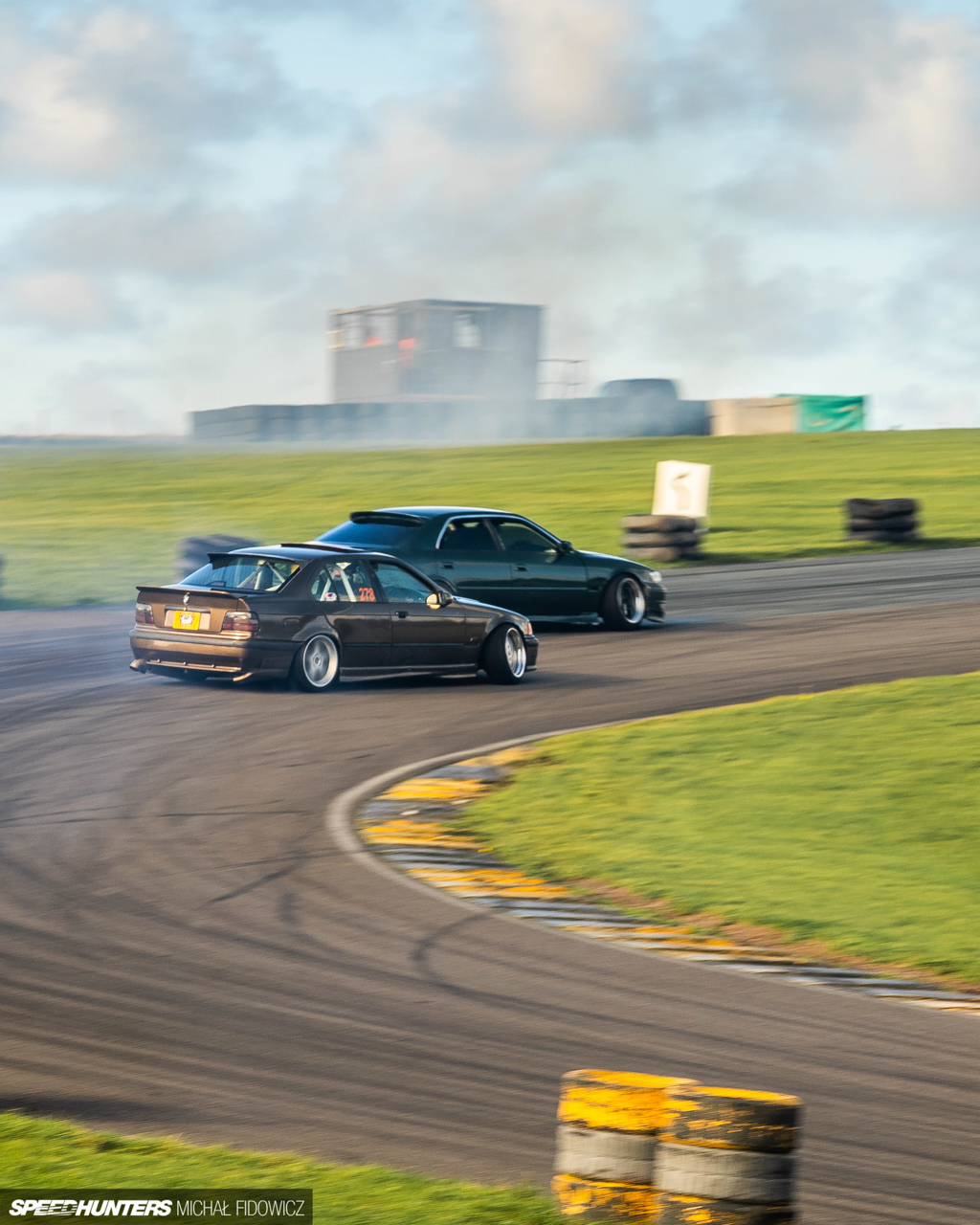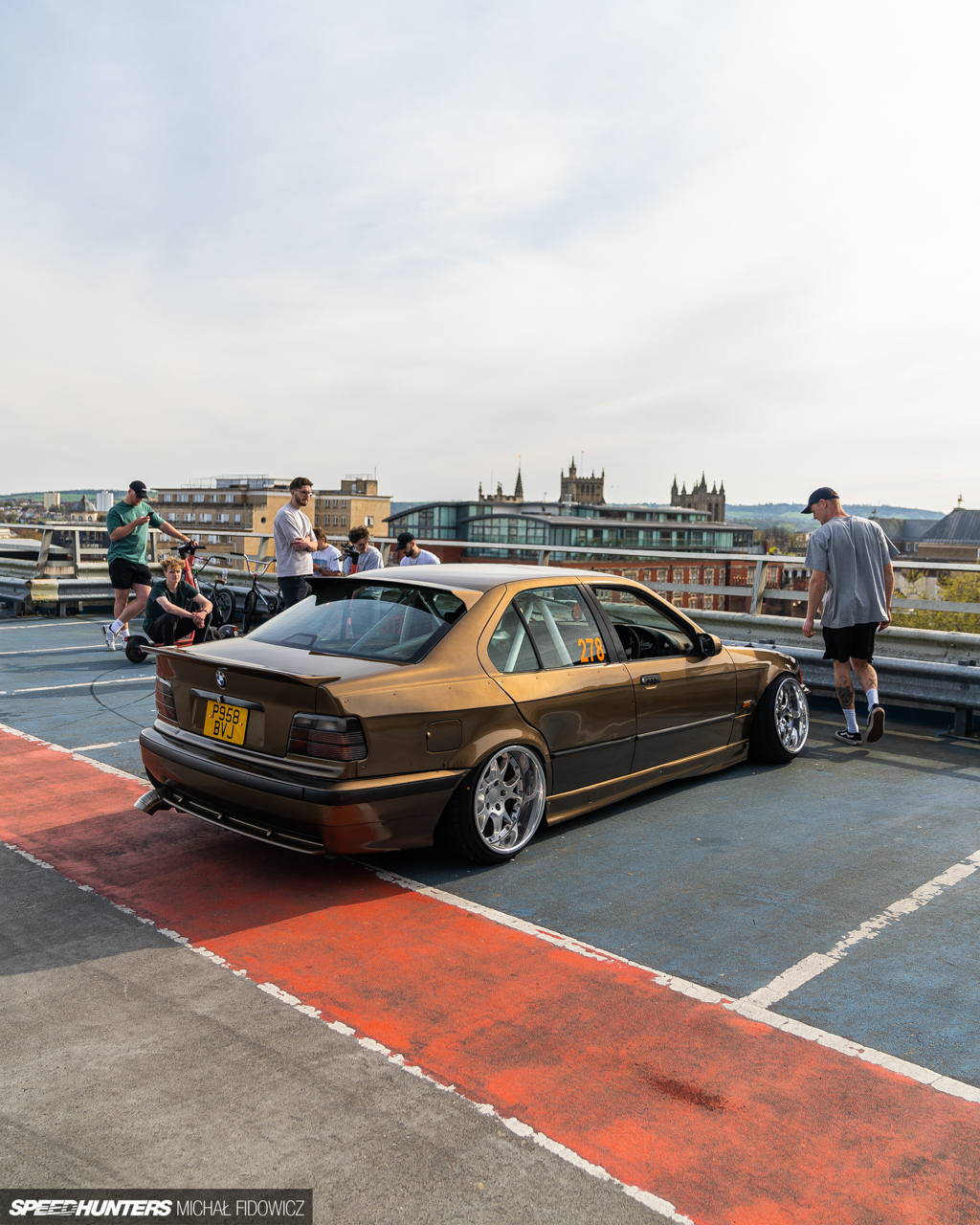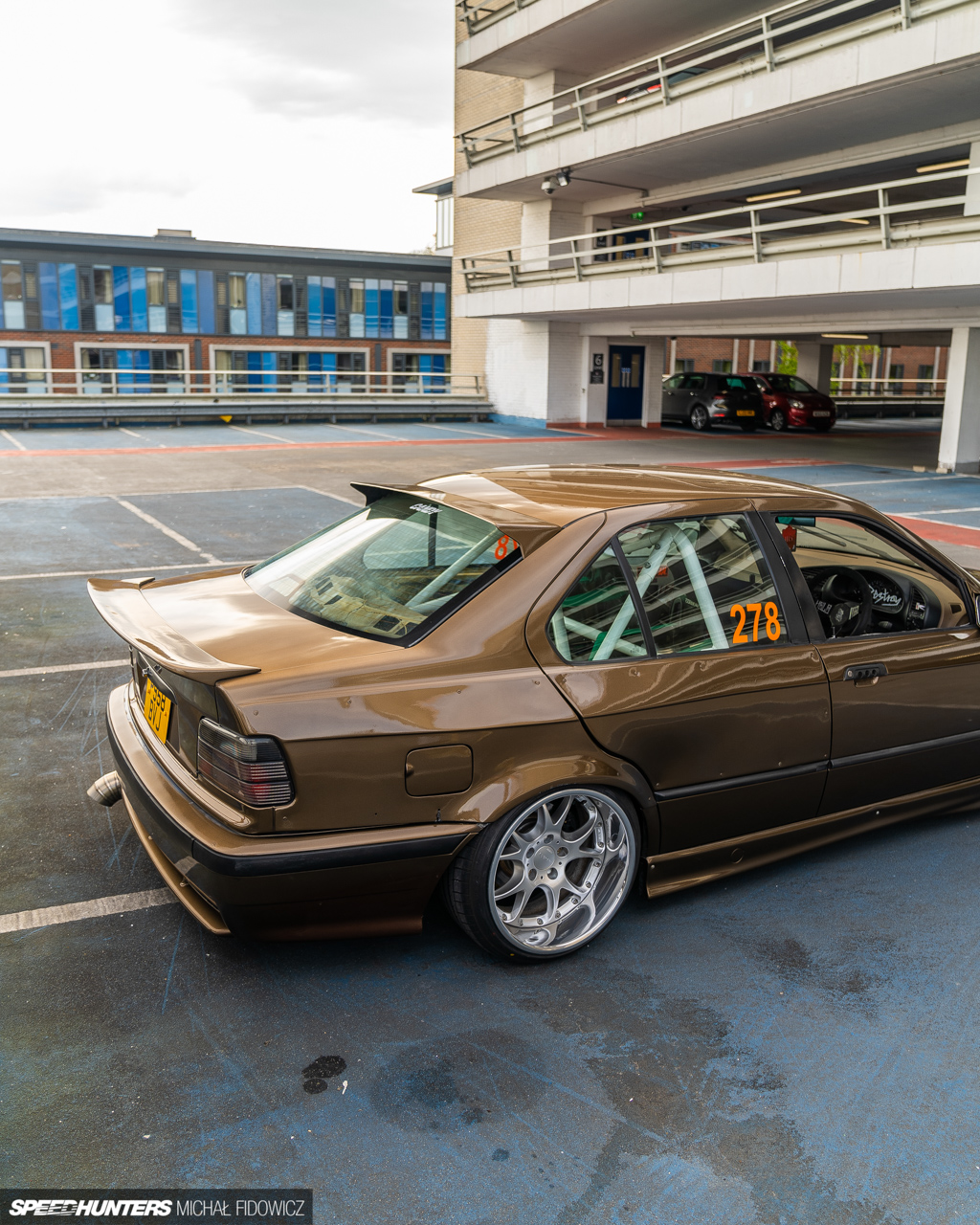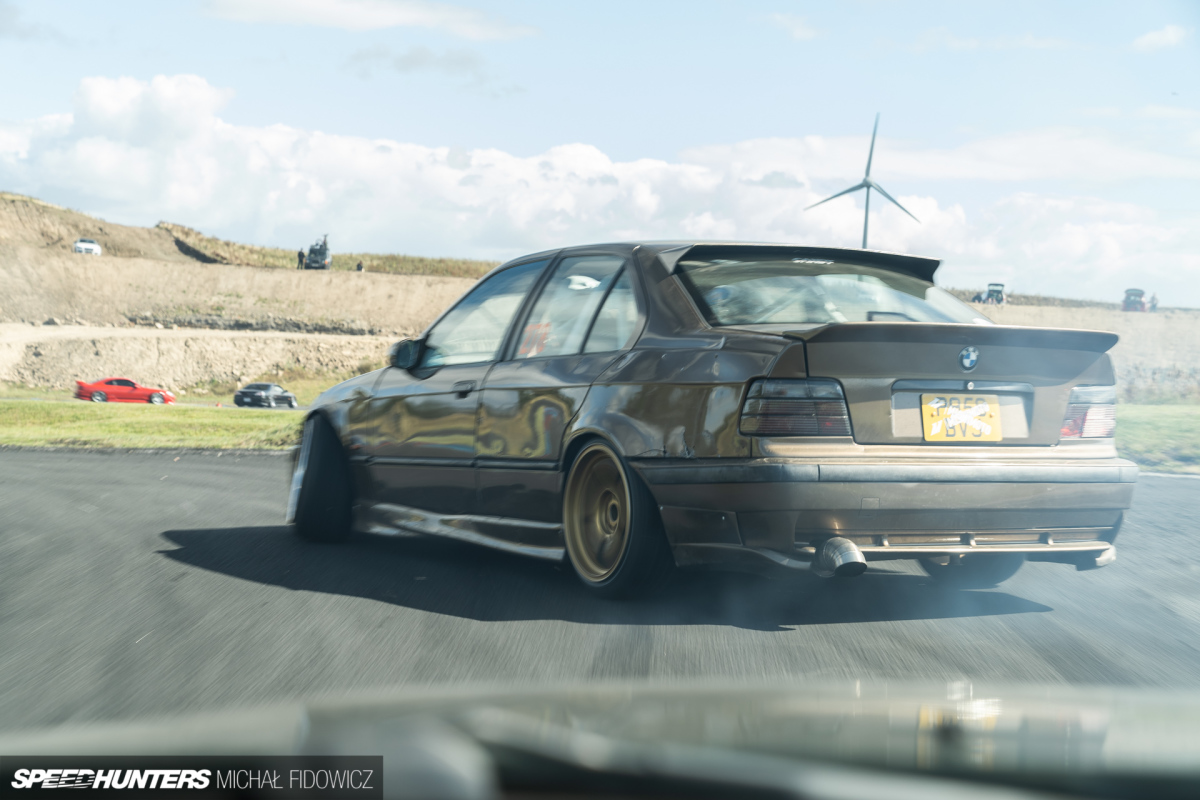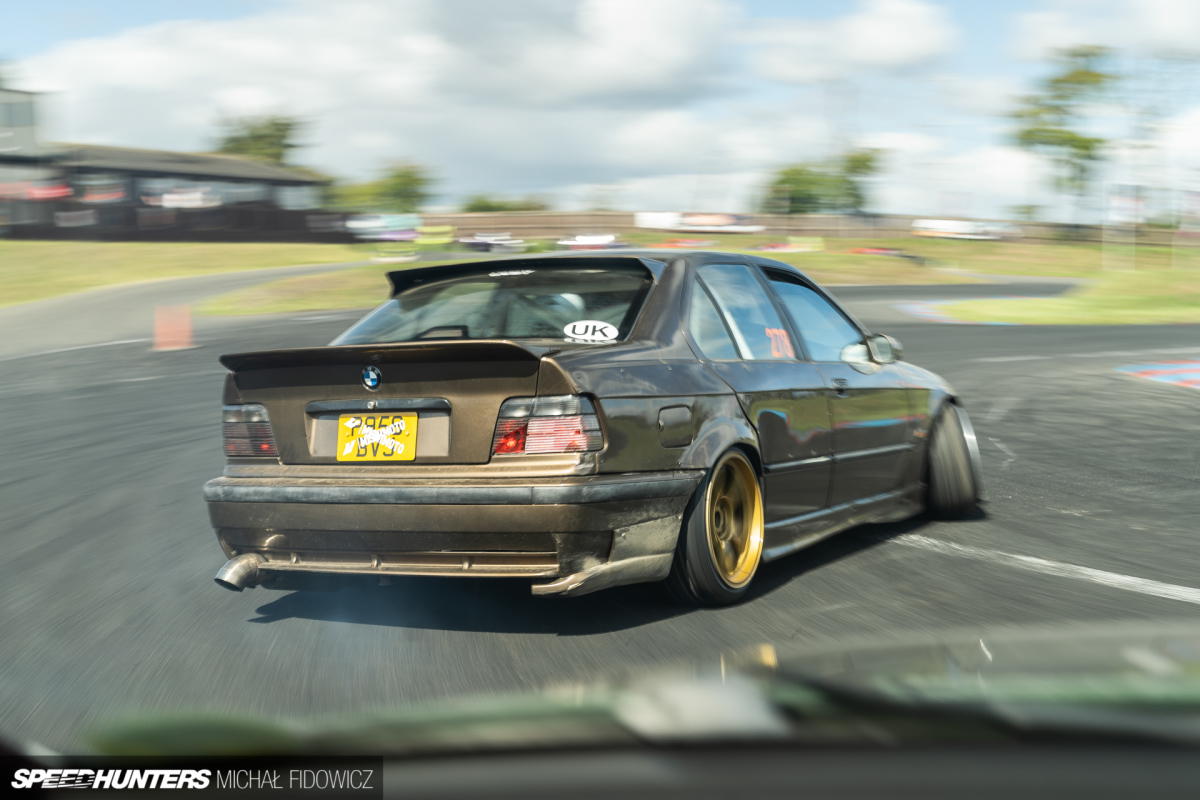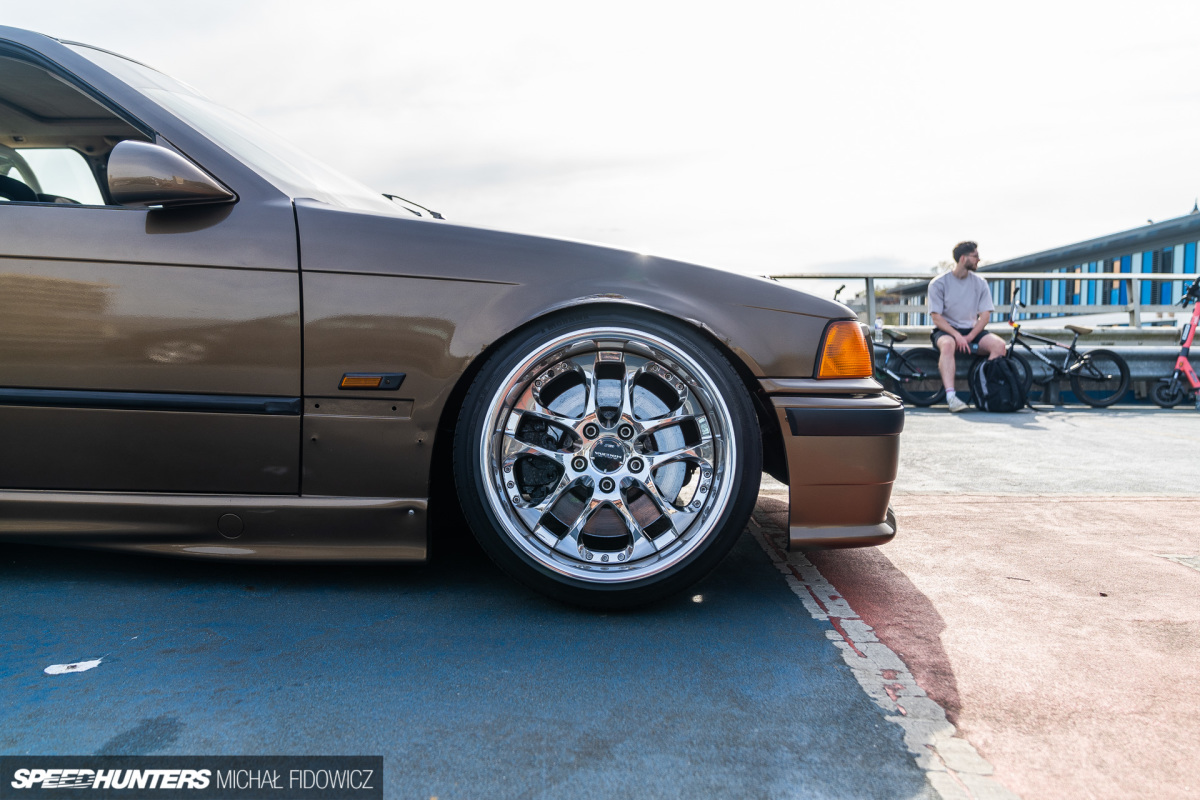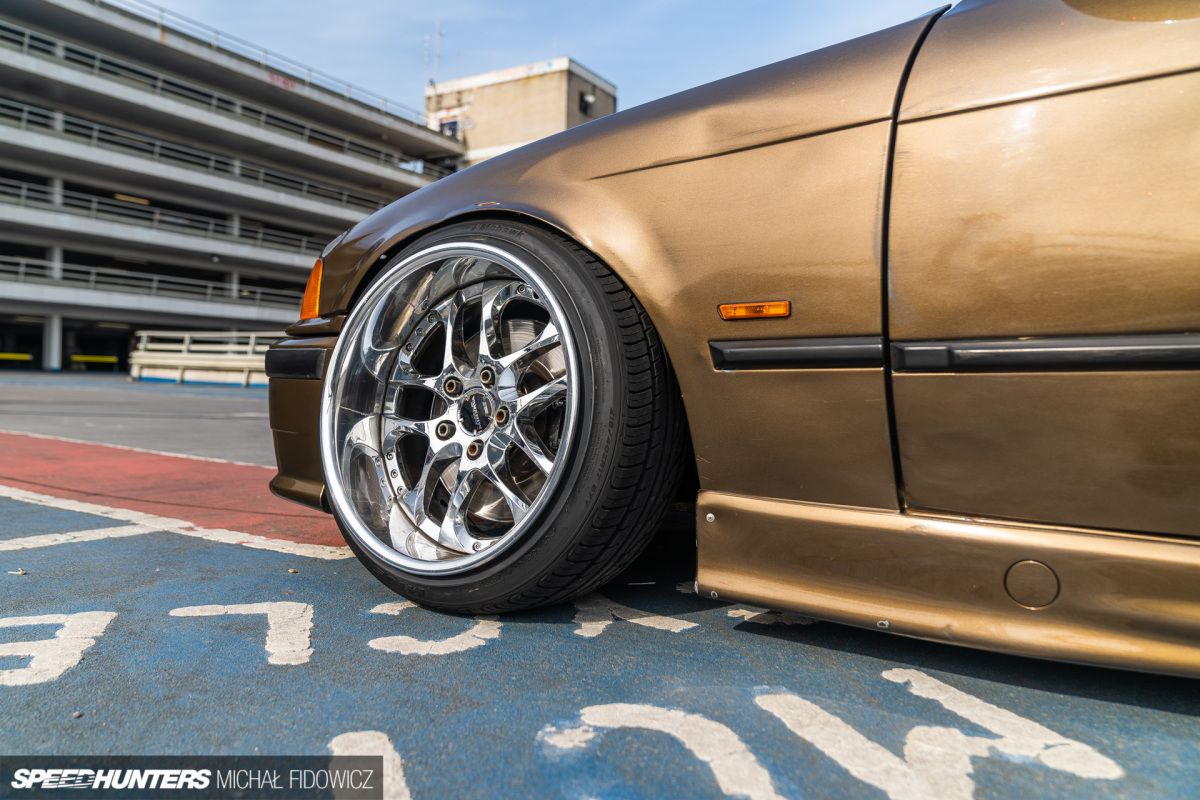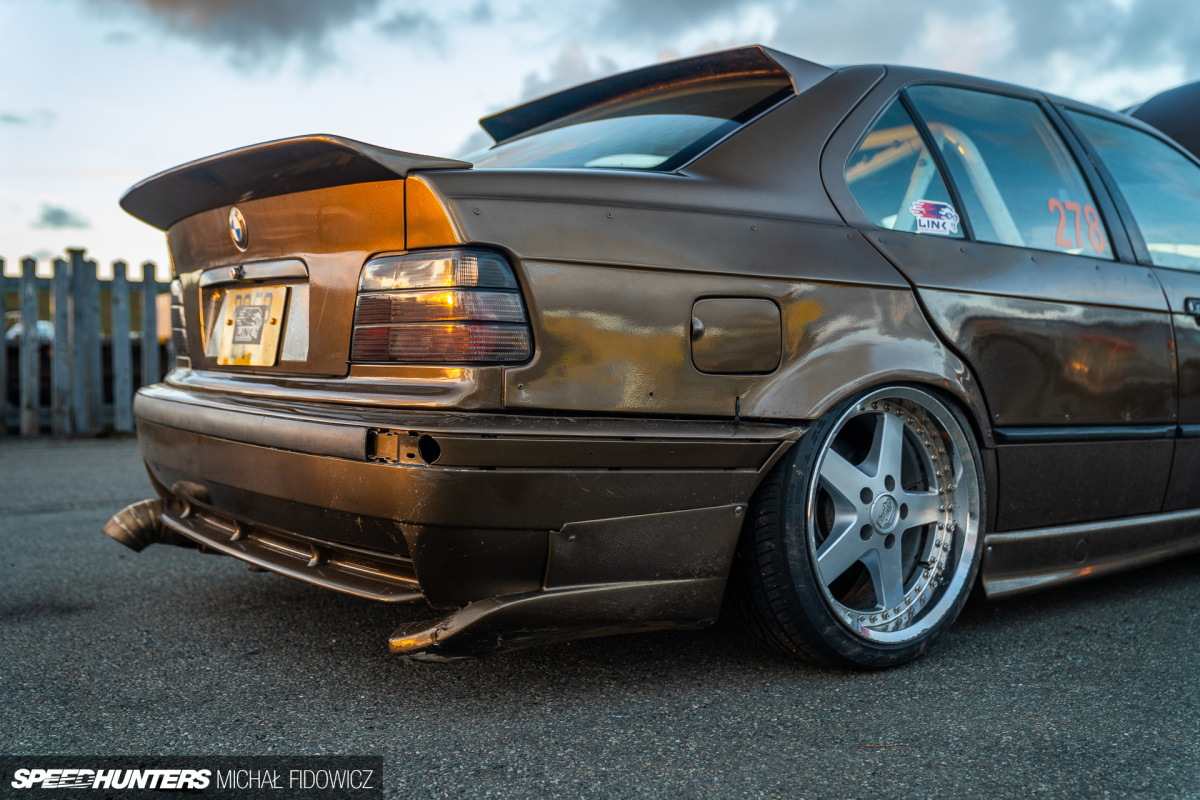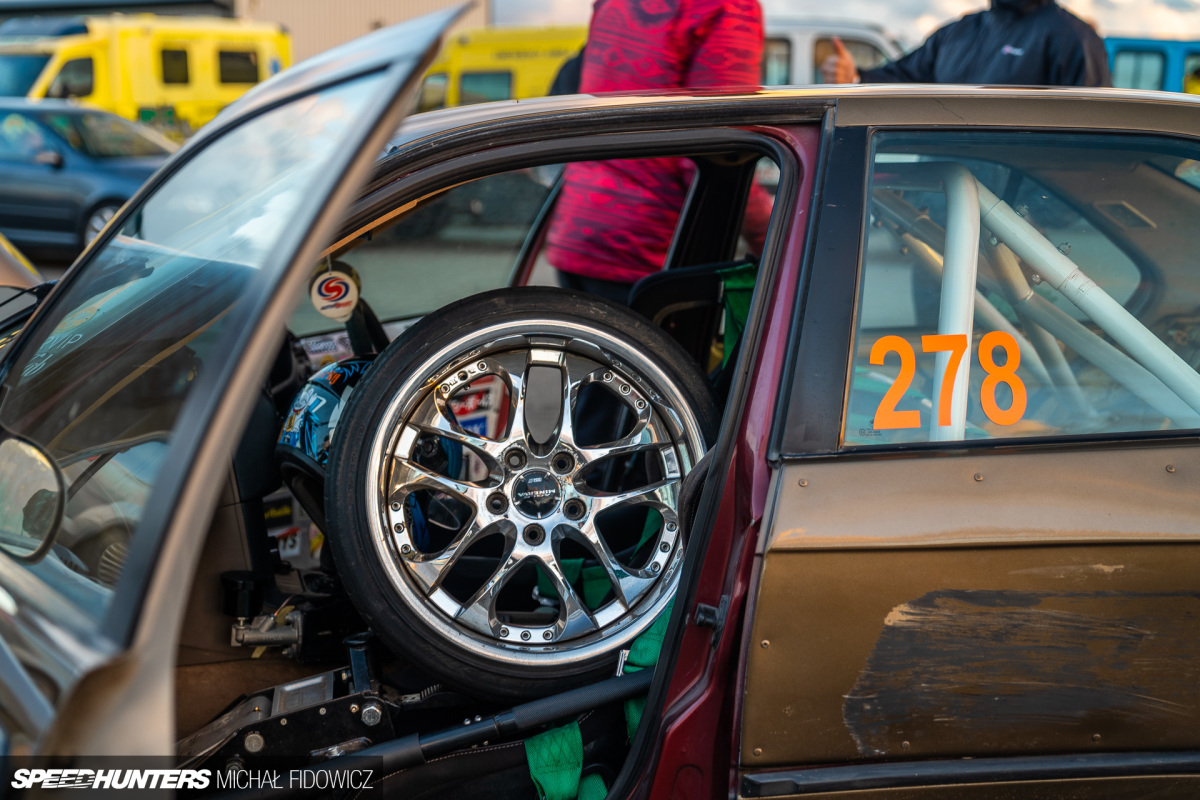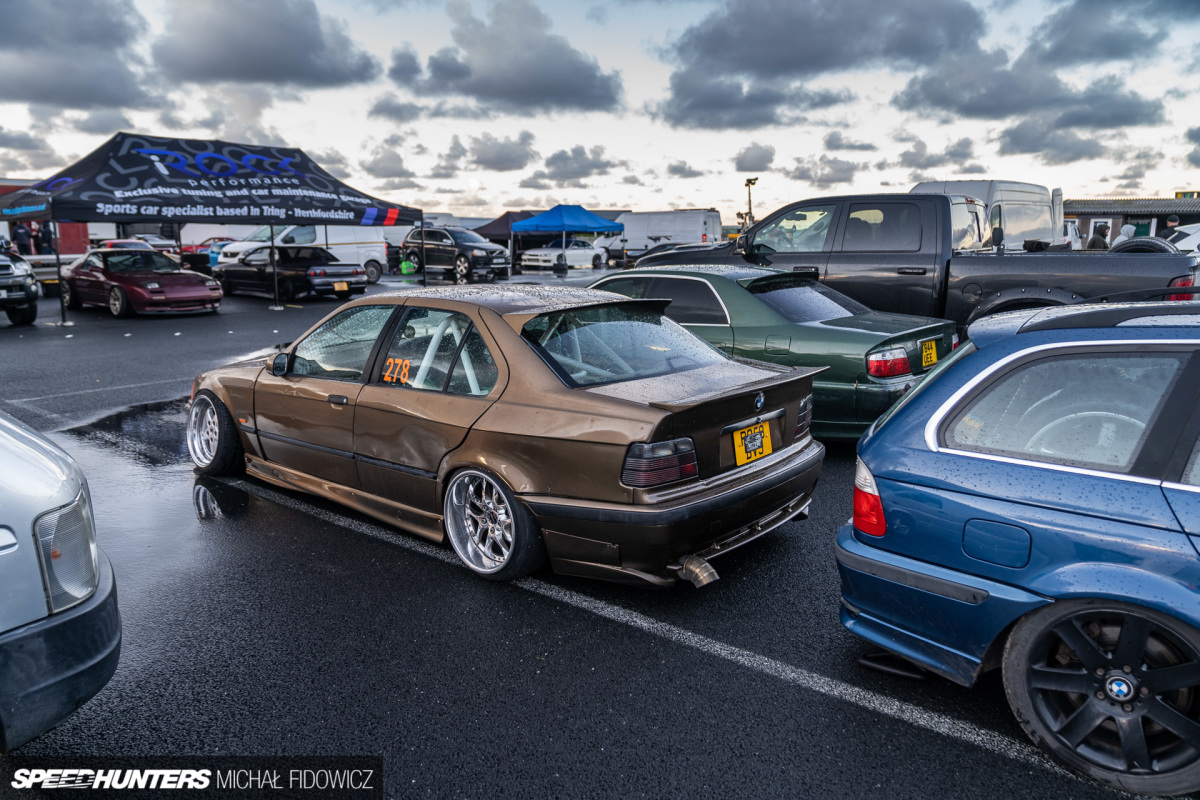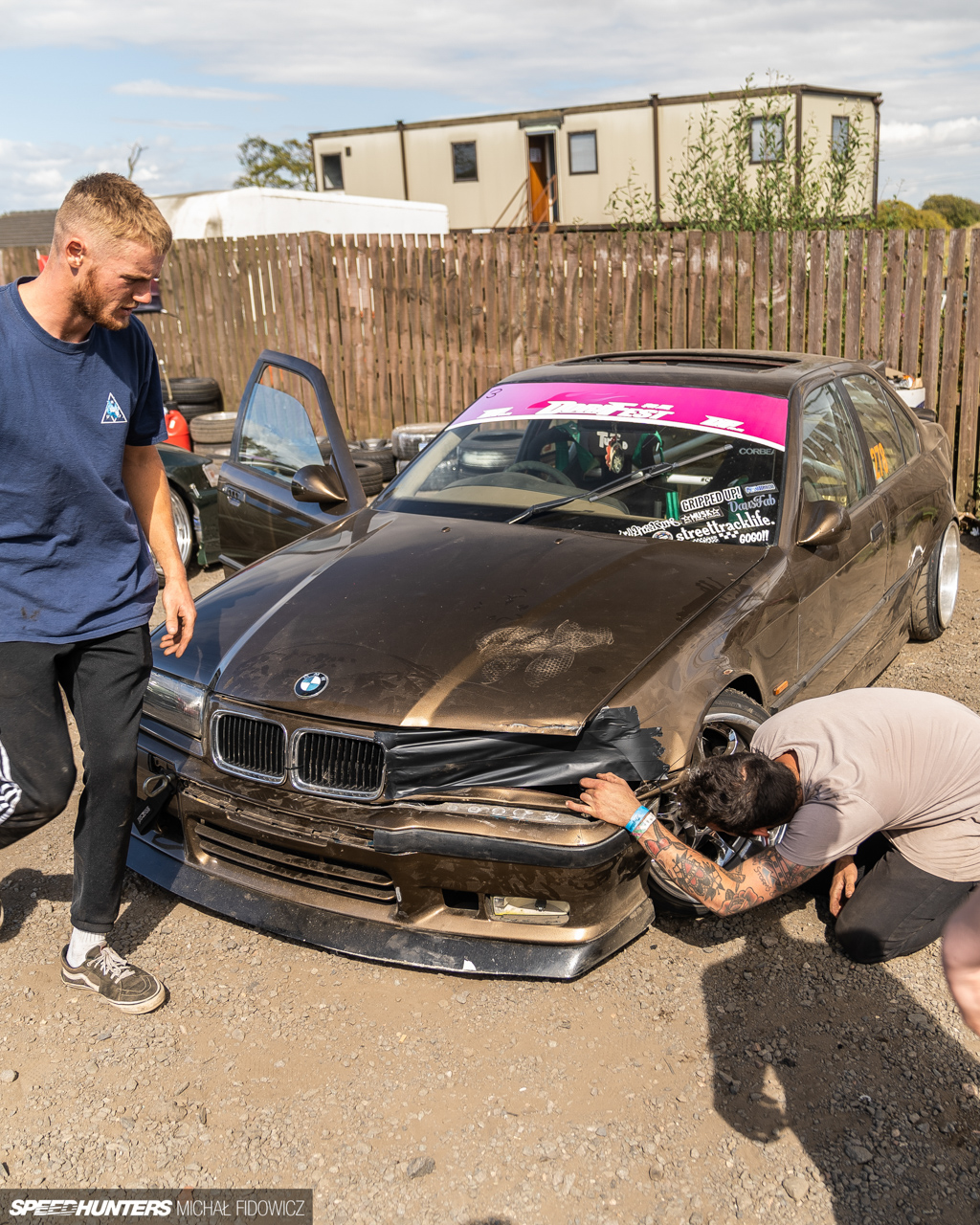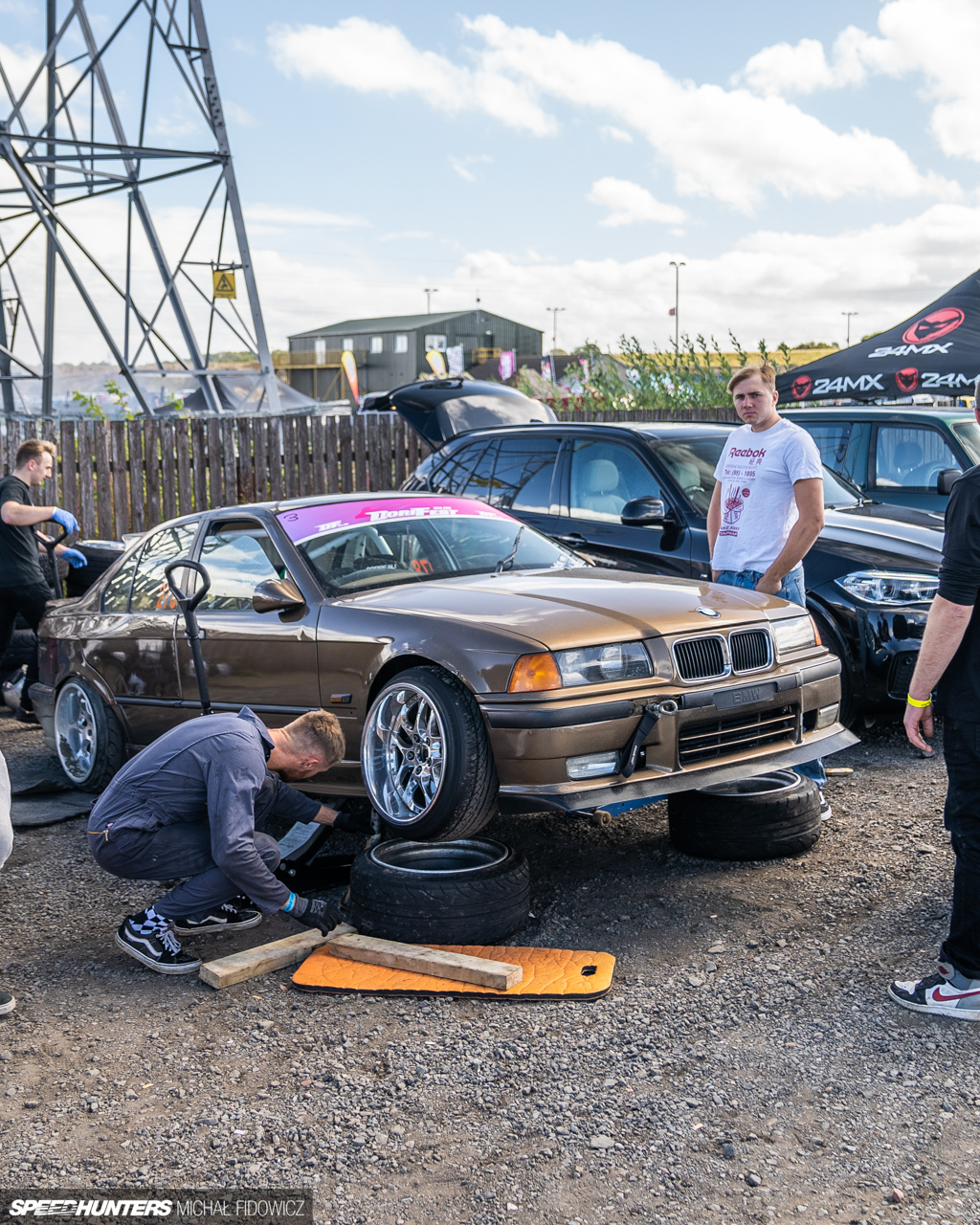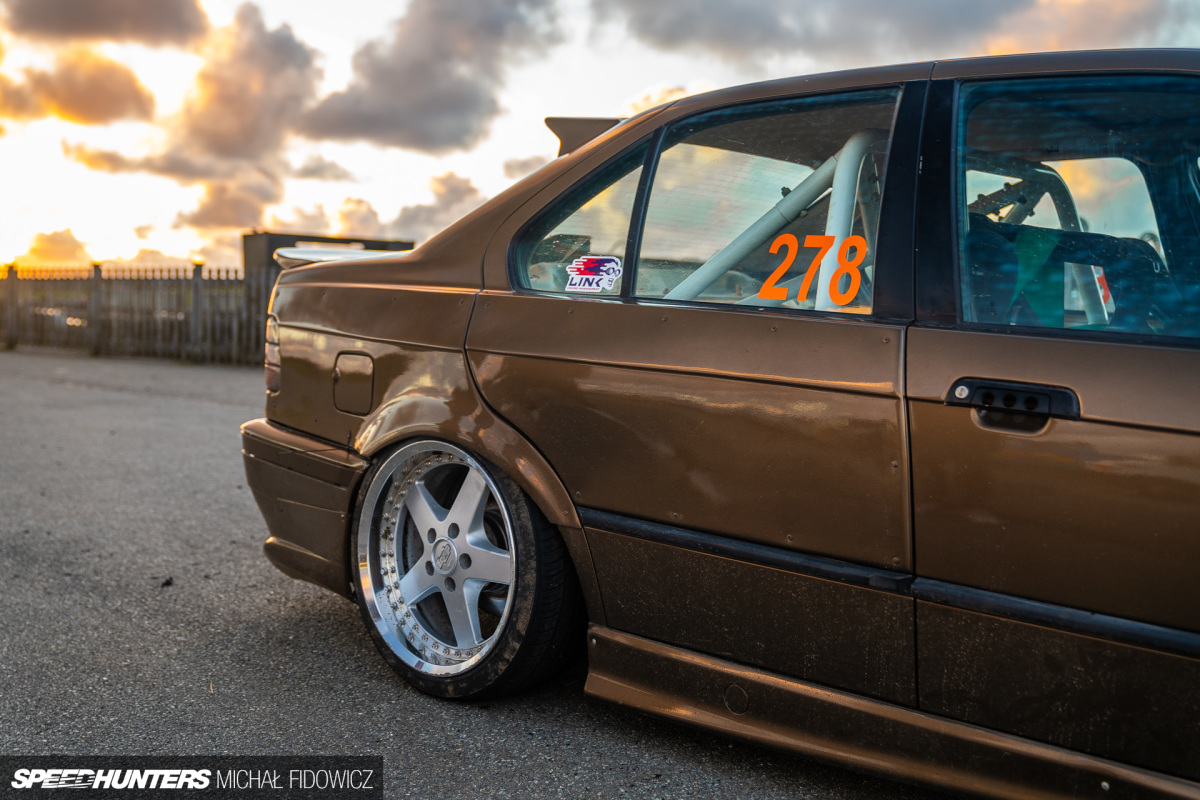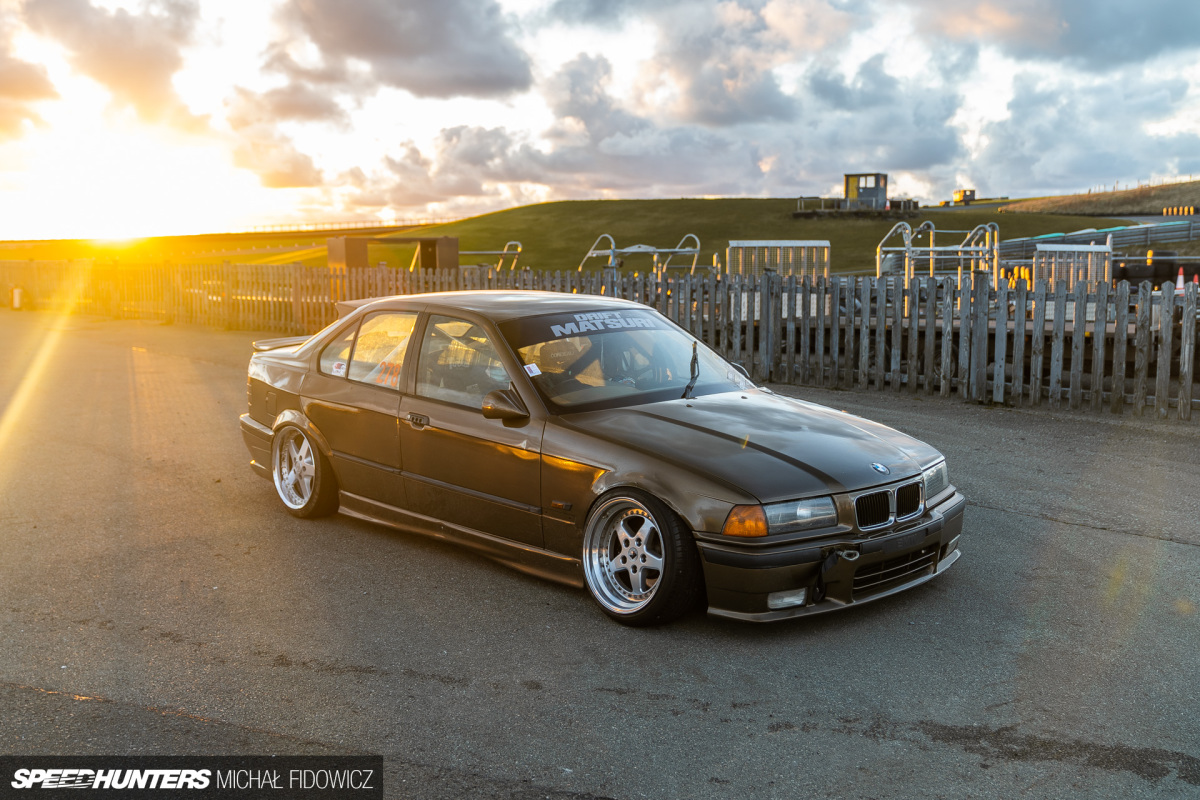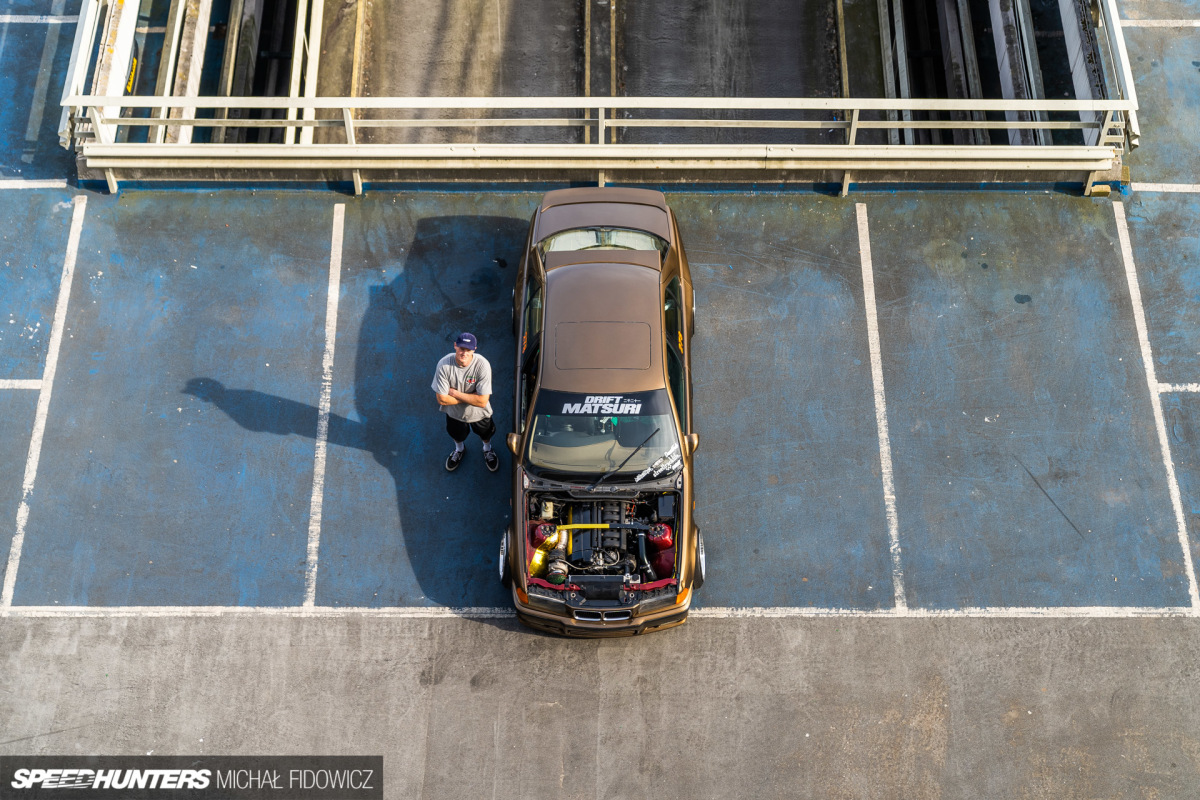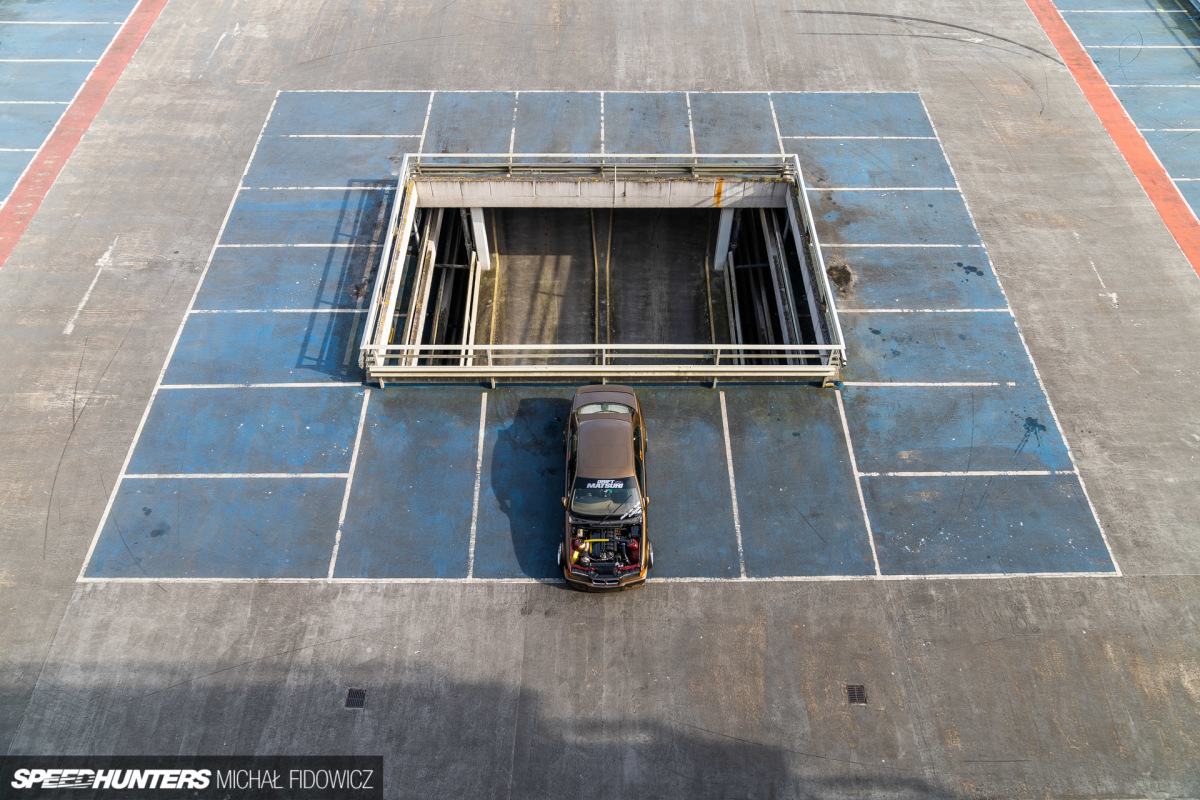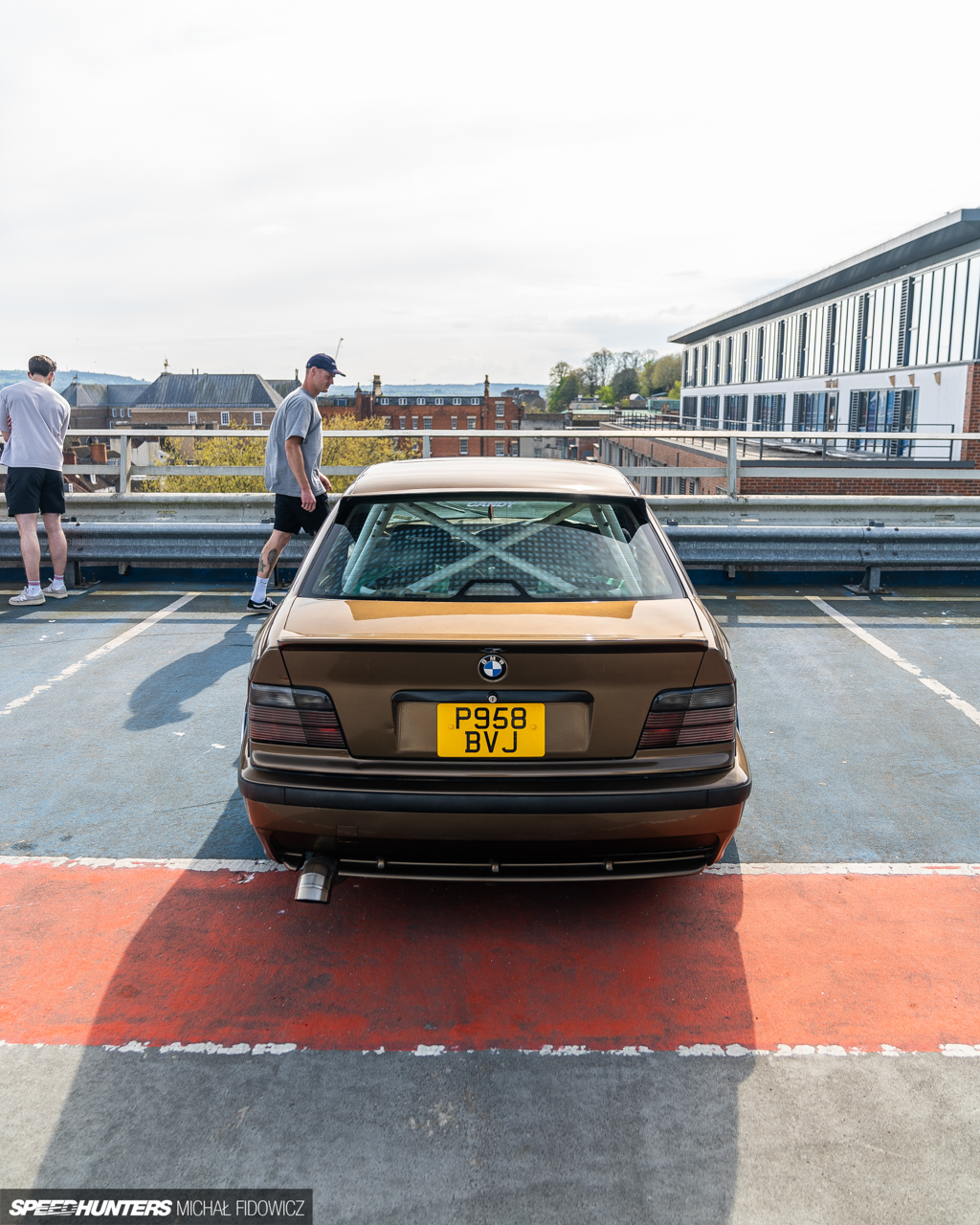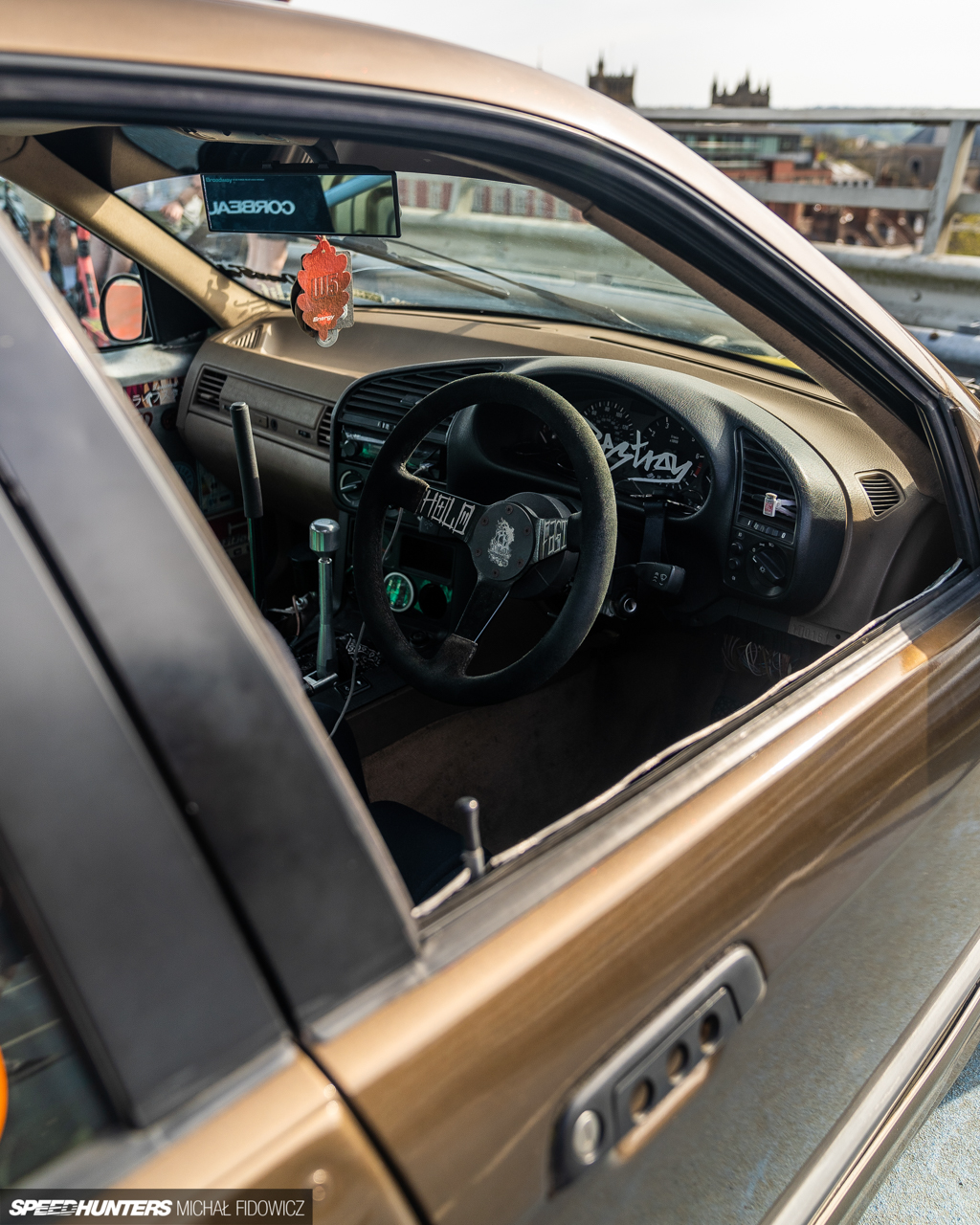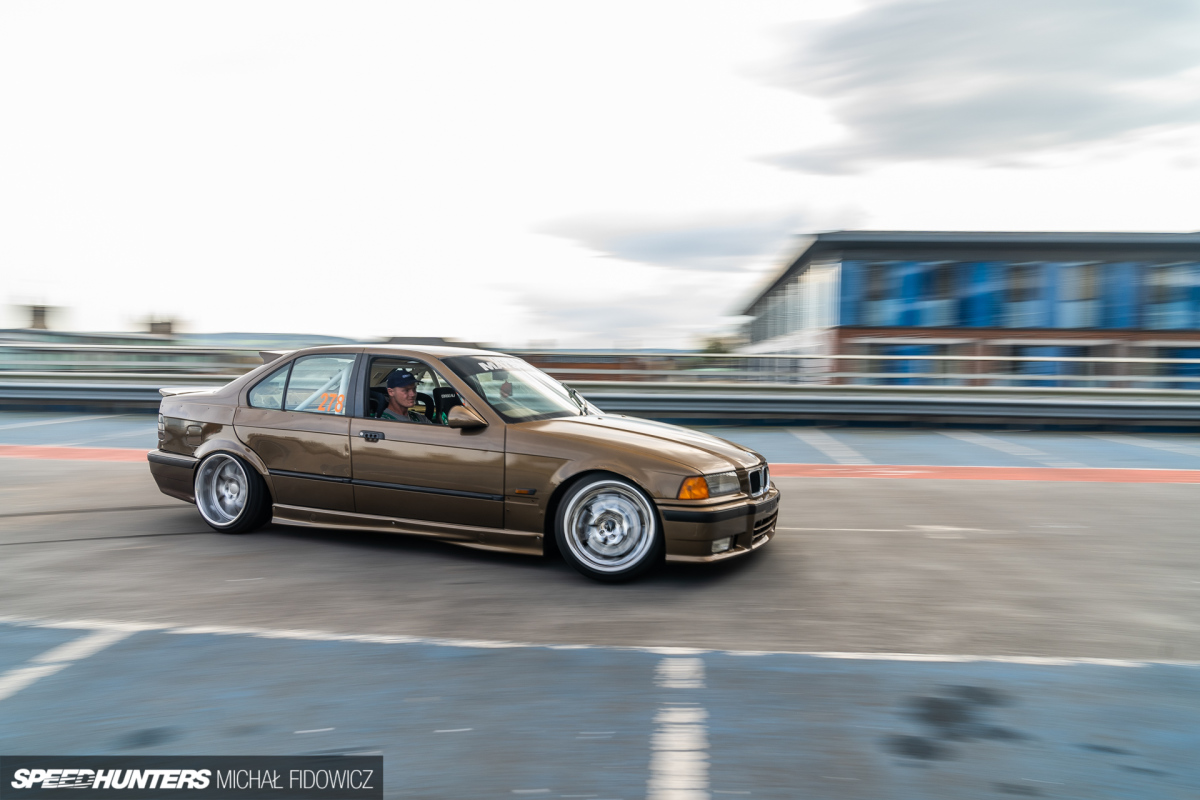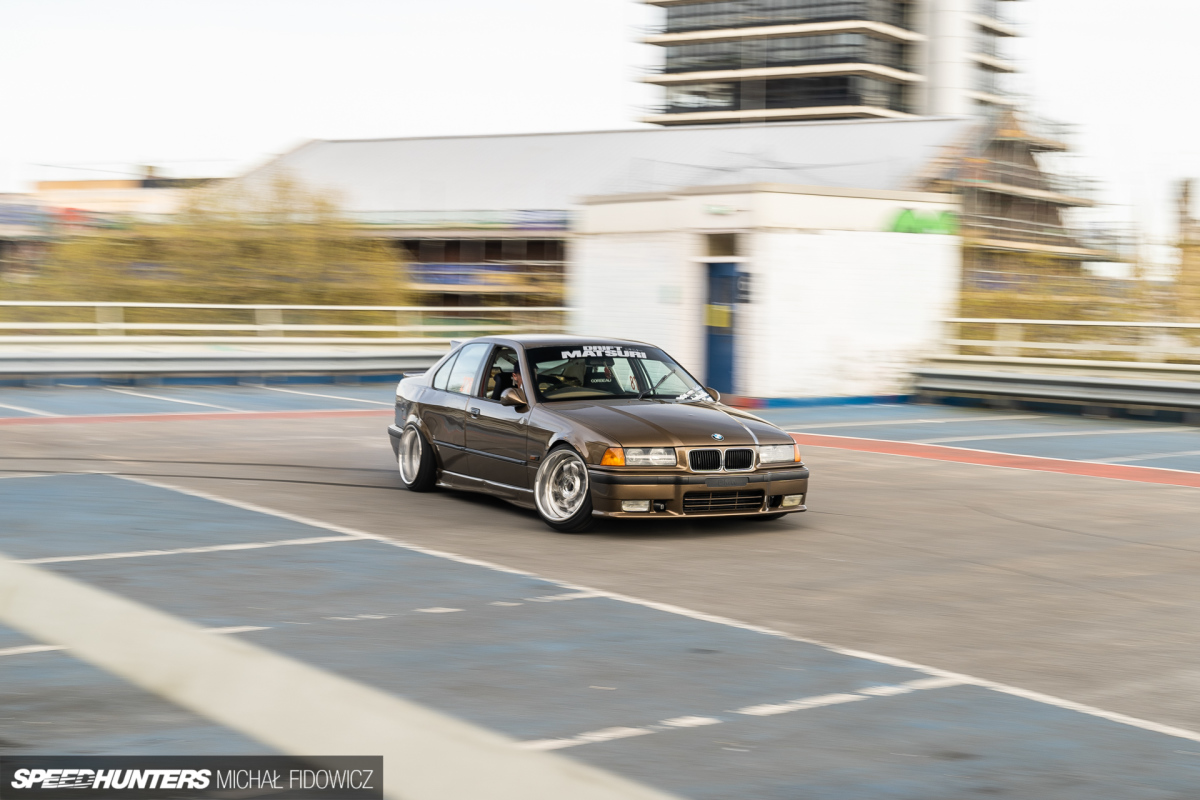The mid-to-late-2010s will go down in automotive history as the ‘gold rush’ period for cars that offered big bang for not a lot of buck. Amongst that list, and in my opinion firmly at the top, is the BMW E36 3 Series.
There was a brief period of time somewhere between 2018 and 2019, where my mates were all picking up manual E36 sedans for cheap. They lowered them, chucked some wheels on, welded up the diffs and proceeded to crash the cars into each other at some muddy drift day somewhere in the UK Midlands.
My participation with this was capped to simply being a passenger and taking photos of the carnage, but believe me, it was immensely fun. It was an easy exercise too, as E36s in the UK were in abundance in the mid-2010s and most people didn’t really care that much for them. Therefore, they were willing to sell them for next to nothing.
Frankly speaking, back then people thought E36s were a bit fat and heavy, and often claimed the M version didn’t offer enough to grant it access into the hall of fame that the E46 M3 entered immediately after its launch.
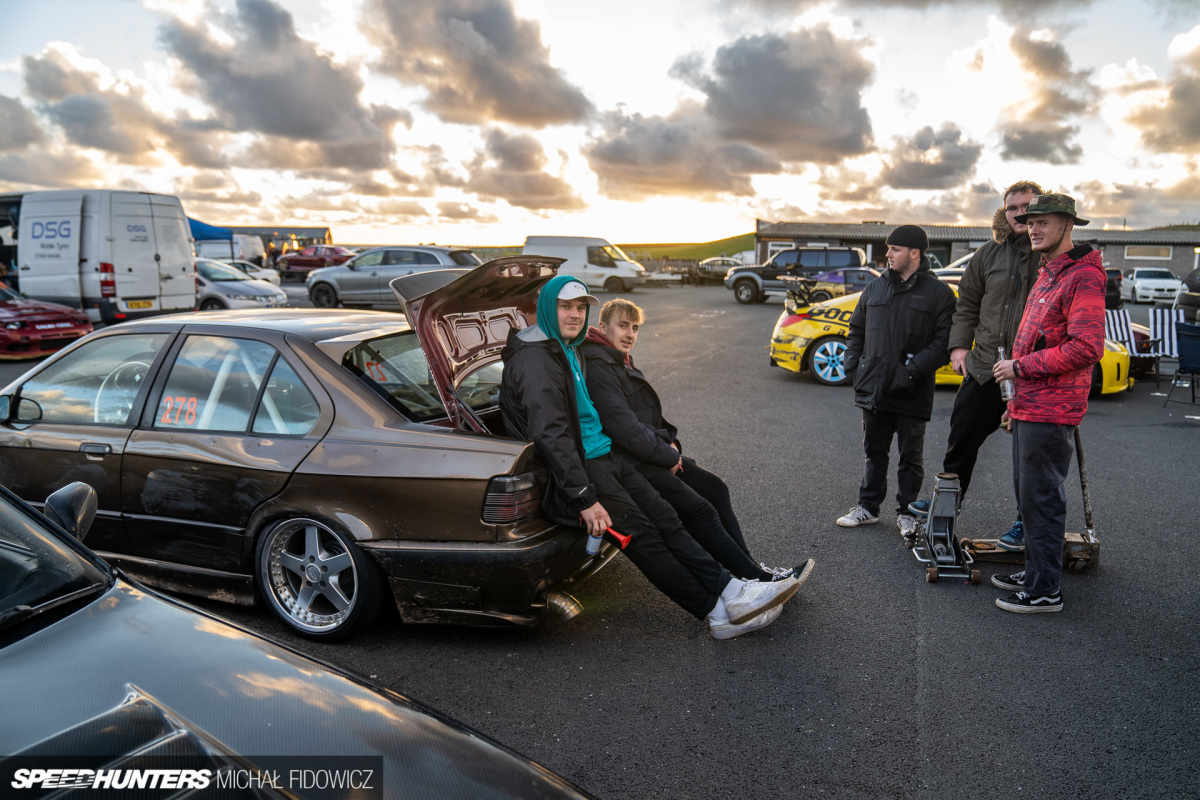
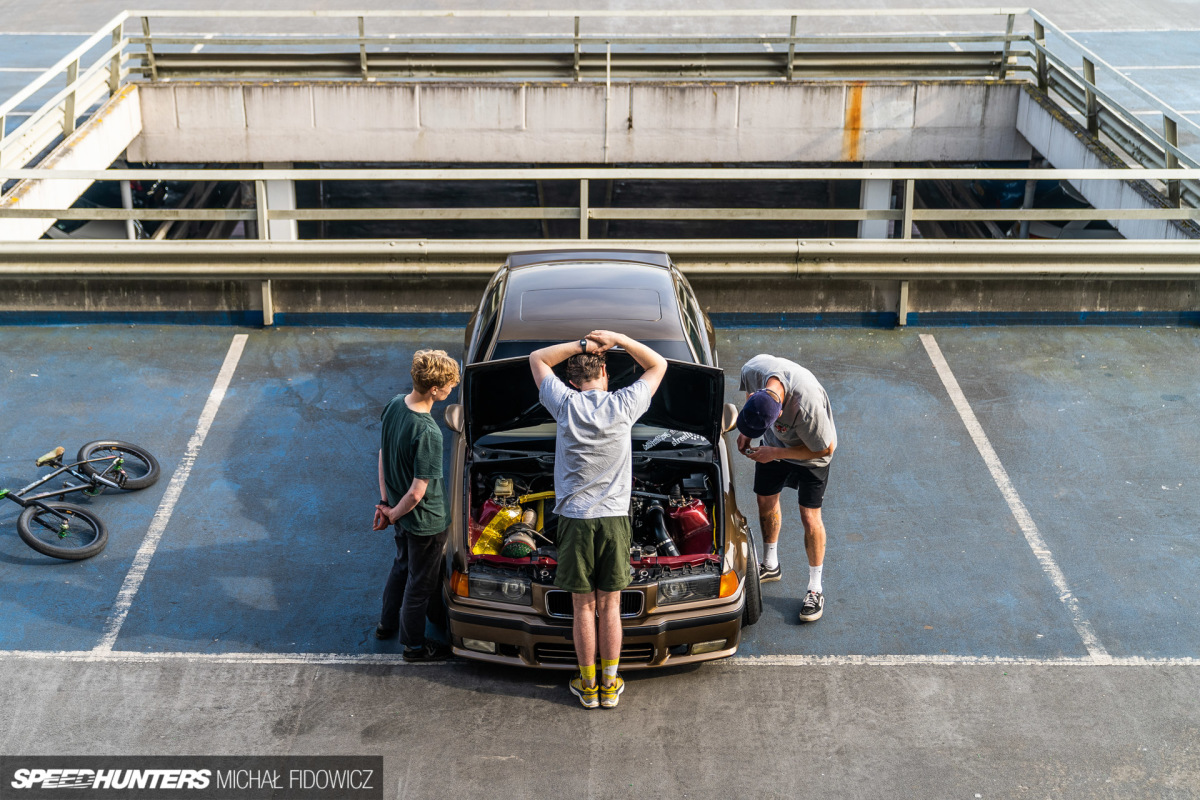
Non-M E36s were mostly bought by recklessly-clever young guys on a student or apprentice wage who wanted a rear-wheel drive car to go sideways in. Conveniently, a good E36 at the time happen to fall precisely into their budget.
None of these guys actually wanted an E36 though; their end goal was always a Nissan S-chassis or a Toyota JZX. This wasn’t unique to my group of friends. Groups like ours were popping up all over the country, and before long all the cheap E36s were being snapped up by precisely the following people: young, filled with adrenaline, smart enough to make them work and dumb enough to destroy them.
Back in 2018, amongst one of these groups was then 19-year-old Stuart Burrows. Everyone calls him Stubo, or Stu for short. Stubo had already spent a couple of years prior as an apprentice getting into the only other obtainable drift car option for a young person in England: an NB Mazda MX-5. As his apprenticeship finished and he got some more cash in his pocket, he wanted to get into something more usable with six cylinders. E36 it was, but not the one we’re here to talk about today. Stubo’s first E36 was a Compact, setting him back a cool £500.
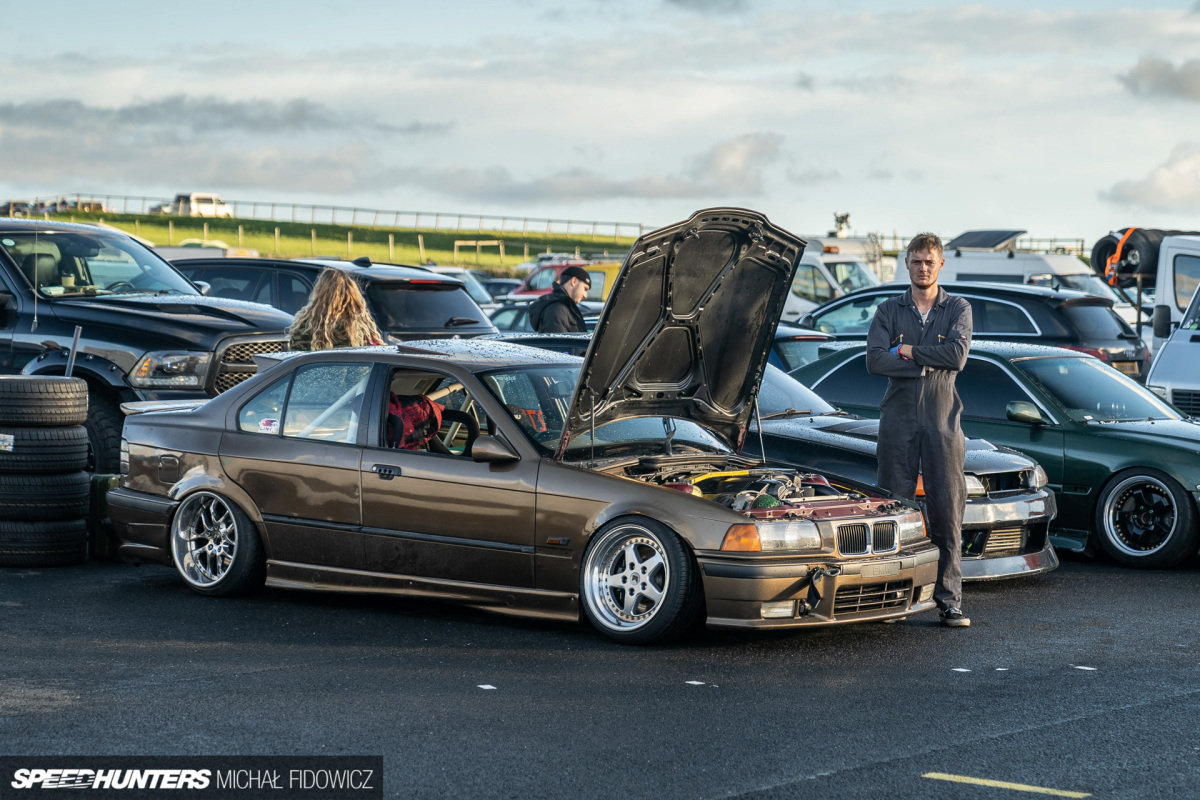
While E36 coupes and sedans weren’t worth much, Compacts were even less desirable back then. No one wanted to prod them with a 5ft pole let alone hand over money for one. You could get a well-specced Compact in a rare colour with leather trim and it would still be cheaper than getting the bus.
Fortunately, times have changed and people generally reflect on BMW Compacts as cars that provide great fun, especially once you drop in a six-cylinder engine, which is the natural right of passage for any E36 bought by someone like Stubo. Predictably, this is exactly what he did to his Compact.
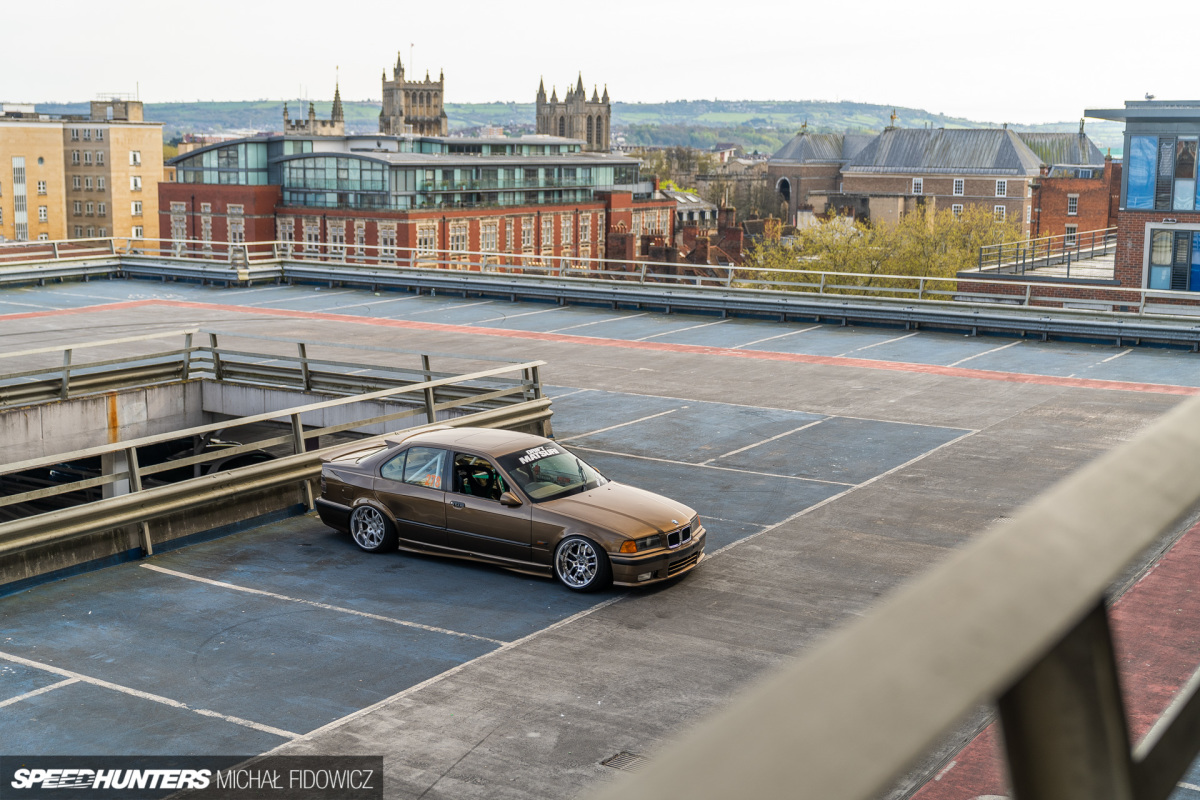
This is where things pick up pace. There are a few BMW six-cylinder engines to choose from, but Stubo was thinking long-term and wanted to eventually boost the engine for a few reasons. Firstly, it’s beyond fun having a turbocharged sports car. Secondly, it would allow him to take his hobby from smaller drift days to bigger events hosted on a proper tracks. Having the extra power would allow him to make the most of these bigger circuits and eventually keep up with his pals in more powerful Japanese cars.
The M54 is a bit of a headache to set up, meanwhile the M52 is a perfect plug-and-play engine but isn’t known for its ability to take boost, and if you overheat it, you’re looking at real trouble. The M50 on the other hand features an iron block and loves a turbo, offering the boost Stubo really wanted. “The M50s love the limiter,” he jokes. Stubo is not wrong.
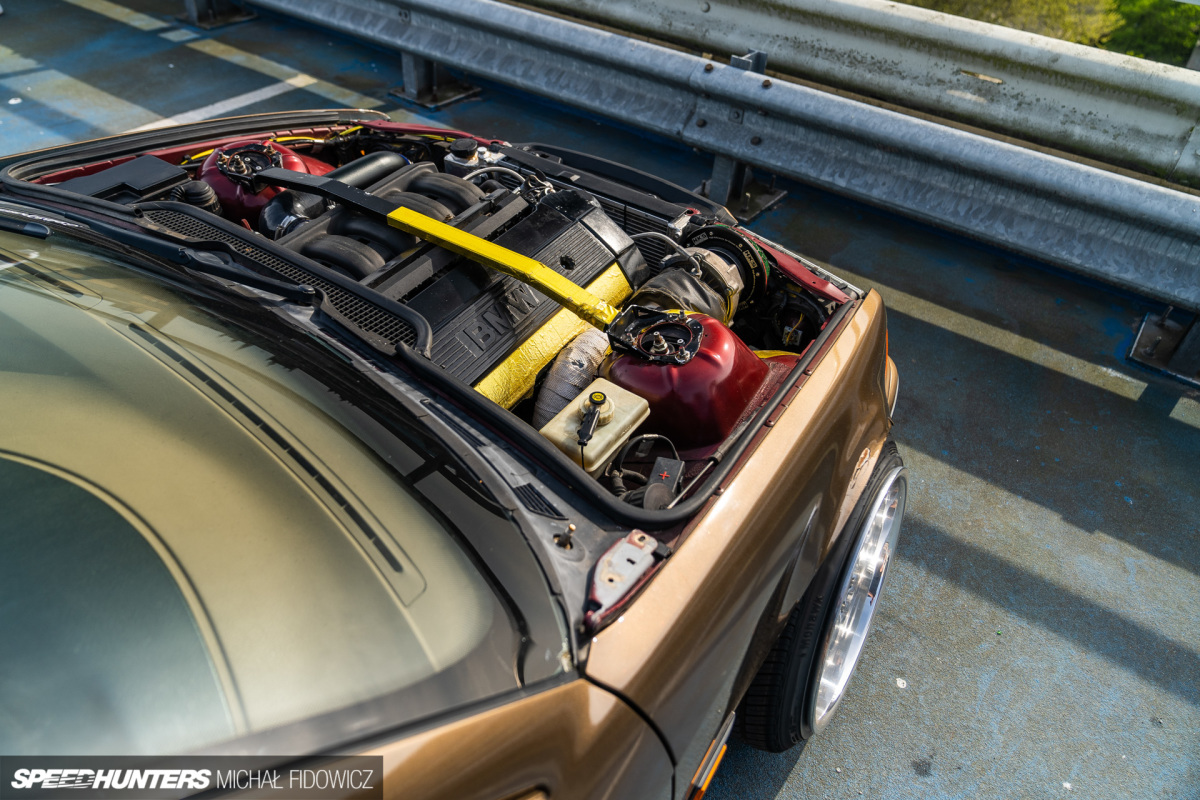
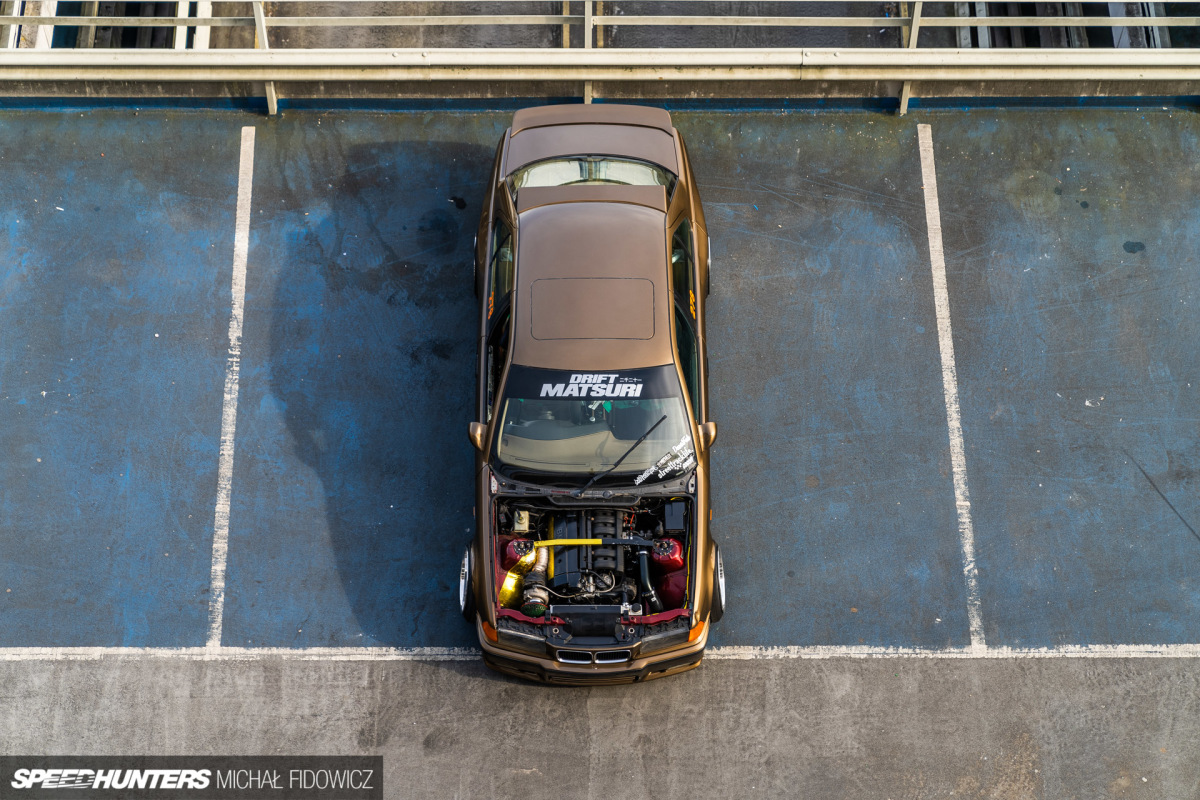
While today they’ve become pretty scarce, M50s were everywhere at one point. Stubo was set on finding a good one and began his search. Eventually, one came up for sale on Facebook Marketplace. Coincidentally, it came from another Compact up in Birmingham.
“The engine had no paperwork and I had no proof of it running apart from a video of the Compact on limiter doing a donut in some shoddy car park,” recalls Stu. What could go wrong? As it turns out, something more significant than the engine could go wrong. Like most young guys with an E36, after the six-cylinder swap Stubo ended up crashing the Compact and writing it off. Back to square one.
Square one looked a little different this time, though. Stu’s brief time with the Compact gave him an understanding of what the E36 is all about and, most importantly, not only was he okay, so was the M50 up front. It would live to run another day, and oh boy was it in for a treat. Stubo was going to re-shell the Compact, and the epitome of a cheap E36 popped up for sale in the right place at the right time.
£150 later, Stubo was now the proud owner of his next E36 – a bone-stock 320i sedan in Calypso Red with a cream interior and dash. Believe it or not, that’s the car you’re looking at here.
The transformation didn’t happen overnight, or even over a few months. The car was Stubo’s daily, so he couldn’t put it aside to do the work, and couldn’t afford to do it all in one hit anyway. He needed to keep the car reliable enough to get him to work and back.
“Originally, I bought the saloon as my only car… a daily. It sort of turned into a race car though, and with time its purpose as a race car became clearer. I wanted to drift it, so it then became a drift car. It could be anything as long as it was good fun, but yes, I wanted a drift car,” he says.
Are we clear on that?
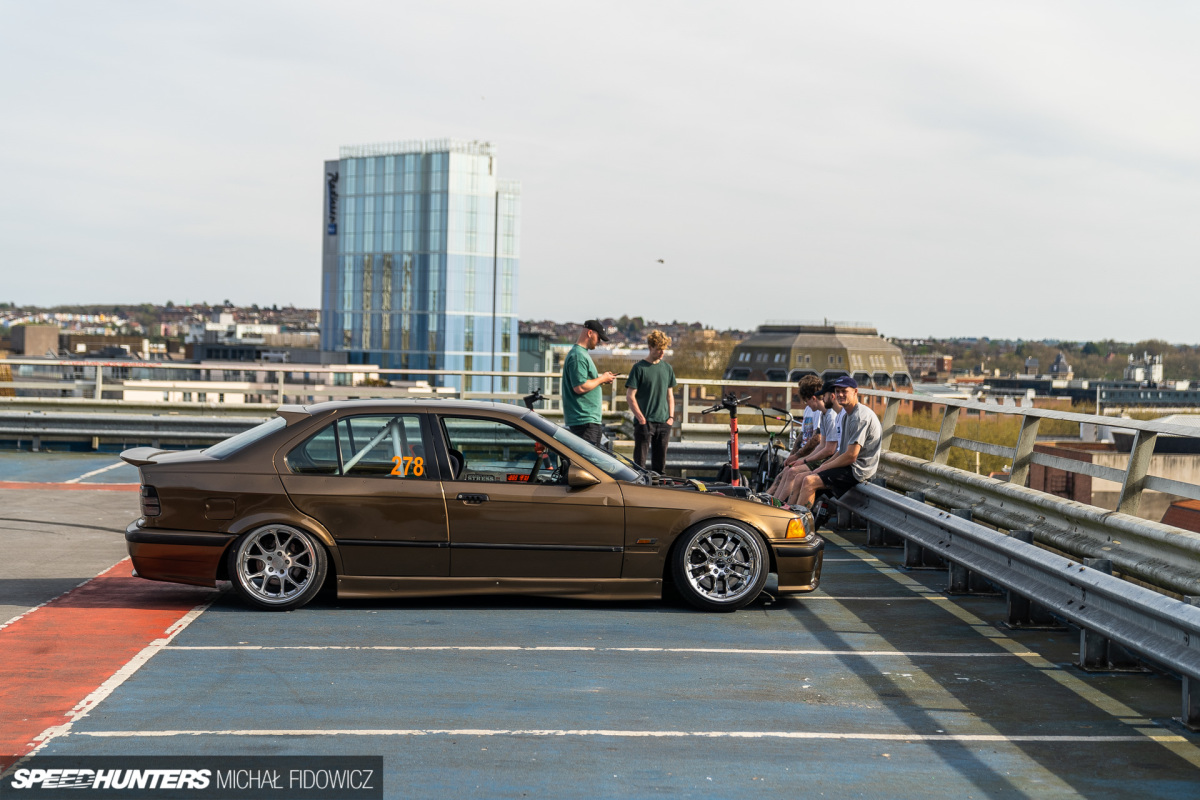
With that in mind, the obvious first thing to do was pull the engine. Out came the M50B20 that came with the sedan, and in its place Stubo slipped in the M50B25 from the crashed Compact. “We did all the engine swaps ourselves. I got a few of my mates, swung some ramp access and got the car up in the air,” he says. Then came all the usual skid car parts: hydraulic handbrake, welded diff… I’ll get into all of that later on.
It wasn’t long until Stu ended up turning his daily into a project that started to get a bit more engaging. I’m sure most of us reading this know how one thing leads to another, and suddenly you need a daily for the daily.
As Stubo started to attend more drift days across the UK, it wasn’t long before he crossed paths with my group of friends and I eventually crossed paths with him. We met at a Santa Pod drift day. His E36 was a few different colours back then as he fitted a Huxley Motorsport kit and never got round to painting it. I vividly remember him running a set of R33 Skyline GT-R wheels at the time, which were awfully trendy at the end of the 2010s and also nowhere near as valuable as they are now.
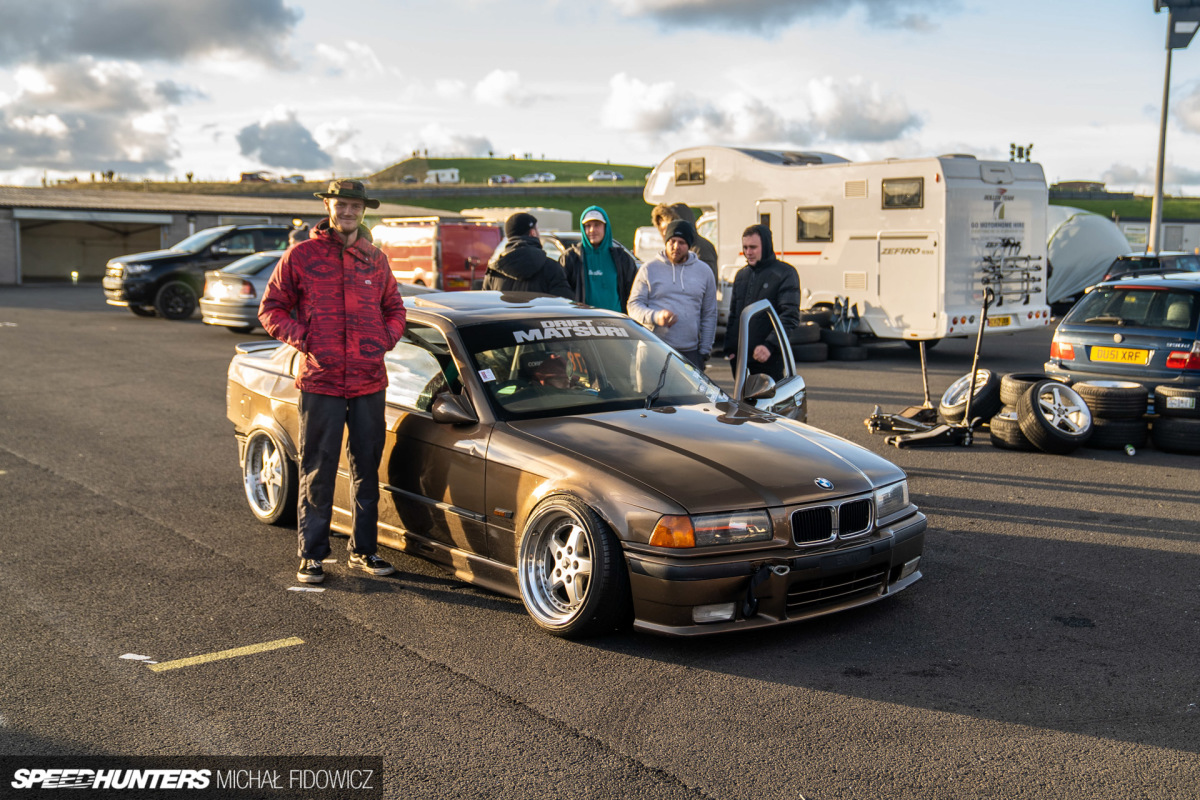
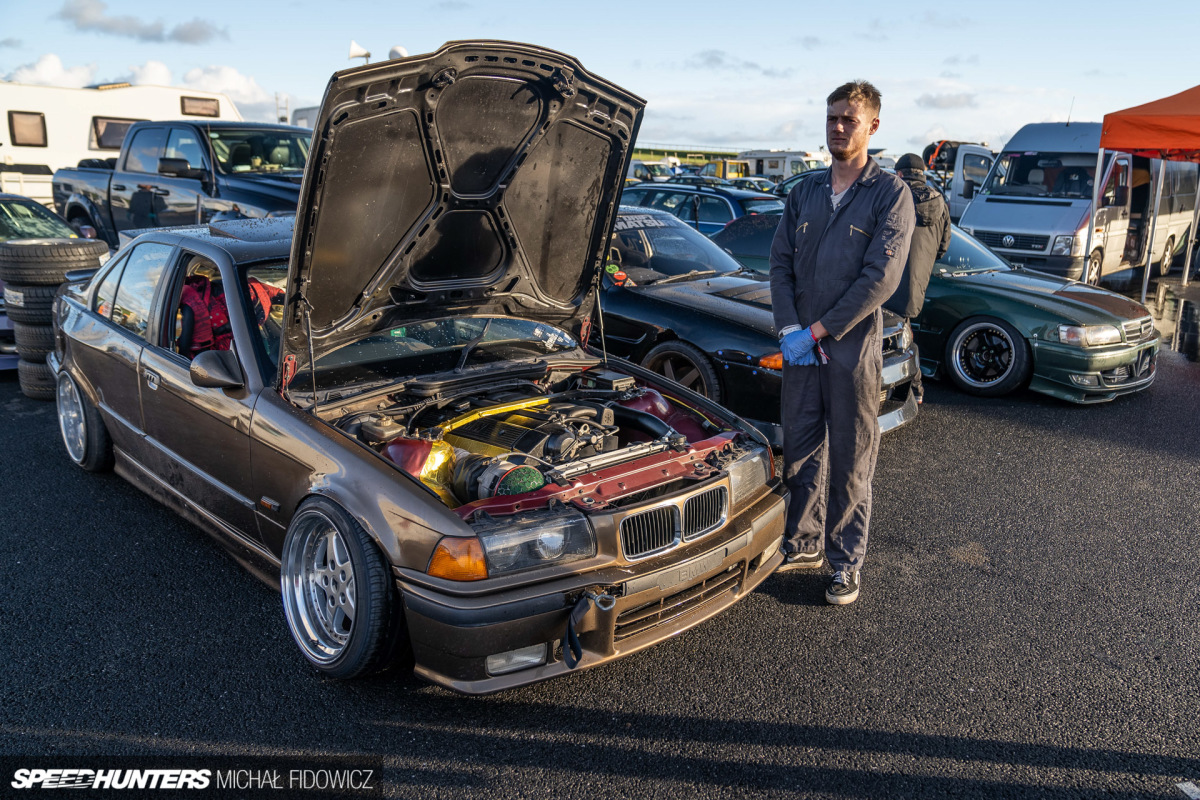
“I got an E36 over the other stuff because of how cheap and accessible they were. Loads of spare parts everywhere, good aftermarket, and a lot of information about the cars is already out there,” Stu tells me.
He couldn’t have put it any better, covering all the variables needed for a model’s gold rush to take place. Accessibility and community are, in my opinion, the strongest reason for values to suddenly raise. A sedan base for £150 didn’t seem that crazy back then, but trying to find an E36 at that price point now? Impossible.
Stu continued to build the car as he went along, tweaking things here and there until the winter of 2020 going into 2021 when he finally put the BMW into hibernation. This was his opportunity to finally crack on with the original plans he’d set out for himself, but executing them thoroughly. Simply whacking a turbo onto the M50 wasn’t going to cut it.
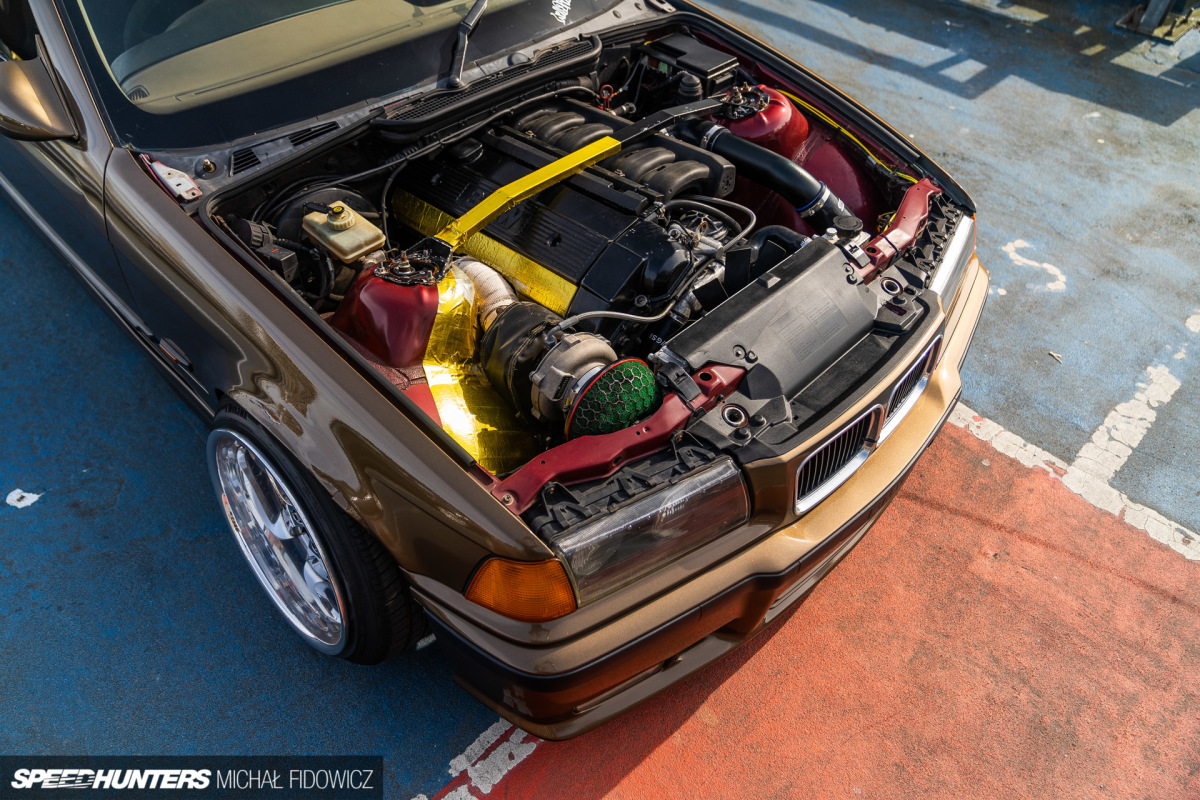
“I did all the odds and sods inside the engine when we pulled it out of the Compact. Composite head gaskets, head studs, an ARP main stud to keep the head from lifting… I also replaced the rod bolts with new ones which I sourced on eBay for a good price. The oil pump nut is secured too, having dubbed the threads over rather than welding it in place. When I rebuilt the head I also had it skimmed. I re-lapped all the valves and replaced the valve steam seals with news ones. I generally freshened all that sh*t up. I did these bits before I even got round to boosting it; I wanted to make the most out of that turbo so these things needed sorting.”
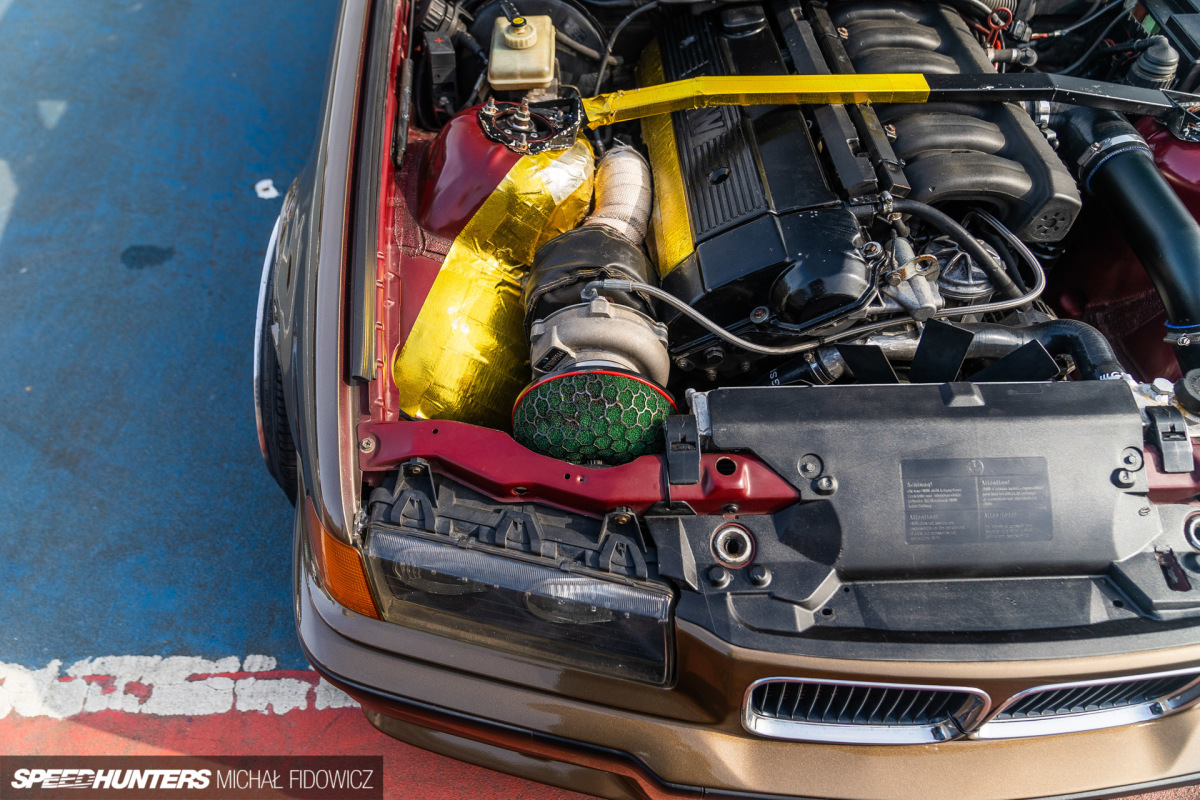
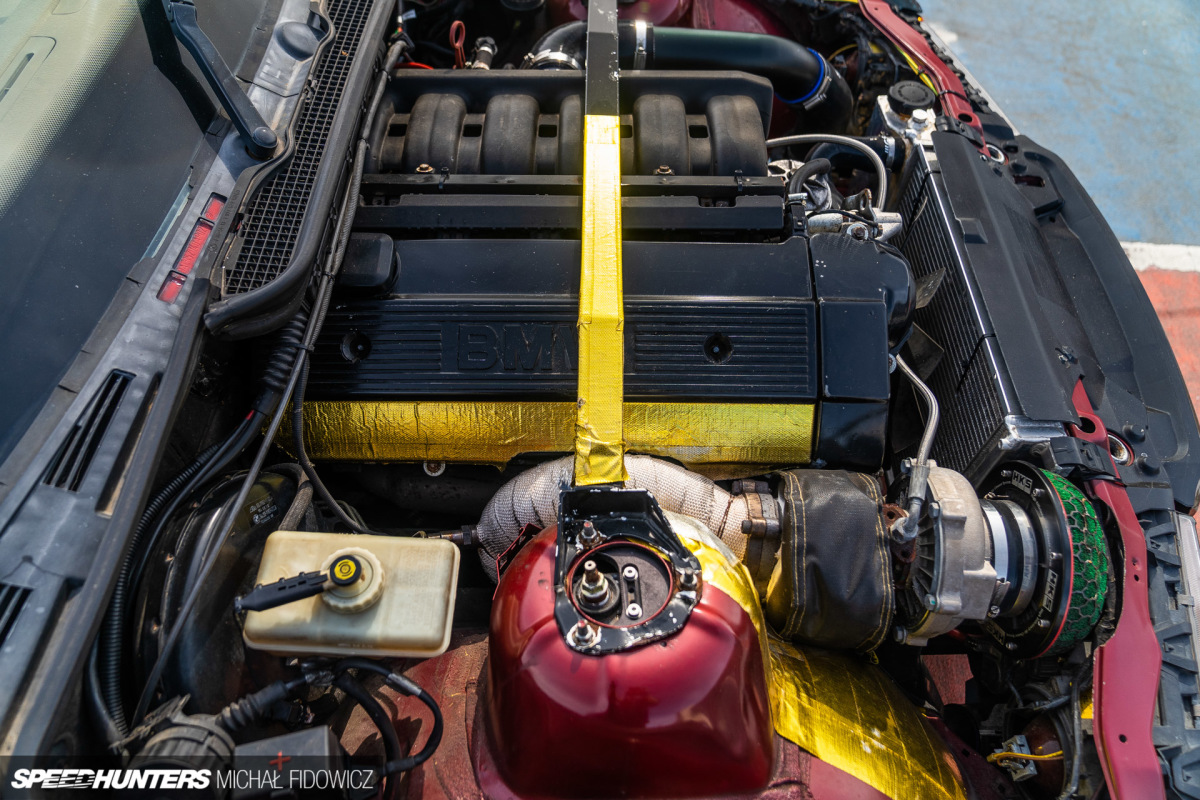
All in all, it was a winter’s worth of work. Then came the fun; it was time to plumb the turbo up. Stu’s choice of the turbo was, well, frankly a bolt-on kit from eBay, specifically a GT30 from Maxspeedningrods. “I’ve had this set up for nearly two years now,” he says. “It’s ran sweet since the day I fitted it. No problems!”
I can vouch for this. The first time I knew I would feature Stubo’s car, we’d just wrapped up our weekend at the UK’s 2021 Drift Matsuri. I shot his car here after two days of 100mph backwards entries down the main straight at Anglesey Racetrack right in the top left corner of Wales. The car performed flawlessly. Going out in it was an incredible experience I’ll never forget, with the noise of the engine hitting redline being so violent and low-pitched it can only be compared to a shotgun going off in a video game.
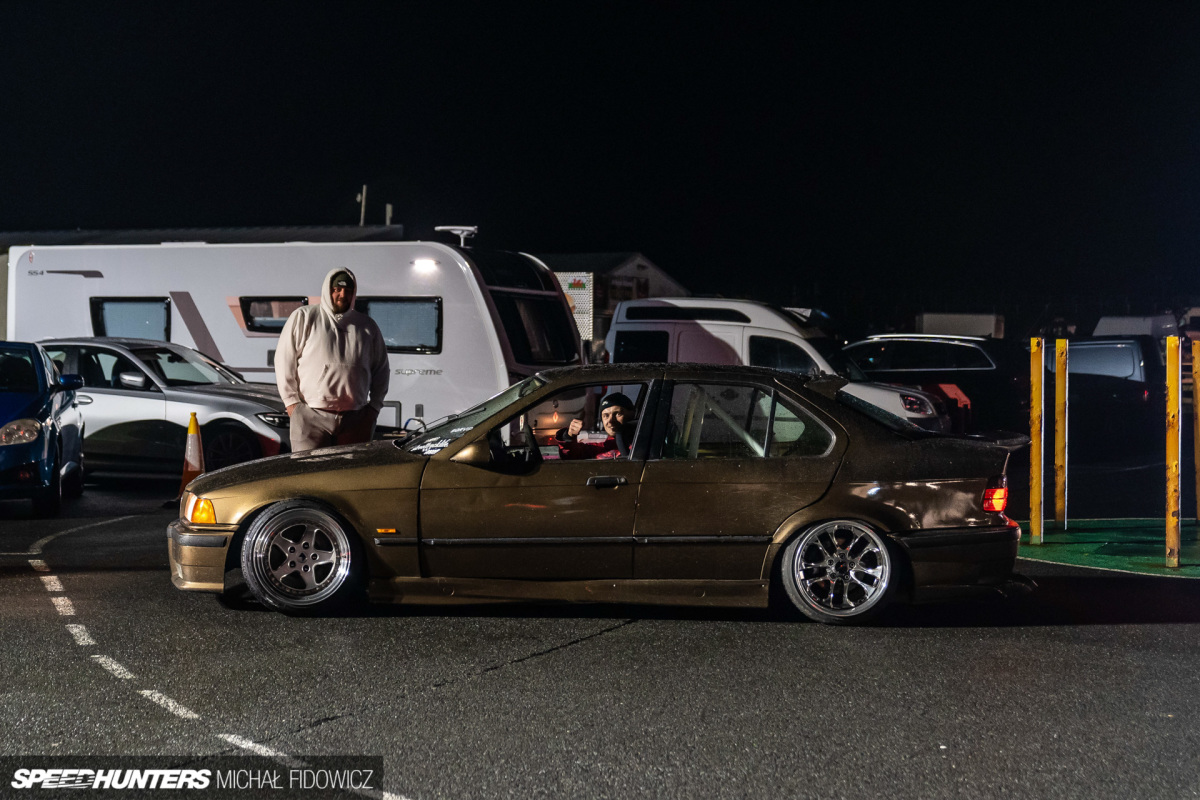
The car was well used that weekend, so much so that I knew I needed to reshoot it once it had some beauty sleep after the event. We chose a very scenic car park rooftop overlooking Bristol, a colourful, large city not far from where Stu is based.
Since then, Stu has driven his E36 to France and back for a car event, and attended the DoriFest drift weekender at Driftland in Scotland.
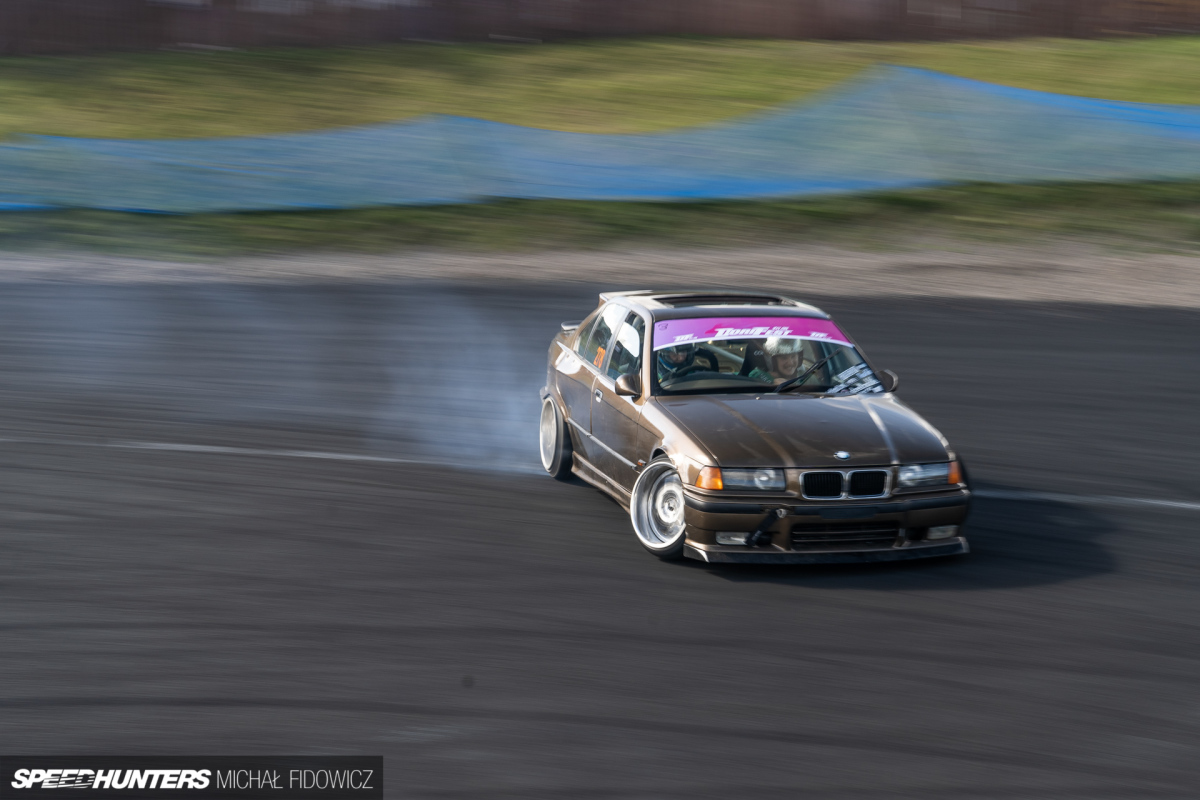
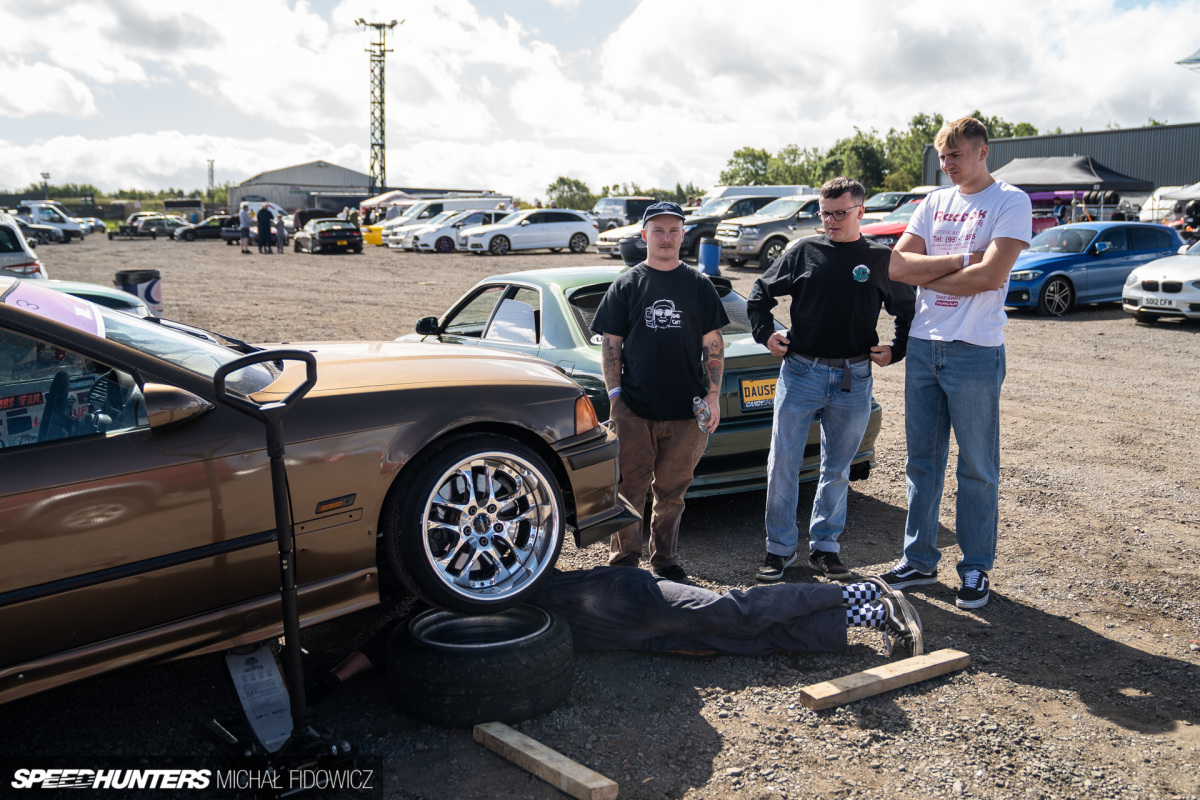
I asked Stu what he thinks he did well to ensure the car was so usable. “I have a good ECU, a standalone Link G4Plus. It was tuned by Guy Higgs; he knows the goods. As it’s a standalone ECU, Guy could change all the parameters so we could really make sure it’s set up smoothly. Importantly, I also have a good wastegate for the turbo from Turbosmart. It’s a handy thing to have and definitely ensures longevity of both my engine and the turbo.”
Whilst at it, Stubo did some basic smoothing of the engine bay and whacked it with a rattle can paint job. “It’s quite sh*t in hindsight, but you can fix that by shutting the bonnet,” he says.
Fortunately for Stu, the outside was not painted with a rattle can. The exterior paintwork was carried out in a spray booth with a proper paint setup by Stu and his mate Dan. “I can’t actually remember the exact paint code, but I know the brown is originally from a Fiat. This is the closest colour I could get to the original [RAYS Volk Racing] TE37 bronze.”
Once you see it, you can’t un-see it.
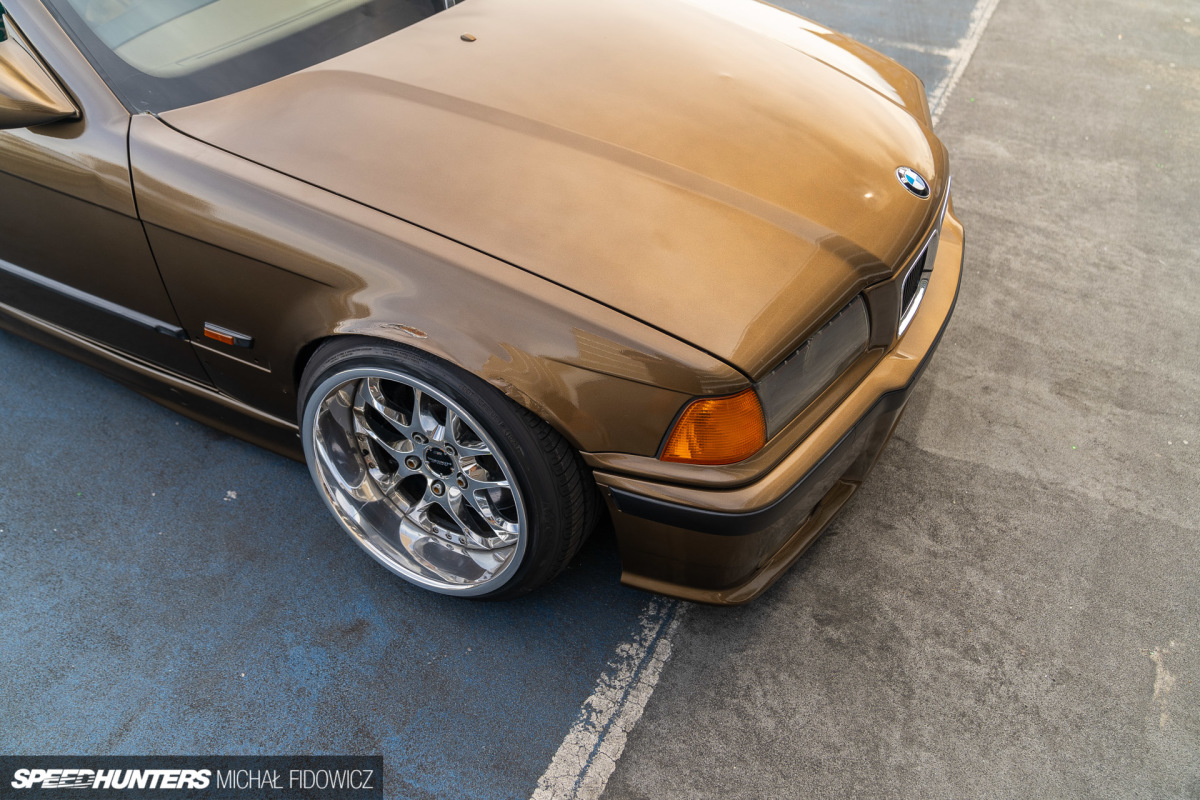
The car was actually supposed to remain Calypso Red, but Stu’s good friend Harry painted his sedan that colour not too long before Stu’s car was in the booth. Both cars were sedans, both had Musk overfenders and both had wide shiny wheels. Ultimately, Stu changed his mind the night before painting the car after a week of abuse from Harry for copying him. True friendship, and definitely the right choice.
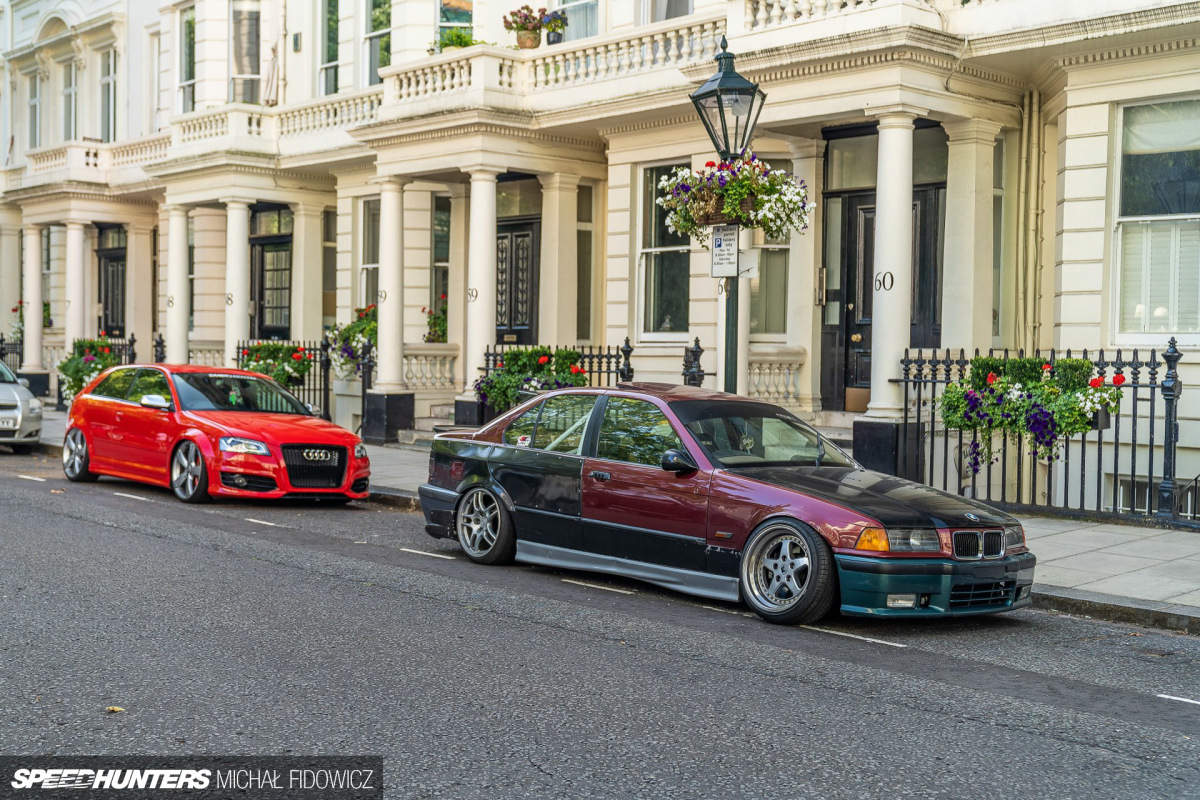
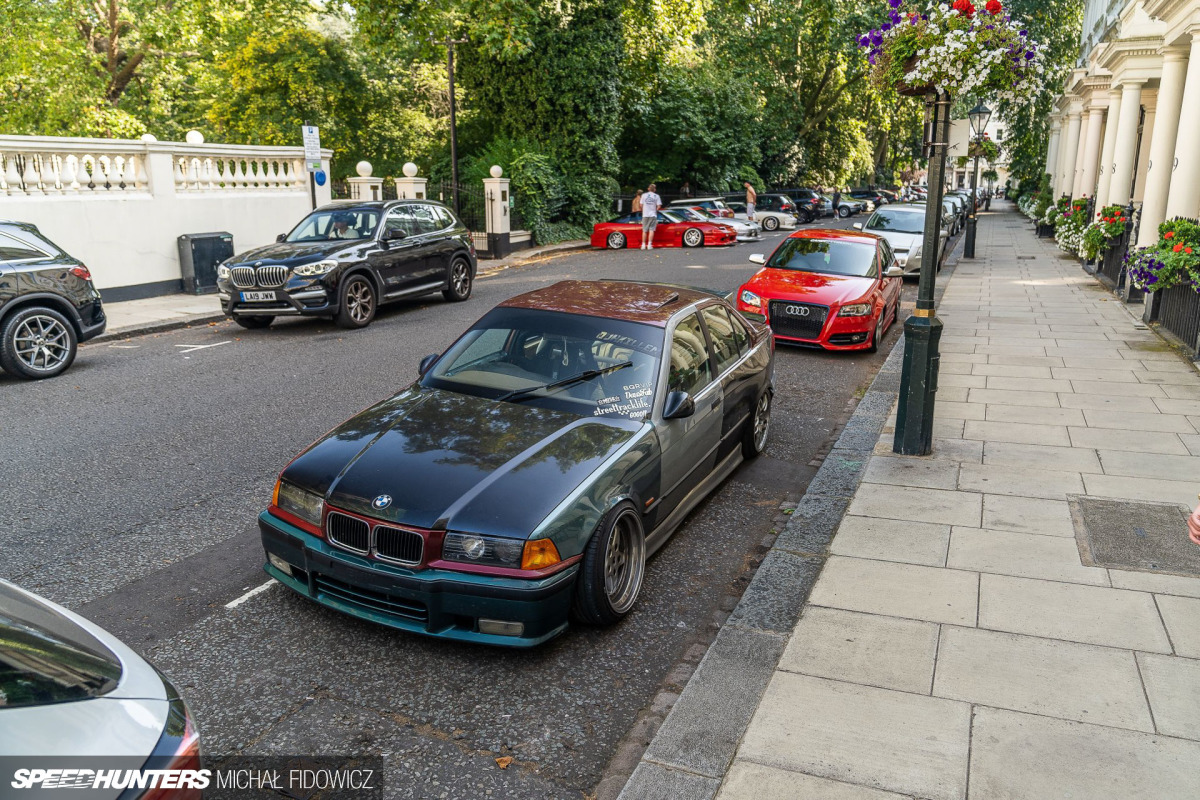
This is what Stubo’s car looked like before paint.
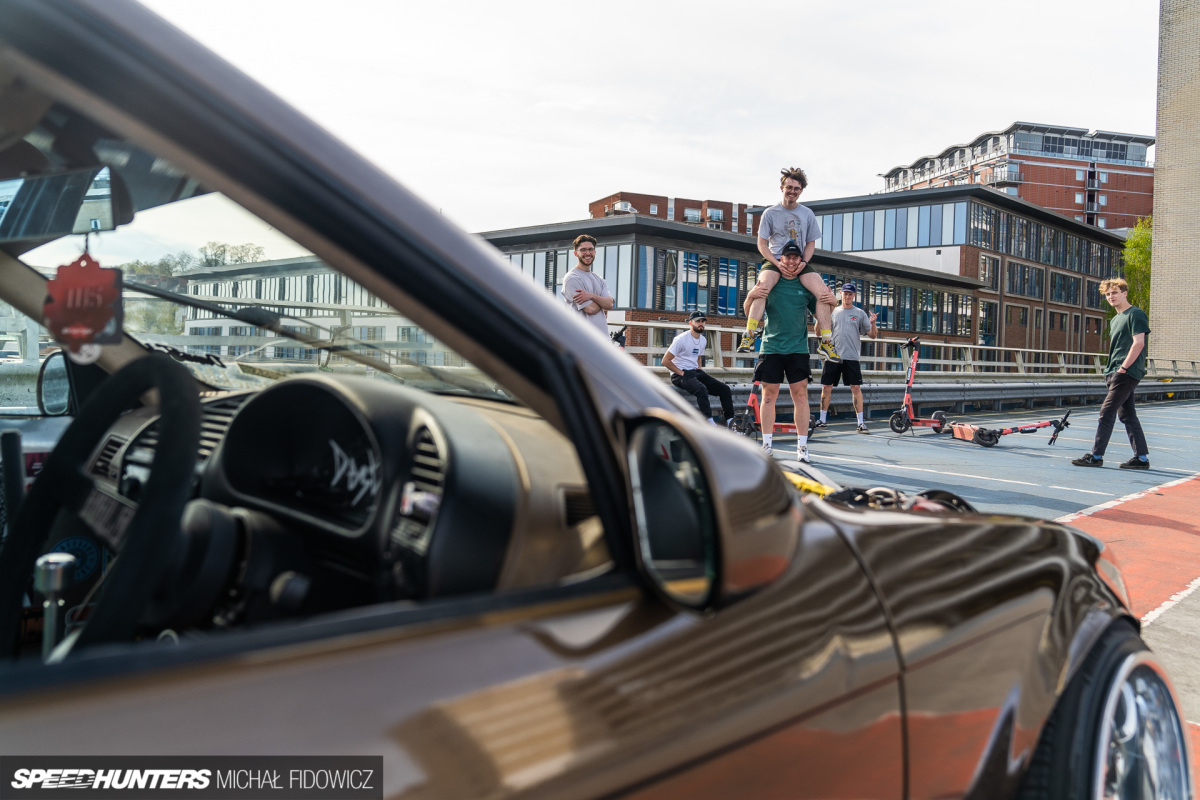
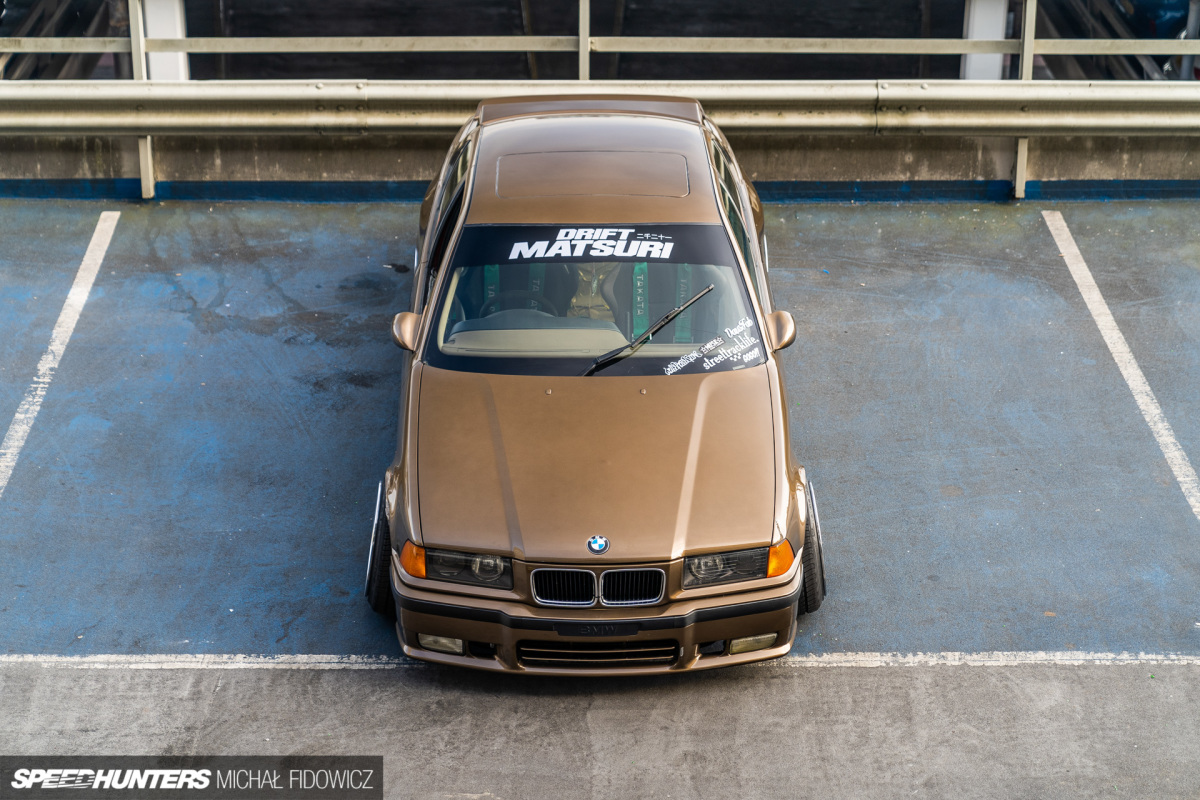
Inside the car, things are pretty basic. “A short shifter, two buckets, obviously the big hydro handbrake. A harness on each seat, a Hold Fast steering wheel, bolt-in roll cage and a fire extinguisher. It’s basic but does the job and allows me to drive the car how I want to.”
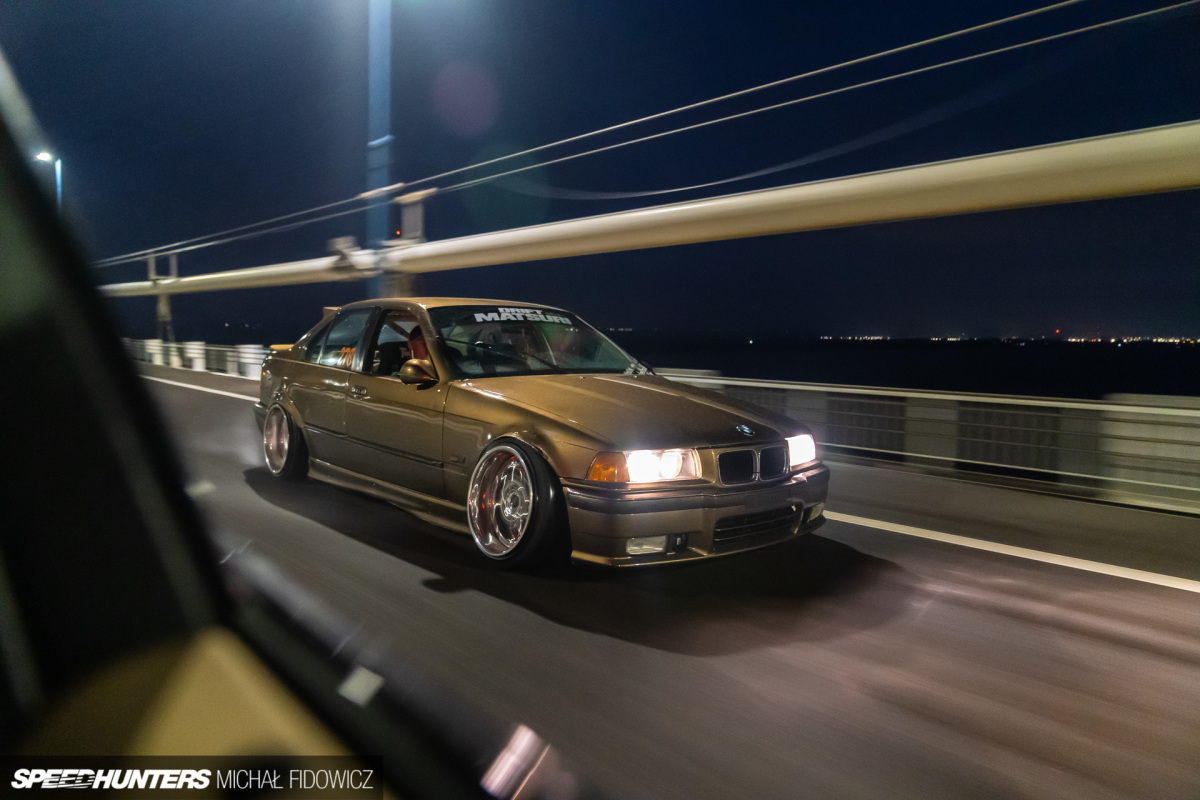
The suspension is again set up to make the E36 drive how Stu wanted it to, starting with HSD coilovers all round. The front has lock mods for big entries and angles at drift events. “I’ve got cut and welded E36 lower arms extended by 30mm. Modded hubs to shorten the Ackermann angle in favour of more front end grip on the leading wheel during drifting, and I’ve also got steering rack spacers. Oh, and a Purple Tag steering rack. I’ve also deleted the steering shaft bushes, turning it into a solid bar that improves the steering sensitivity,” he says.
The rear end is also set up to provide adjustability though a combination of camber arms and rear DausFab toe brackets. The differential is welded and originally from a 328i, paired with driveshaft spacers and strengthened subframe mounts. The rear also features shortened D Falkner rear springs.
Last but not least, Stu is running a dual brake calliper setup in the rear to give him even more control of the car whilst in action. “Yeah, it’s pretty dialled in now.”
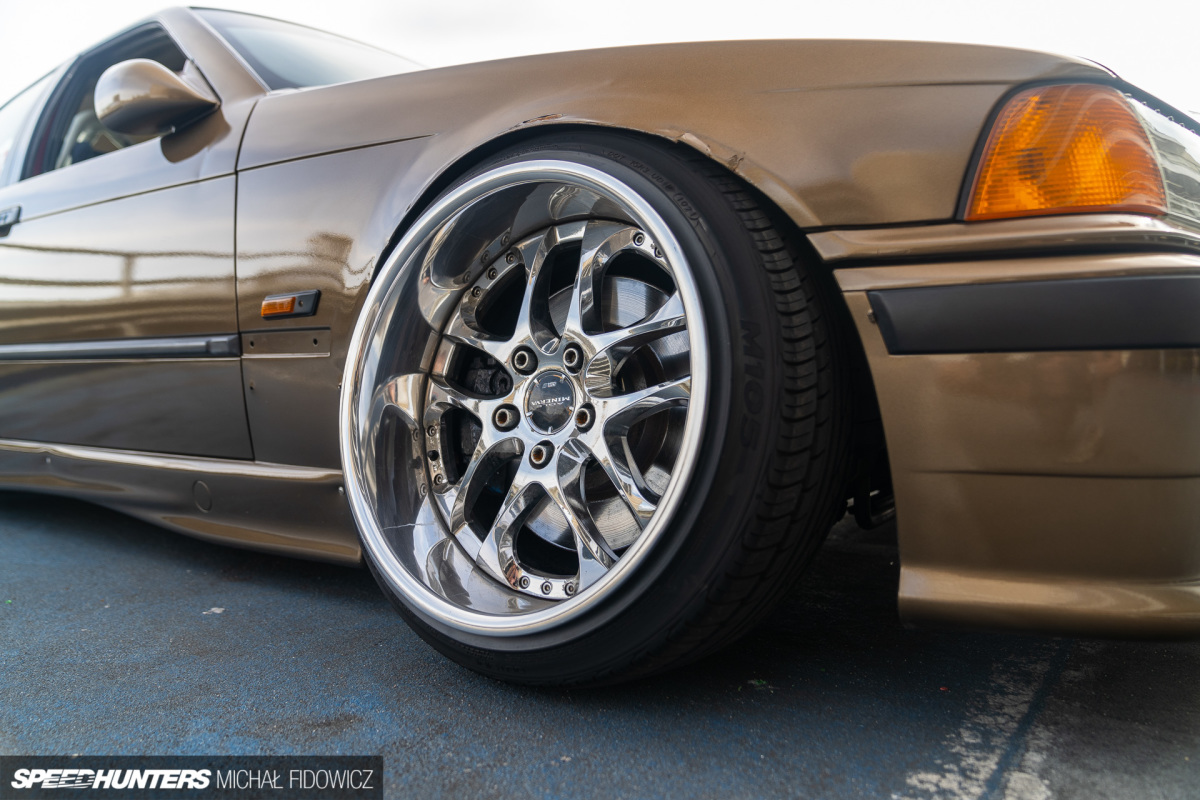
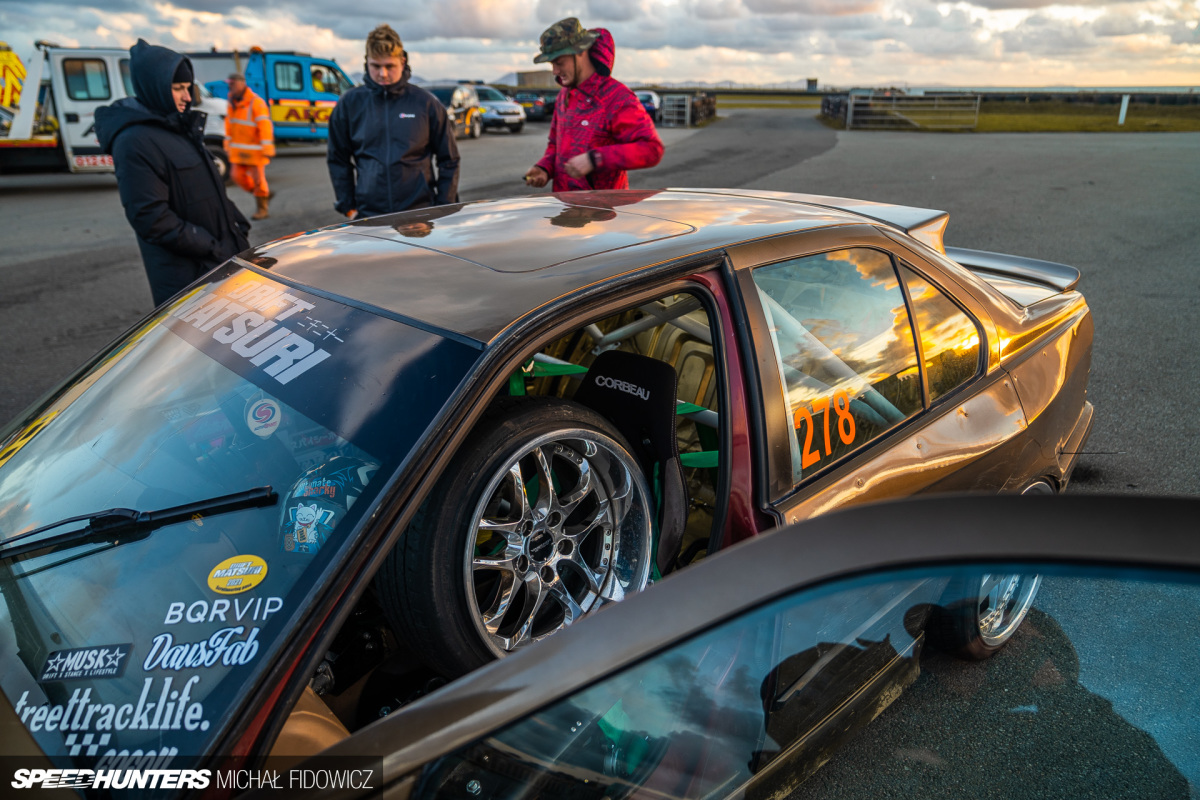
The icing on the cake is a major visual piece on the E36: the wheels. Being a drift car, I’ve seen Stu go through about a dozen different wheel setups, but the most glamorous of them all have to be the ones he has on for these photos. SSR Minervas measuring 17×10-inch up front, and SSR Agle Strusse wheels in 17×10.5-inch at the rear, both ends on stretched 215/40R17 tyres.
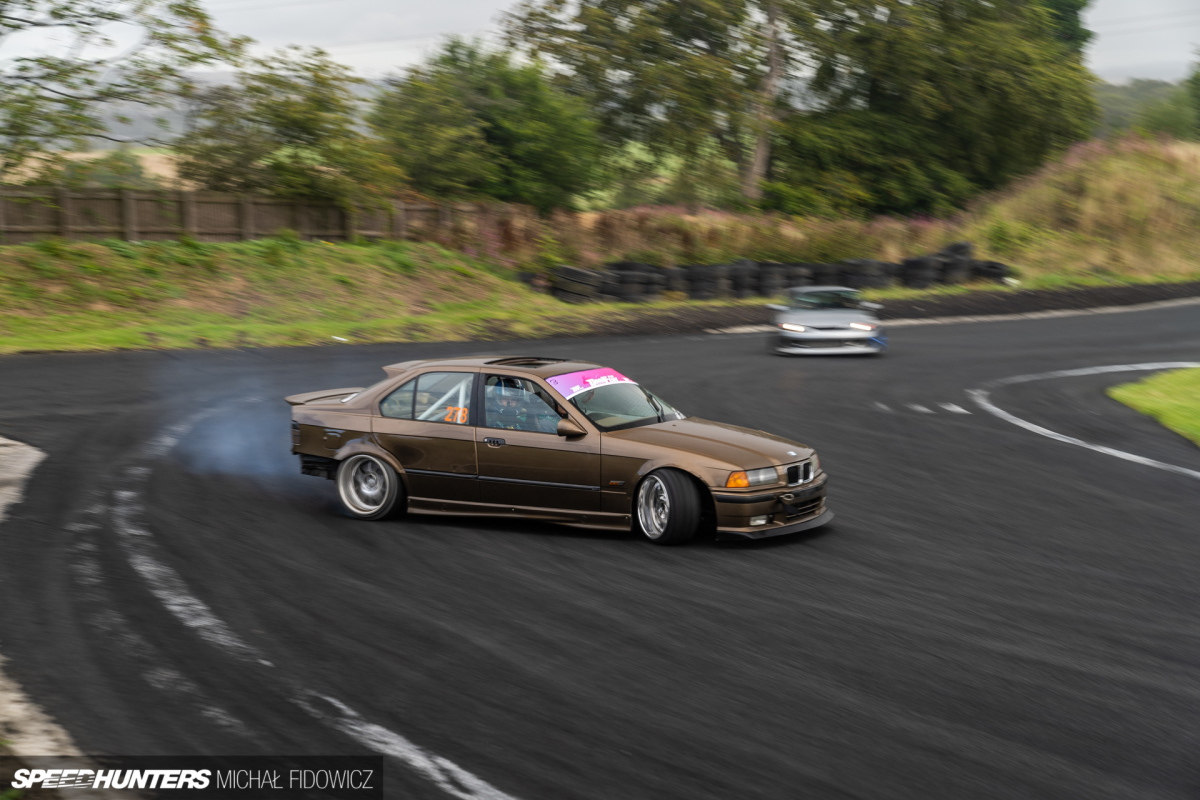
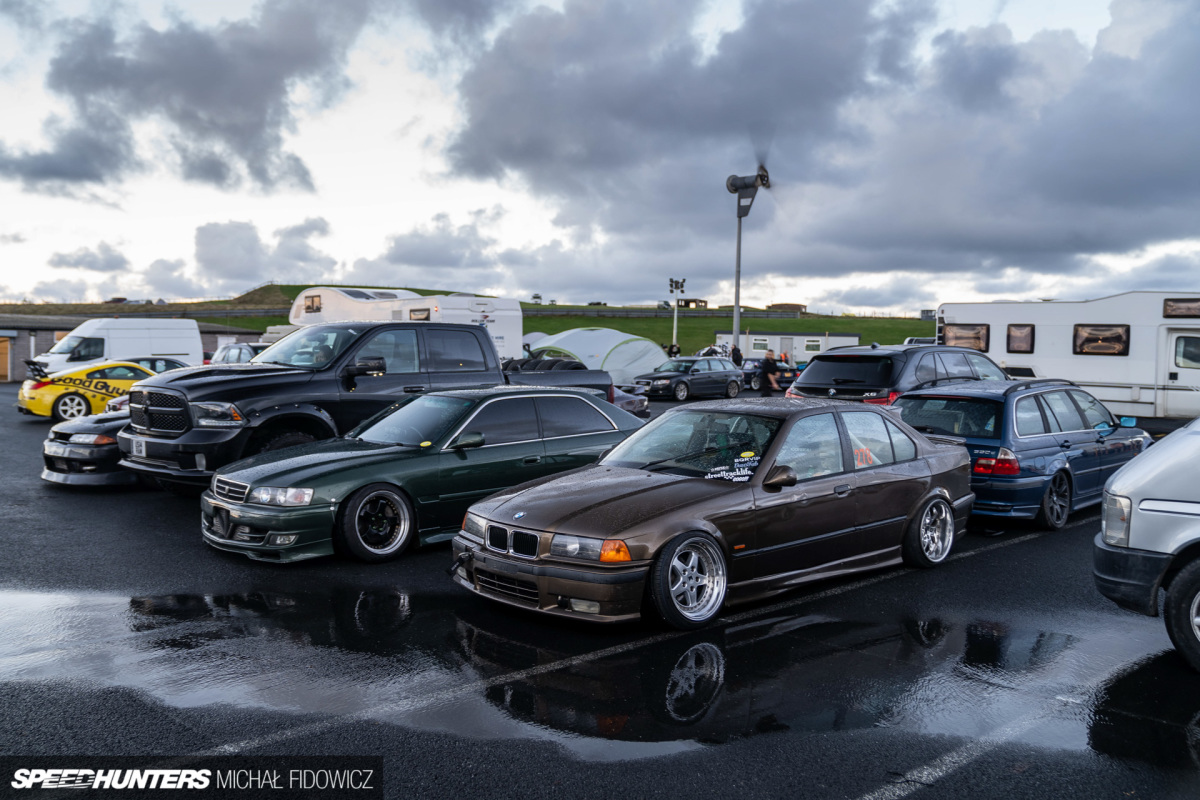
Keeping in mind that this story began with every E36 owner dreaming of a boosted, Japanese car instead, Stu’s final E36 version really punches up into this category. The car has never been on a dyno, but Stu and his friends reckon it should see 350bhp. Stu pedals the thing well and easily sticks to JZXs, S-chassis cars and just about anything else you might see at a drift day.
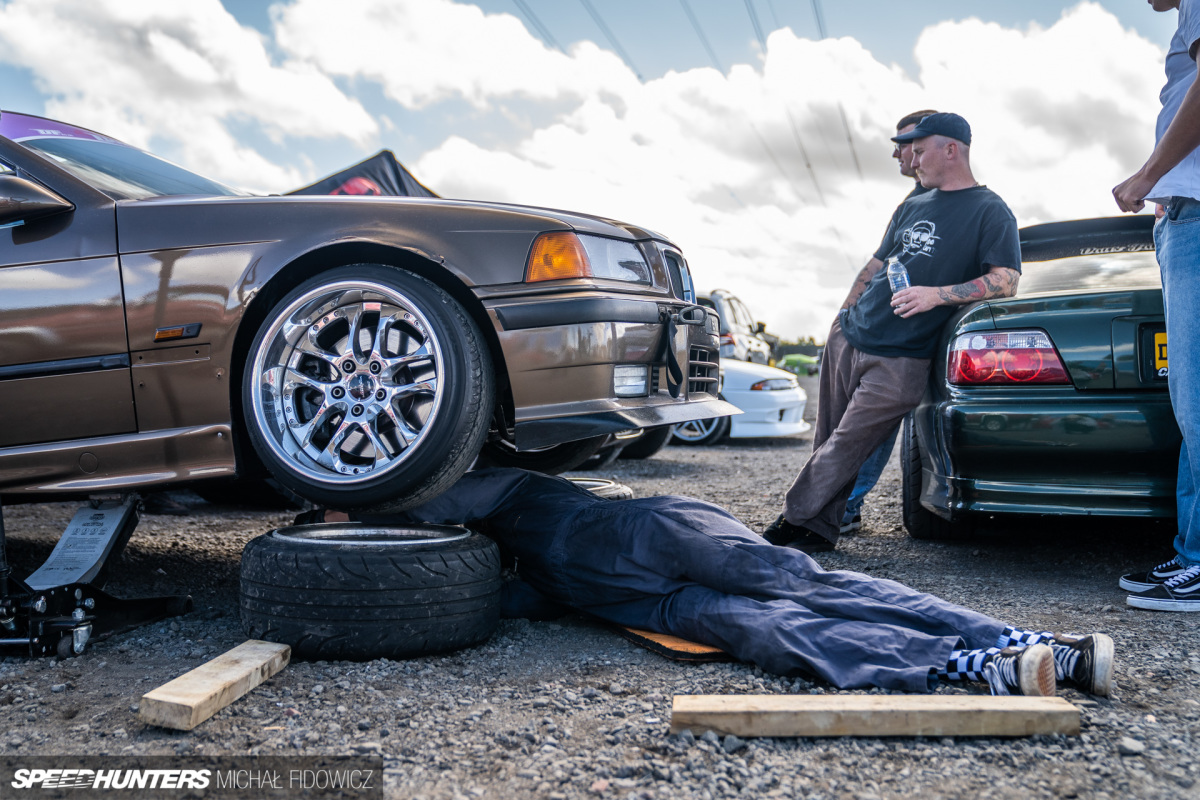
This car does get used and is testament to why and how the E36 chassis in general became the go-to for young enthusiasts on a budget across the world. It was only a matter of time before the world caught on and prices would rise, which happens to all cars with large enthusiast bases. It happened to classic Fords, it happened to Civics, and now it’s happened to E36s.
Our most recent trip to Scotland saw Stubo blow a gearbox (which he replaced in time for the second day on track) and unfortunately crash the car into a million pieces. But since then the BMW has been fixed.
The beauty of E36 is that parts are still relatively common. Sure, they’re no longer £12, but the availability is still there, and in comparison to other Japanese cars the parts are still a hell of a lot cheaper.
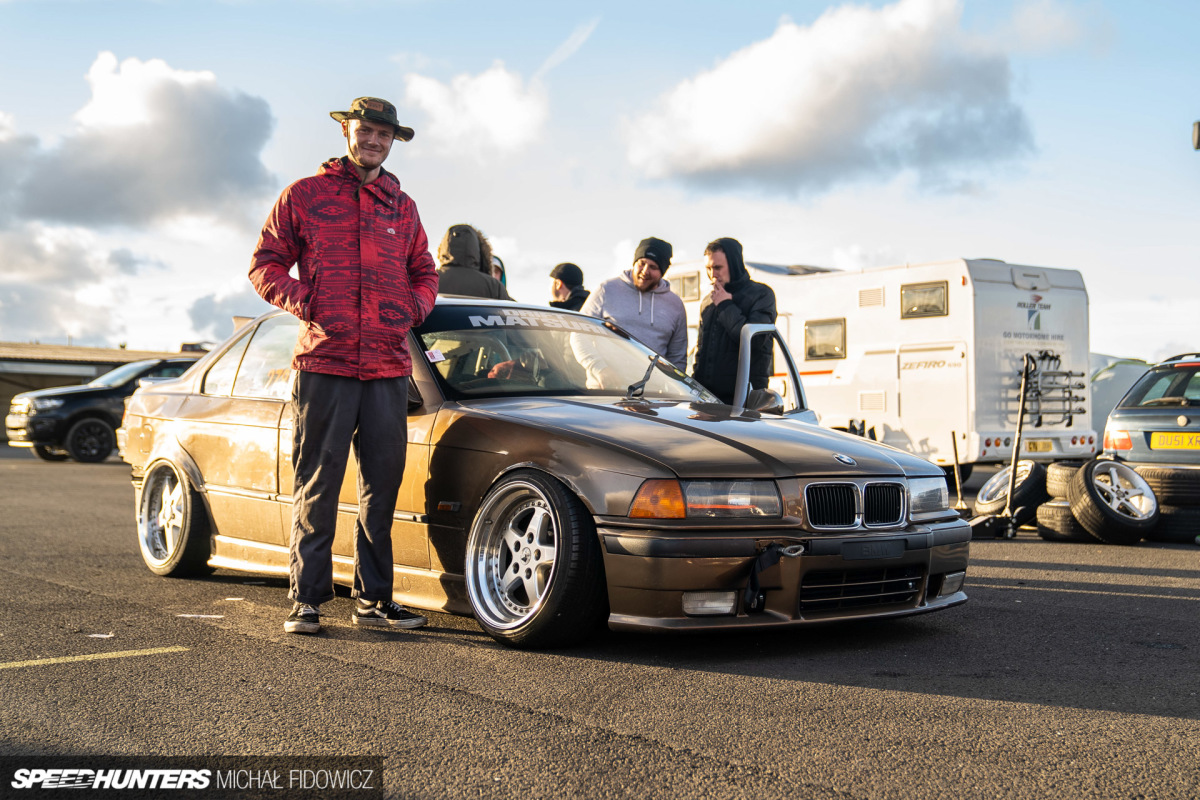
The issue today is getting your way into an E36 to begin with. Stubo’s whole build and the budget he built it on is a true product of its time. The late-2010s take on a manual six-cylinder German sedan coming in at a £150 starting price that will now cost you a couple thousand for a rusty, automatic four-cylinder version, simply because you and I are three years too late to the party.
We have already missed the E36 gold rush, but Stuart Burroughs didn’t. I’m glad he didn’t, because it meant I could enjoy this iconic chassis to its full potential through him.
Michał Fidowicz
Instagram: candyshowroom
